.

Copyright by Clinedinst
PRESIDENT ROOSEVELT
Washington
ITS SIGHTS AND INSIGHTS
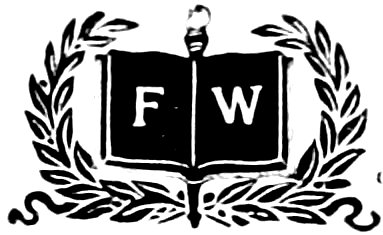
CONTENTS
| PAGE | ||
|---|---|---|
| I. | The City of Washington | 1 |
| II. | A Genius from France | 4 |
| III. | The Capitol Building | 12 |
| IV. | Interior of the Capitol | 17 |
| V. | The Rotunda | 21 |
| VI. | Concerning Some of the Art at the Capitol | 26 |
| VII. | The Senate Chamber | 33 |
| VIII. | The House of Representatives | 40 |
| IX. | Concerning Representatives | 46 |
| X. | The Supreme Court Room | 53 |
| XI. | Incidents Concerning Members of the Supreme Court of the United States | 58 |
| XII. | Teaching Patriotism in the Capitol | 67 |
| XIII. | People in the Departments | 73 |
| XIV. | Incidents In and Out of the Departments | 80 |
| XV. | Treasury Department | 84 |
| XVI. | Secret Service Department of the Treasury of the United States | 92 |
| XVII. | Post-Office Department | 100 |
| XVIII. | Department of Agriculture | 105 |
| XIX. | Department of Chemistry on Pure Foods | 109 |
| XX. | Department of the Interior | 114 |
| XXI. | Branches of the Department of the Interior | 121 |
| XXII. | Bureau of Indian Affairs | 126 |
| XXIII. | The Library of Congress | 131 |
| ivXXIV. | The Pension Office | 138 |
| XXV. | State, War, and Navy Departments | 146 |
| XXVI. | State, War, and Navy Departments (Cont’d) | 155 |
| XXVII. | Department of Commerce | 161 |
| XXVIII. | The Executive Mansion | 166 |
| XXIX. | Interests in Washington Which Can Not Here be Fully Described | 179 |
ILLUSTRATIONS
| PAGE | ||
| President Roosevelt | Frontispiece | |
| Bird’s-eye View of Washington, Looking East from the Monument | Between 4 and 5 | |
| Bird’s-eye View of Washington, Looking Down the Potomac from the Monument | Between 8 and 9 | |
| The Capitol | Between 12 and 13 | |
| Plan of the Principal Floor of the Capitol | 15 | |
| Brumidi Frieze in Rotunda | 22 | |
| Brumidi Frieze in Rotunda | 23 | |
| The First Reading of the Emancipation Proclamation | 27 | |
| Group I | Between 32 and 33 | |
| Statuary Hall | ||
| “Westward Ho!” | ||
| Washington Declining Overtures from Cornwallis | ||
| The Senate Chamber | ||
| Some Prominent Senators | ||
| The House of Representatives | ||
| Some Prominent Representatives | ||
| The Rotunda Bronze Door | ||
| The Mace | 41 | |
| The Speaker’s Room | 42 | |
| viSeating Plan of the Supreme Court Chamber | 54 | |
| Group II | Between 80 and 81 | |
| Justices of the Supreme Court | ||
| The Supreme Court Room | ||
| The Treasury Building | ||
| The Old Bureau of Engraving and Printing | ||
| The New Bureau of Engraving and Printing | ||
| Gallaudet College for the Deaf | ||
| The Smithsonian Institution | ||
| The National Museum | ||
| Macerating $10,000,000 of Money | 88 | |
| The Patent Office | 114 | |
| Group III | Between 128 and 129 | |
| The Bureau of Indian Affairs | ||
| The Congressional Library | ||
| Grand Stairway of the Congressional Library | ||
| The Rotunda (Reading-room) of the Congressional Library | ||
| The Pension Office | ||
| The State, War, and Navy Departments | ||
| The German Embassy | ||
| The British Embassy | ||
| The French Embassy | ||
| The Russian Embassy | ||
| One of the Bronze Doors of the Congressional Library | 133 | |
| The Declaration of Independence | 148 | |
| viiFish Commission Building | 163 | |
| Mrs. Roosevelt | 166 | |
| Group IV | Between 176 and 177 | |
| The President and Cabinet | ||
| New Entrance to the White House | ||
| New Wing of the White House | ||
| South Front of the White House | ||
| North Front of the White House | ||
| New Grand Corridor—White House | ||
| New State Dining-room—White House | ||
| Mount Vernon—From South Lawn | ||
| Tomb of Washington—Mount Vernon | ||
| Home of General Lee | ||
| Monument to the Unknown Dead, Arlington National Cemetery | ||
| The Washington Monument | ||
| Charlotte Corday | 181 | |
I
THE CITY OF WASHINGTON
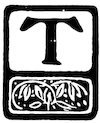
The City of Washington is the central point of interest of that stage on which is being performed the second century act in the great drama of self-government.
The actors here are the representatives of 85,000,000 of people. The spectators are all the peoples of the world, to be succeeded by those of all future ages.
If this experiment in self-government should fail, all other republics will surely perish; but we believe that the Republic of the United States of America has taken its place as a fixed star in the galaxy of great nations, and that the stars on its flag will not be dimmed till dimmed in the blaze of humanity’s millennium. Therefore, the actors and the buildings of this great city, which are parts of the dramatis personæ and the furniture of the stage, can not fail to be interesting to any child of the republic.
Baron Humboldt, in 1804, when standing on the west balcony of the Capitol building, said: “This 2point gives the most beautiful view of its type in the world.”
Senator Sumner said: “The City of Washington is more beautiful than ancient Rome.”
Besides what one can behold of the great city from that point, across the Potomac can be seen the heights of Arlington, where sleep so many of the sacred dead of the nation.
The place is also famed as having been the home of Robert E. Lee, noted in early days for a generous Southern hospitality. If walls could speak, what thrilling stories of chivalrous men and fair women could be there heard!
On the south of Washington, in plain view, lies the quaint old town of Alexandria, where Ellsworth was killed, while far to the north is Howard University, used chiefly for the education of colored people—the one the type of the departing past, the other the emblem of the possibilities of a coming hopeful future.
Washington is the only city in the world built exclusively to serve as a capital. Just after the Revolution, Congress, sitting in Philadelphia, was grossly insulted by the unpaid returning troops, against whom the city offered no adequate protection. Congress then adjourned to the collegiate halls of Princeton, where resolutions were offered to erect buildings for the exclusive use of Congress, either on the Delaware River or on the Potomac River.
Several States were applicants for the permanent seat of government, but diplomacy and a good dinner settled the question in favor of its present site.
We are apt to think everything was done in that 3day on the high plane of patriotism, but prejudice, provincialism, and avarice each played its part.
Hamilton was desirous of having his treasury policy adopted. The North favored this policy, but the representatives from that section, accustomed to the comforts of New York and Philadelphia, had no inclination to establish the Capitol on a swampy Southern plantation, away from the usual lines of travel.
Washington was with the South. Jefferson gave a great dinner, where, under the influence of rare old wine and the witching words of Hamilton, Northern ease, in exchange for Southern consent to the treasury policy, gave way to the Southern desire that the nation’s Capitol should be located in its present position.
The land was purchased from four planters—Young, Carroll, Davidson, and David Burns. Mr. Burns was not willing to part with his land at the rates offered. When Washington remonstrated, the old Scotchman said: “I suppose, Mr. Washington, you think that people are going to take every grist that comes from you as pure grain; but who would you have been if you had not married the widow Custis?”
Posterity is apt to inquire, Who would ever have heard of the widow Custis if she had not married George Washington?
But government had ways, then as now, of bringing about conclusions when property was wanted for public purposes.
II
A GENIUS FROM FRANCE
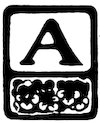
Among the pathetic figures of the early days of the Capitol City is that of Major Pierre Charles L’Enfant, who was selected by Washington to draft plans for the new city.
L’Enfant was a skilful engineer who had come to America with Lafayette in 1777. He did not go back to France with his countrymen in 1783, but remained in this country, and was employed by Washington as an engineer in several places.
He devoted the summer of 1791 to planning, not the capital of a small nation, but a city which could be sufficiently enlarged should this continent be densely populated from the Atlantic to the Pacific.
There was no other man in this country at that time who had such knowledge of art and engineering as Major L’Enfant. Plans of Frankfort-on-the-Main, Carlsruhe, Amsterdam, Paris, Orleans, Turin, Milan, and other European cities were sent to him from Philadelphia by Washington, who had obtained the plan of each of these cities by his own personal effort.

Photo by Clinedinst
BIRD’S-EYE VIEW OF WASHINGTON, LOOKING EAST FROM THE MONUMENT
5Washington himself desired the new city planned somewhat like Philadelphia, a plain checkerboard, but L’Enfant, while making the checkerboard style the basis, diversified, beautified, and complicated the whole by a system of avenues radiating from the Capitol as the centre and starting-point of the whole system. The streets running east and west are designated by letters. They are divided into two classes or sets—those north of the Capitol and those south of it. Thus, the first street north of the Capitol is A Street North, and the first street south of it is A Street South, the next is B Street, North or South, as the case may be, and so on. These distinctions of North, South, East, and West are most important, as forgetfulness of them is apt to lead to very great inconvenience.
The streets are laid off at regular distances from each other, but for convenience other thoroughfares not laid down in the original plan have been cut through some of the blocks. These are called “half streets,” as they occur between, and are parallel with, the numbered streets. Thus, Four-and-a-half Street is between Fourth and Fifth streets, and runs parallel with them.
The avenues run diagonally across the city. New Jersey, Pennsylvania, Maryland, and Delaware avenues intersect at the Capitol, and Pennsylvania, New York, Vermont, and Connecticut avenues intersect at the President’s house. Pennsylvania Avenue is the main thoroughfare. It is one hundred and sixty feet wide, and extends the entire length of the city, from the Eastern Branch to Rock Creek, which latter stream separates Washington from Georgetown. It was originally a swampy thicket. The bushes were cut away to the desired width soon after the city was laid off, but few persons cared to settle in the swamp. Through the exertions of President Jefferson, it was planted with four rows of fine Lombardy poplars—one on each 6side and two in the middle—with the hope of making it equal to the famous Unter den Linden, in Berlin. The poplars did not grow as well as was hoped, however, and when the avenue was graded and paved by order of Congress in 1832 and 1833 these trees were removed. Pennsylvania Avenue is handsomely built up, and contains some buildings that would do credit to any city. The distance from the Capitol to the President’s house is one mile, and the view from either point along the avenue is very fine.
Every circle, triangle, and square dedicated to monuments bears testimony to the taste of the original design. So little respect, however, was held for Major L’Enfant’s plans that Daniel Carroll, one of the original owners of the land, was in the act of building a handsome house right across New Jersey Avenue. L’Enfant ordered it torn down. This was done, much to the disgust of Carroll and to the indignation of the commissioners. The government rebuilt the house for Carroll, but was careful to place it in a more suitable location. The old Duddington House, on Capitol Hill, was long a landmark of the early Washington architecture.
There were some other acts of irritability on the part of L’Enfant, acts which now show his just appreciation of his own great work. He was paid $2,500 for his services and dismissed. He believed he should have been pensioned, as would have been done in Europe.
Afterward he saw the city expand as the nation grew strong, while he, a disappointed, poverty-stricken man, wandered, a pathetic figure, about the 7Capitol until 1825, when he died. He had lived for years on the Diggs farm, about eight miles from Washington, and was buried in the family cemetery in the Diggs garden, and when the dead of that family were removed his dust was left there alone—to sleep in an unmarked grave.
Mr. Corcoran, the great banker of Washington, who died in 1888, said he remembered L’Enfant as “a rather seedy, stylish old man, with a long green coat buttoned up to his throat, a bell-crowned hat, a little moody and lonely, like one wronged.” The heart of a stranger in a strange, ungrateful land.
The City of Washington is his monument. No one can now rob him of that honor. Let us hope that he has awakened in His likeness and is satisfied.
Could the Colonial Dames or the Daughters of the Revolution do a more beneficent and popular act than to mark the resting-place of Peter Charles L’Enfant, who drew the original plans of that city which will eventually become the most beautiful city in all the world?
The letters of General Washington abound in references to the difficulty of obtaining money to fit the new city for capital purposes. Virginia made a donation of $120,000 and the State of Maryland gave $72,000. Afterward the latter State was induced to loan $100,000 toward fitting the city for a capital.
The City of Washington was officially occupied in June, 1800. Since then it has been the ward of Congress. Strangers, even at this late day, often comment on the long distance between the Capitol building and the Executive Mansion; but Washington strongly impressed 8upon the mind of Major L’Enfant that the latter must be at a considerable distance, so that members of Congress should not fall into the habit of coming too frequently to call upon the President, and thus waste the time of the executive head of the nation.
It is not the purpose in these sketches to dwell too much on the history of Washington, but rather to make a picture of the city as it is in the first decade of the twentieth century. A glimpse of it, however, in the summer of 1814 is really necessary to complete our references to the early days of the nation’s capital.
In 1814 the city was captured by a small British force under General Ross, and both wings of the Capitol building, with its library and almost all the records of the government up to that date, were destroyed by fire, also the White House, as the Executive Mansion was even then called, and most of the departments, including the Navy-yard.
Mrs. Madison, in a letter to her sister, gives a graphic picture of the time:
“Dear Sister,—My husband left me yesterday morning to join General Winder. He inquired anxiously whether I had courage or firmness to remain in the President’s house until his return on the morrow or succeeding day, and on my assurance that I had no fear but for him and the success of our army, he left me, beseeching me to take care of myself and of the Cabinet papers, public and private. I have since received two despatches from him, written with a pencil; the last is alarming, because he desires that I should be ready at a moment’s warning to enter my carriage and leave the city; that the enemy seemed stronger than had been reported, and that it might happen that they would reach the city with intention to destroy it.
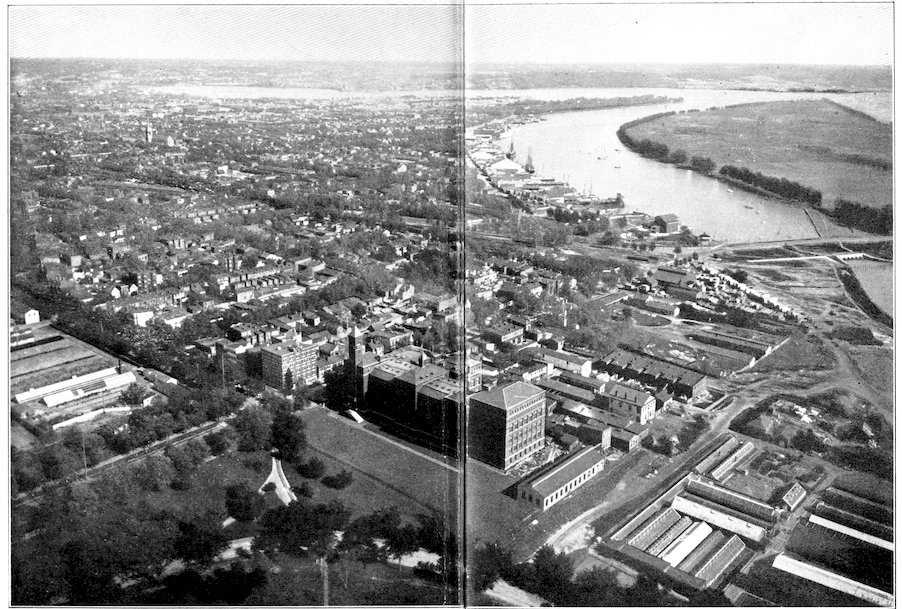
Photo by Clinedinst
BIRD’S-EYE VIEW OF WASHINGTON, LOOKING DOWN THE POTOMAC FROM THE MONUMENT
9“... I am accordingly ready; I have pressed as many Cabinet papers into trunks as to fill one carriage; our private property must be sacrificed, as it is impossible to procure wagons for its transportation. I am determined not to go myself until I see Mr. Madison safe and he can accompany me, as I hear of much hostility toward him.... Disaffection stalks around us.... My friends and acquaintances are all gone, even Colonel C., with his hundred men, who were stationed as a guard in this enclosure.... French John (a faithful domestic), with his usual activity and resolution, offers to spike the cannon at the gate and lay a train of powder which would blow up the British should they enter the house. To the last proposition I positively object, without being able, however, to make him understand why all advantages in war may not be taken.
“Wednesday morning (twelve o’clock).—Since sunrise I have been turning my spyglass in every direction and watching with unwearied anxiety, hoping to discover the approach of my dear husband and his friends; but, alas! I can descry only groups of military wandering in all directions, as if there was a lack of arms, or of spirit, to fight for their own firesides.
“Three o’clock.—Will you believe it, my sister? We have had a battle, or skirmish, near Bladensburg, and I am still here within sound of the cannon. Mr. Madison comes not—may God protect him! Two messengers, covered with dust, come to bid me fly; 10but I wait for him.... At this late hour a wagon has been procured; I have had it filled with the plate and most valuable portable articles belonging to the house; whether it will reach its destination, the Bank of Maryland, or fall into the hands of British soldiery, events must determine. Our kind friend, Mr. Carroll, has come to hasten my departure, and is in a very bad humor with me because I insist on waiting until the large picture of General Washington is secured, and it requires to be unscrewed from the wall. This process was found too tedious for these perilous moments. I have ordered the frame to be broken and the canvas taken out; it is done, and the precious portrait placed in the hands of two gentlemen of New York for safe-keeping. And now, my dear sister, I must leave this house, or the retreating army will make me a prisoner in it by filling up the road I am directed to take. When I shall again write to you, or where I shall be to-morrow, I can not tell.”
We all know the story of Mrs. Madison’s flight, of her return in disguise to a desolated, burned, ruined home. She would have been without shelter except for the open door of Mrs. Cutts, her sister, who lived in the city. From that point she visited the ruins of all the public buildings while she awaited her husband’s return.
We are apt to think of the White House as a place of teas, receptions, gayly dressed people, light, music, flowers, and laughter; but it, too, has seen its tragedies.
11Fifty years after the burning of the city the famous Stuart picture of Washington, referred to in Mrs. Madison’s letter, was retouched and hung in the East Room, and still constitutes one of the few ornaments of the Executive Mansion.
III
THE CAPITOL BUILDING
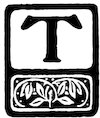
The corner-stone of the old Capitol, which constitutes the central portion of the new edifice, was laid the 18th of September, 1793, by General Washington, in the presence of a great concourse of people and with imposing ceremonies.
The corner-stones of the wings were laid by President Fillmore, July 4, 1851. Webster delivered the oration of the occasion.
The old building is of yellow sandstone, kept painted white to beautify and preserve it; the wings are of white marble. On its central portico all our Presidents, from Andrew Jackson to President McKinley, have taken the oath of office. President Roosevelt took the oath of office at Buffalo. This building, which fronts the east, was set in accordance with the astronomical observations of Andrew Ellicott, an engineer from Bucks County, Pennsylvania, who succeeded Major L’Enfant as general surveyor and engineer in the new city.
Ellicott is described as bearing a marked resemblance to Benjamin Franklin, except that he was more of a Quaker in appearance, wearing a long, fine gray broadcloth coat and a Quaker hat. He awaits the resurrection in an unmarked grave at Ellicott City, Maryland.

Photo by Clinedinst
THE CAPITOL
13The original building was constructed from plans submitted by Stephen Hallet, the work undergoing some modifications from the plans of Dr. William Thornton.
The great wings were added during Fillmore’s administration from designs submitted by Thomas N. Walter, architect, who not only superintended the building of the additions, but also managed to harmonize them with the original design.
Years ago it was quite the fashion for Americans returning from Europe to make disparaging remarks concerning the Capitol building, but that spirit seems to have passed away, and the dignity, grace, and beauty of its architecture now receive universal commendation.
Prince Henry of Germany remarked of this noble structure: “For Capitol purposes it surpasses every other building in the world. Its architectural beauty is most impressive.”
It is not our purpose to give a minute description of the building. We have said that it faces east, for the founders of the Capitol believed the city would grow in that direction, but the landholders of early days asked such high prices that the city began to stretch toward the northwest, which is to this day the fashionable part for residences, although Capitol Hill is much more beautiful as to situation.
The base of the building is ninety-seven feet above the river. The central structure is of Virginia yellow sandstone, which is kept painted white. The wings are of Massachusetts marble, and the one hundred columns of the extension porticoes are of Maryland marble.
14The building covers three and one-half acres. It is seven hundred and fifty-one feet long and three hundred and fifty feet wide.
The height of the dome above the rest of the building is two hundred and fifty-seven feet, and its weight is eight million pounds. This dome is surmounted by Crawford’s statue of Freedom, nineteen and one-half feet high, and weighing fifteen thousand pounds. The entire edifice constitutes the highest public building in America not located on a mountain, being sixty-eight feet higher than Bunker Hill monument, and twenty-three feet higher than the steeple of Trinity Church, in New York City.
Thomas G. Walker resigned his place as architect in 1865, and was succeeded by the late architect of the Capitol, Mr. Edward Clark, who died early in 1902. His great work had been to finish the west front facing the city, and to harmonize the conflicting and foreign tastes of the many decorators of the building.
Mr. Elliott Wood, the successor of Mr. Clark, had been the latter’s chief assistant. Mr. Wood had long been virtually in charge of the Capitol.
The architects had a candidate ready because Mr. Wood was practically an engineer; to meet this and yet give a faithful man his due, the name of the position was changed to that of Superintendent of the Capitol. He, like his predecessor, has much to do in getting rid of the foreign artists’ effects and in Americanizing the whole.
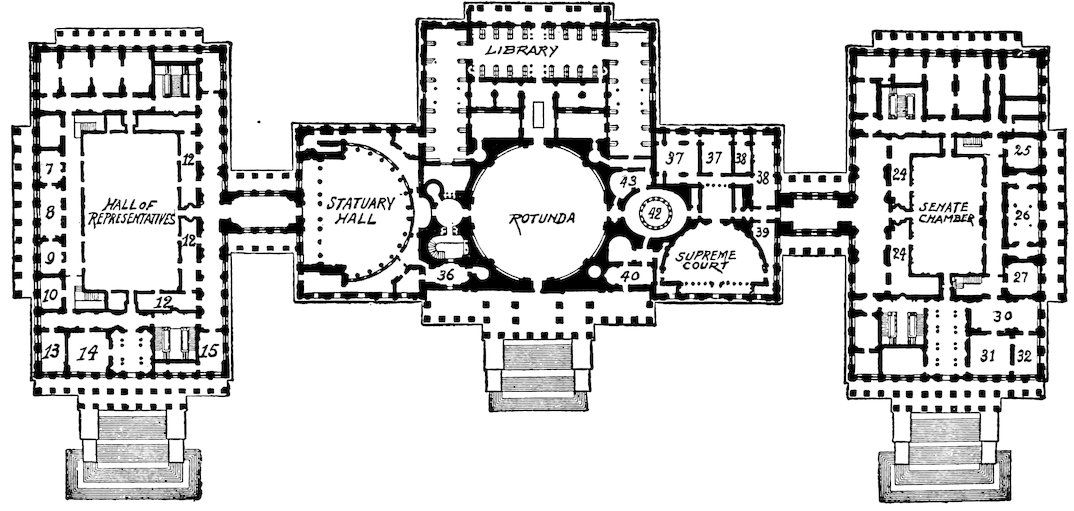
PLAN OF THE PRINCIPAL FLOOR OF THE CAPITOL
(Rooms numbered are for committees, etc.)
16Mrs. Mary Clemmer Ames says of the Capitol: “It not only borrowed its face from the buildings of antiquity, but it was built by men strangers in thought and spirit to the genius of the new republic, and to the unwrought and unembodied poetry of its virgin soil. Its earlier decorators, all Italians, overlaid its walls with their florid colors and foreign symbols; within the American Capitol they have set the Loggia of Raphael, the voluptuous anterooms of Pompeii, and the baths of Titus. The American plants, birds, and animals, representing prodigal nature at home, are buried in twilight passages, while mythological barmaids, misnamed goddesses, dance in the most conspicuous and preposterous places.”
An Art Commission was appointed as early as 1859 to decide on all artistic decorations, and it has done much. More remains to make the Capitol, like the Library of Congress, the highest exponent of the thought, taste, and artistic execution of the period which produced it.
IV
INTERIOR OF THE CAPITOL
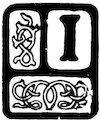
In 1808 Jefferson made Benjamin Henry Latrobe supervising architect of what we now call the old Capitol, being the central portion of the present building.
He constructed the original Senate Chamber, now the Supreme Court Room, on the plan of the old Greek theater, the general outline of which it yet retains. The House (now Statuary Hall) also had a decidedly Grecian aspect. It was finished in 1811. Statuary Hall is semicircular in shape, and has a vaulted roof. Its ornamentation is not yet completed. This is right. It would not be well to occupy all the space in one generation. We need the perspective of time to know that which will be of permanent interest to the world.
Here Clay presided, here Webster spoke, and here Adams stood for the right of petition and for the abolition of human slavery. What pictures these scenes would make! A plate in the floor southwest of the center marks the spot in the House where John Quincy Adams fell stricken with paralysis. In a room opening from the Hall is a memorial bust, whose inscription reads: “John Quincy Adams, who, after fifty years of public service, the last sixteen in yonder Hall, was summoned to die in this room February 23, 1848.”
18The room has special acoustic qualities which in early days occasioned much trouble. A whisper scarcely audible to the ear into which it is breathed is distinctly heard in another part of the hall. It is one of the most remarkable whispering galleries in the world, and its peculiar properties, accidentally discovered, produced no end of disturbances before they were fully understood. Their effect has been much modified by a recent change in the ceiling.
Each State is now permitted to place in Statuary Hall two statues of its most renowned sons.
Virginia has Washington and Jefferson. Think of that! New Hampshire has Daniel Webster, who made these walls echo with his thrilling, patriotic sentences, and John Stark, of Bunker Hill fame, who cried: “See those men? They are the redcoats! Before night they are ours, or Molly Stark will be a widow!”
Pennsylvania has Robert Fulton, the inventor, and John Peter Gabriel Muhlenberg, the preacher, Major-General in the Revolution. He was also Senator and Member of Congress. New York has Robert R. Livingston, of the Continental Congress, and Alexander Hamilton. The latter was Washington’s Secretary of the Treasury during both of his Presidential terms. He had much to do with securing a good financial system for the new government. His pathetic death enhanced his fame and ruined Burr; but under the search-light of history one can not help wondering had Burr been killed and Hamilton survived that duel, would the halo of the latter have faded? The statue of Hamilton is one of the best in the Hall. It was made in Rome by Horatio Stone.
19The Illinois memorial is the famous Vinnie Ream statue of Lincoln. I wish, because it was done by a woman, that I could like it, but it is weak and unworthy. In every line of his strong, patriotic face lived the gospel of everlasting hope. This figure might well stand for one vanquished in the race. (Was Jesus vanquished? Was Paul? Was Luther? Was Lincoln?)
There is a small bust of Lincoln, by Mrs. Ames, which approaches nearer the true ideal of the great apostle of Liberty.
Illinois is further represented by James Shields, Senator. It would seem that men like Washington and Lincoln, who were the product of national influences, should be venerated as representatives of the nation rather than of individual States.
Missouri is represented by Frank Blair and Thomas H. Benton; Vermont, by Jacob Collamer and Ethan Allen, the hero of Ticonderoga; Oregon, by Edward Dickinson Baker, whose fine statue is by Horatio Stone.
Jacques Marquette (by G. Trentanore), in the garb of a Catholic priest, represents Wisconsin. Ohio has President Garfield and William Allen.
Roger Sherman and John Trumbull represent Connecticut, and Rhode Island memorializes Roger Williams and General Nathanael Greene, of Revolutionary fame—the former, in his quaint sixteenth century garb, standing as well for religious freedom as for the State which he founded.
Massachusetts presents Samuel Adams’s statue, by Annie Whitney, and John Winthrop’s, by R. S. Greenough. 20What a goodly company they are, those New England heroes!
Will Kansas have the courage to place there the statue of John Brown, of Osawatomie? He yet is a type of that unconventional State, which regards no precedent, follows no pattern; that State which, in a blind way, is striving to put the Ten Commandments on top and to uphold the principles of the Sermon on the Mount, no difference what man or what party goes down in the strife; that State of which Whittier truthfully said:
A brave fight the State has made against fraud. The fight is yet on; but who doubts that the truth of God “shall yet prevail,” and who would better stand for such a people than one who went down in that fight with the “martyr’s aureole” around his grizzled head?
Much, of course, must be left untold here; but it is hoped that what has been said will create a desire to see and learn more of those whom the State and the nation has here honored. As good Mohammedans must visit Mecca, so every good American should see these things for himself, and decide on their merits from his own standpoint.
V
THE ROTUNDA
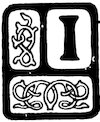
It is not the purpose in these sketches to go into any minute descriptions of places or things in Washington. To do that volumes would be needed, and then much left untold.
The Rotunda is the central part of the old building of the Capitol, and lies beneath the dome. It is circular in form, with a diameter of ninety-five feet, and with a height to the canopy above of a little over one hundred and eighty feet.
The panels of the Rotunda are set with life-size pictures, illustrating important scenes in American history. There are “The Surrender of Burgoyne, October 17, 1777”; “The Surrender of Cornwallis at Yorktown, Virginia, October 19, 1781”; and “The Resignation of Washington, December 23, 1783.” These are by Trumbull. They may not be perfect, considered as works of art, but they commemorate events whose memory should never die.
The surrender of Burgoyne was the greatest triumph of American over British arms up to that date (October 17, 1777). Had his twelve hundred Hessians been English patriots the result might have been different. When the British officer was sent to inquire their condition for a fight, the answer of the British 22was, “We will fight to a man.” But the Hessians replied, “Nix the money, nix the rum, nix fighten.”

BRUMIDI FRIEZE IN ROTUNDA
It was in a cold, drizzling rain that Lord Cornwallis made his surrender. He sat on his horse with his head uncovered. General Washington said, “Put on your hat, my lord; you will take cold.” He replied, “It matters not what happens to this head now.” In our exultation we are apt to forget his side.
No writer that I know of praises the scene of Washington’s resignation, yet the faces are so clear-cut that you recognize every face which other pictures have made familiar. The costumes are correct historical studies, and I would not wish a line of them changed.
Another picture of the Rotunda is “The Declaration of Independence.” How familiar, how dear each face has become, from Lee, Jefferson, Franklin, John Adams, Roger Sherman, and Livingston, to the plain Quaker who stands by the door! Adams afterward wrote: “Several signed with regret, and several others with many doubts and much lukewarmness.” That shows in the picture, and contrasts with the enthusiasm of the few, who with clear vision felt the dawn of a larger liberty for the race.
We are so apt to enjoy the music and forget the 23singer, to enjoy the painting and forget the artist, that we venture a reminder concerning Colonel John Trumbull, the artist aide-de-camp of General Washington. He studied art in this country and in Europe. In London he painted John Adams, our first Minister to England, and, in Paris, Thomas Jefferson, our Minister to France. General Washington gave him sittings, and he traveled through the entire thirteen colonies securing portraits. It was not until 1816, after thirty years of careful preparation, that Congress gave him the commission to paint the four great historical paintings now in the Rotunda. They are the best authentic likenesses now in existence of the persons represented.

BRUMIDI FRIEZE IN ROTUNDA
“The Embarkation of the Pilgrims,” by Wier, is considered the best picture of the Rotunda. All the self-sacrifice of leaving country, home, and friends is in the women’s faces, “All for God” is in the men’s faces. It is the little leaven of Puritanism which yet keeps this country sweet.
It is amusing to see the bands of Indians who are sent here to meet the “Great Father” stop before “The Baptism of Pocahontas,” painted by Chapman. Evidently neither the faces nor the costumes suit them, for they hoot and laugh, while they grunt with evident approval at the picture of Boone’s conflict with the 24savages and that of William Penn’s conference with the Indians of Pennsylvania.
At a height of sixty-five feet above the floor, and encircling the wall at that point, about three hundred feet in circumference, runs a fresco, by Brumidi and Castigni, in imitation high relief, which well depicts periods of American history, illustrating from the days of barbarism to civilization. It is incomplete at this time.
Brumidi was, while yet a very young man, banished from Italy for participating in an insurrection. He went to Mexico, and finally was brought to Washington through the instrumentality of General Meigs. His first work is in the room of the Committee of Agriculture of the House, where he represented Cincinnatus leaving the plow to receive the dictatorship of Rome; General Putnam, in a similar situation, receiving the announcement of the outbreak of the Revolution, and other fine works are scarcely appreciated by the clerks who daily work beneath them. For eight dollars a day, the compensation he first received, Brumidi did work which thousands of dollars could not now duplicate. Almost every one knows that Brumidi began the decoration of the frieze around the Rotunda of the Capitol. He had completed in charcoal the cartoons for the remainder of the decoration, and these drawings he left to his son, supposing that the designs would be purchased from him by the successor selected to complete the work. This man, however, obtained in some unknown way an idea of the sketches Brumidi had made, and attempted to carry them out without the aid of the originals.
25At the east door of the Rotunda are the famous bronze doors designed by Randolph Rogers at Rome in 1858, and cast at Munich. The high reliefs illustrate leading events in the life of Columbus.
From near the Rotunda one can ascend to the dome and overlook the entire District of Columbia.
VI
CONCERNING SOME OF THE ART AT THE CAPITOL
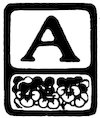
Among the interesting pictures in the Capitol is Frank B. Carpenter’s picture, “The First Reading of the Emancipation Proclamation, September 22, 1862.” Mr. Lincoln was accustomed to speak of the act which this picture represents as the central act of his administration. Historians have recorded it the leading event of the nineteenth century.
It changed the policy of the war, and was received by the army and the people as a necessary war measure. According to Mr. Carpenter, he takes the moment when Mr. Lincoln has just said: “Gentlemen, I now propose to issue this Emancipation Proclamation.”
Montgomery Blair said: “If you do, Mr. President, we shall lose the fall elections.” To this no one offered a reply. Mr. Seward, who sits in front of the table, said: “Mr. President, should we not wait for a more decisive victory, so that the rebels may know we are able to enforce the Proclamation?” Mr. Lincoln leaned forward and said, in a low voice: “I promised my God, if Lee were driven back from Maryland, to issue the Proclamation.” Mr. Seward said: “Mr. President, I withdraw every objection.” Chase, who stands back of the President in the picture, and who was not always in sympathy with Mr. Lincoln, laid his hand affectionately on Mr. Lincoln’s shoulder, to show the President that in this matter they were in perfect accord.
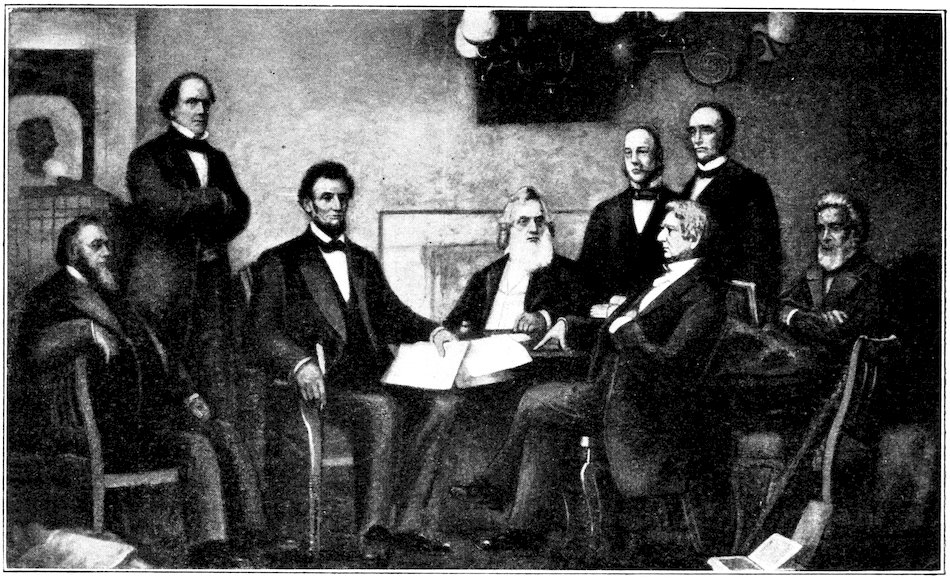
THE FIRST READING OF THE EMANCIPATION PROCLAMATION
28The Proclamation came just after the battle of Antietam, which was far from being a decisive victory. The Proclamation set forth that, unless rebellion ceased by January 1, 1863, the slaves at that time would be declared free. It was a case of “man’s extremity is God’s opportunity.”
Another picture which well merits a full description (which we have not space to give) is W. H. Powell’s spirited picture, “The Battle of Lake Erie, September 13, 1813.” It represents Commodore Perry transferring his colors from the disabled flagship Lawrence to the Niagara in the midst of a fire from the enemy. Perry deserved all the glory he so richly won.
Mary Clemmer Ames thus beautifully describes that great picture, “Westward the Star of the Empire Takes its Way.” The picture is in the stairway of the south wing:
“At the first glance it presents a scene of inextricable confusion. It is an emigrant train caught and tangled in one of the highest passes of the Rocky Mountains. Far backward spread the eastern plains, far onward stretches the Beulah of promise, fading at last in the far horizon. The great wagons struggling upward, tumbling downward from mountain precipice into mountain gorge, hold under their shaking covers every type of westward moving human life. Here is the mother sitting in the wagon front, her blue eyes gazing outward, wistfully and far, the baby lying on her lap; one wants to touch the baby’s head, it looks 29so alive and tender and shelterless in all that dust and turmoil of travel. A man on horseback carries his wife, her head upon his shoulder. Who that has ever seen it will forget her sick look and the mute appeal in the suffering eyes? Here is the bold hunter with his raccoon cap, the pioneer boy on horseback, a coffeepot and cup dangling at his saddle, and oxen—such oxen! it seems as if their friendly noses must touch us; they seem to be feeling out for our hand as we pass up the gallery. Here is the young man, the old man, and far aloft stands the advance-guard fastening on the highest and farthest pinnacle the flag of the United States.
“Confusing—disappointing, perhaps—at first glance, this painting asserts itself more and more in the soul the oftener and the longer you gaze. Already the swift, smooth wheels of the railway, the shriek of the whistle, and the rush of the engine have made its story history. But it is the history of our past—the story of the heroic West.”
There are pictures and busts, or full-length statues, of almost every great man of our nation. Some of them, within one hundred years, will be turned over to the man’s native State or town, with complimentary notes and speeches the inner meaning of which is: “We need the room for bigger men.”
Before leaving the Capitol plaza a word must be said of Horatio Greenough’s statue of Washington, which sits in lonely grandeur before the Capitol. Greenough was much in Rome, and the antique became his model. The statue represents Washington sitting in a large chair, holding aloft a Roman sword, the upper part 30of his body naked, the lower part draped as Jupiter Tonans.
This conception brings out the majestic benignity of the face of Washington, and shows to the life every muscle and vein of his magnificent form. Greenough said of his own work: “It is the birth of my thoughts; I have sacrificed to it the flower of my days and the freshness of my strength; its every lineament has been moistened with the sweat of my toil and the tears of my exile. I would not barter its association with my name for the proudest fortune that avarice ever dreamed of.”
The work, however, has met with more of criticism than of praise. A statue should represent a man in the costume of his time. Washington should have been shown either in the knee-breeches or in the full military costume of his period. We want no foreign effects in our statues. Washington had no aspiration to be either Jupiter or Mars, but he earnestly desired to be a good and useful man. As such he should be represented.
In this connection a few words in relation to the character of future paintings that shall be selected for the adornment of the nation’s great Capitol building may not be amiss.
In Paris, at the Exposition in 1900, the writer was greatly impressed by the manner in which France perpetuates historic events. The best picture of the commission which settled the Spanish-American War was painted by a Frenchman, the best picture of the Peace Commission at the Hague was also French. One picture, which will ever be valuable, represented President 31Carnot and his Cabinet in the Exposition of 1889 receiving the representatives of all the colonies of France.
Our country should have pictures of the inauguration of the President, with his leading men about him; also of the receptions on New-year’s day, showing faces of foreign Ministers, the Cabinet, Members of the Supreme Court, and our naval and military commanders.
I remember one brilliant company at Secretary Endicott’s, during the first Cleveland administration. The Ministers of various foreign nations, in court costumes and with all their decorations, were present. General Sheridan, full of life and repartee, was there. General Sherman had come over from New York to grace with his presence the reception given by the Secretary of War. General Greely, of Arctic fame, wore for the first time the uniform of a brigadier-general. All the leading army officers, in brilliant uniforms, were present. Senators Edmunds, Sherman, Logan, Evarts, Ingalls, Wade Hampton, Leland Stanford, Vance, Voorhees, Allison, with many others, were part of that memorable company. Mrs. Stanford wore the famous Isabella diamonds. Among the guests were Secretaries Vilas, Whitney, Bayard, and their accomplished wives; Mr. Carlisle, then Speaker of the House, and his stately, genial wife; and President and Miss Cleveland, who made an exception to the Presidential rule of non-attendance at such functions, and by their presence added to the pleasure of the occasion. Chief Justice Waite and Justices Field, Miller, Blatchford, Gray, and Strong were present.
32What a picture for history that representative company would now be! We need an art fund—perhaps the Carnegie University beneficence may provide it. Concerning the Capitol building, Charles Sumner said: “Surely this edifice, so beautiful, should not be open to the rude experiment of untried talent.”
The Commission of Artists said: “The erection of a great National Capitol occurs but once in the life of a nation. The opportunity such an event affords is an important one for the expression of patriotic elevation, and the perpetuation, through the arts of painting and sculpture, of, that which is high and noble and held in reverence by the people; and it becomes them as patriots to see to it that no taint of falsity is suffered to be transmitted to the future upon the escutcheon of our national honor in its artistic record. A theme so noble and worthy should interest the heart of the whole country, and whether patriot, statesman, or artist, one impulse should govern the whole in dedicating these buildings and grounds to the national honor.”
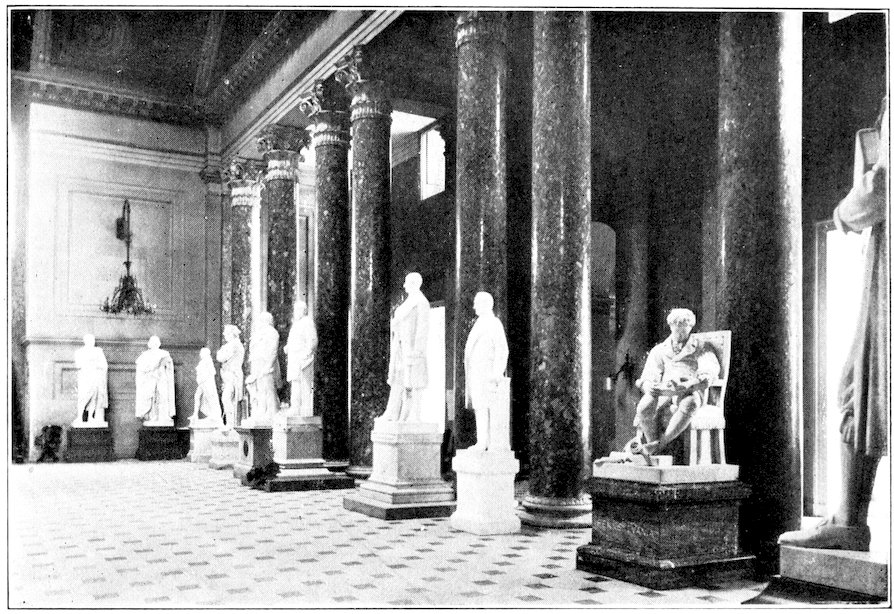
Photo by Clinedinst
STATUARY HALL
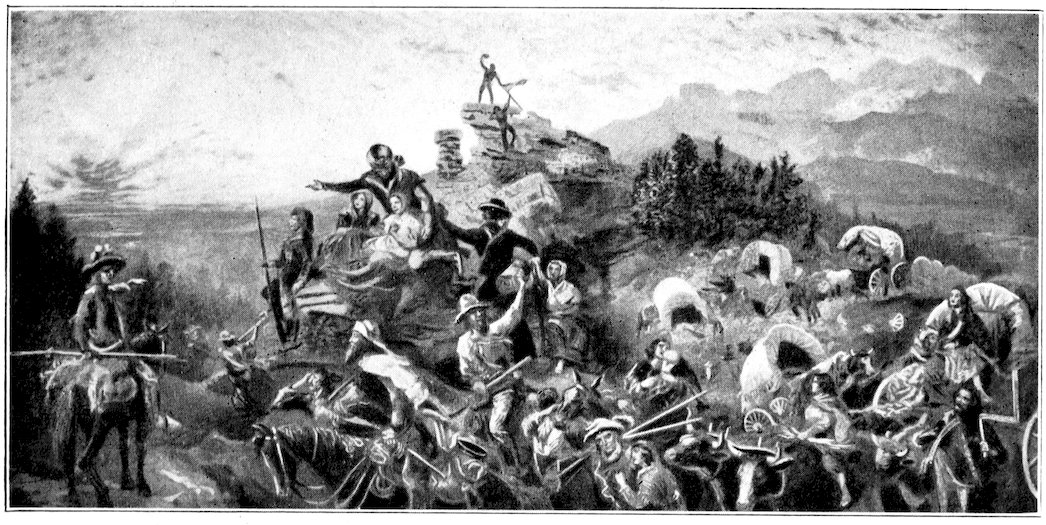
Photo by Clinedinst From the painting by Emanuel Leutze
“WESTWARD HO!”

Photo by Clinedinst From the painting by Brumidi
WASHINGTON DECLINING OVERTURES FROM CORNWALLIS
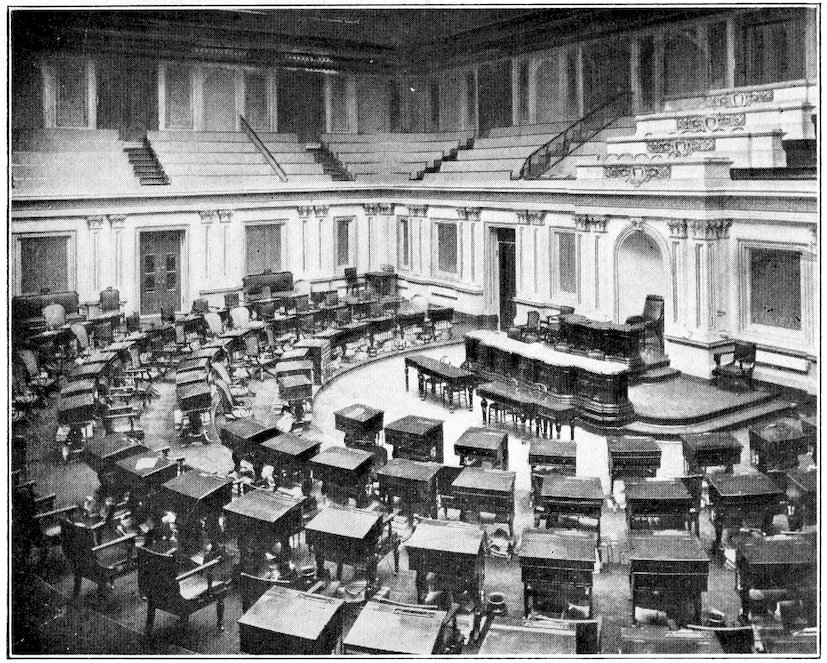
Photo by Clinedinst
THE SENATE CHAMBER

SOME PROMINENT SENATORS
William P. Frye (R.), Maine, President pro tem.
1. Marcus A. Hanna (R.), Ohio
2. John T. Morgan (D.), Ala.
3. Henry Cabot Lodge (R.), Mass.
4. Edward W. Carmack (D.), Tenn.
5. George F. Hoar (R.), Mass.
6. Henry M. Teller (S. R.), Col.
7. Benjamin R. Tillman (D.), S. C.
8. John C. Spooner (R.), Wis.
Photos of Senators Lodge and Spooner copyright by J. E. Purdy, Boston

Photo by Clinedinst
THE HOUSE OF REPRESENTATIVES

SOME PROMINENT REPRESENTATIVES
Joseph G. Cannon (R), Ill., Speaker
Copyright by J. E. Purdy, Boston, Mass.
1. William P. Hepburn (R.) Iowa
2. George B. McClellan (D.), N. Y.
3. J. D. Richardson (D.), Tenn.
4. Champ Clark (D.), Mo.
5. David A. De Armond (D.), Mo.
6. Charles E. Littlefield (R.), Me.
7. Sereno E. Payne (R.), N. Y.
8. J. W. Babcock (R.), Wis.
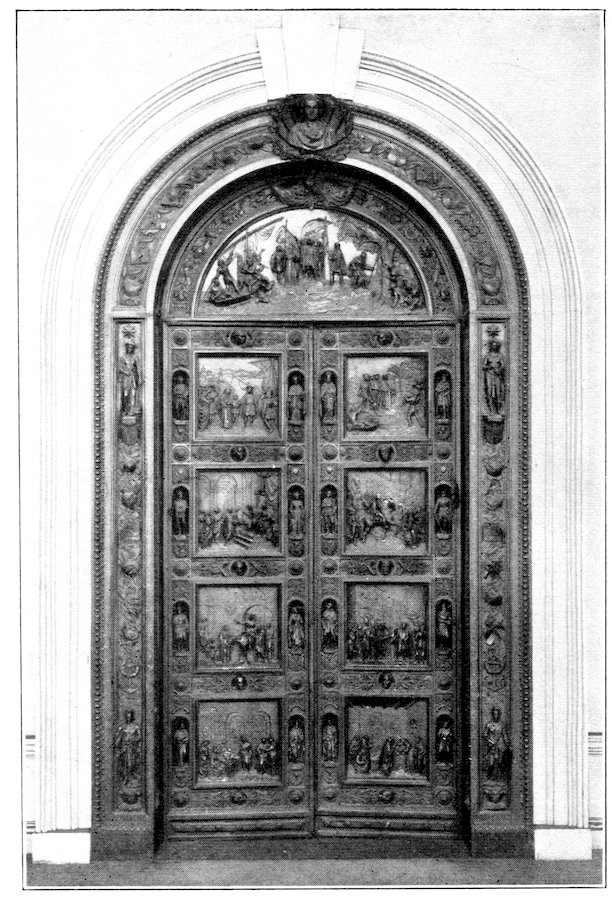
Photo by Clinedinst
THE ROTUNDA BRONZE DOOR
VII
THE SENATE CHAMBER

In visiting the Capitol building most people desire first to see the Senate Chamber, possibly from the fact that the names of the Senators are more familiar, because, as a usual thing, men have been long in public life before they have become Senators.
The Senate Chamber is 112 feet in length, 82 feet wide, and 30 feet high. The floor rises like that of an amphitheater; the walls are white, buff, and gold in color, and the ceiling consists of panels of glass, each one bearing the coat of arms of a State. Opposite the main entrance, on a platform of dark mahogany, are the desk and chair of the President of the Senate, who is the Vice-President of the United States, or, as in the present administration, a Senator elected by his colleagues to preside over them when the office of Vice-President has become vacant. Below the President is a larger desk for the use of the Secretary of the Senate and his assistants.
The heating and ventilating of the Senate Chamber is said to be very good. In winter, however, the room seems to be too warm. After an absence of fifteen years, I find men who have been in the Senate during that time have aged much more in appearance than their contemporaries outside.
The mahogany desks of the Senators stand on a 34moss green carpet, making a good color combination. The room is surrounded by a gallery which seats about a thousand persons. This gallery is divided. There is a private gallery for Senators’ families and friends, one part of which is set apart for the family of the President. It is seldom occupied by the dwellers in the White House, but often by visiting friends. The reporters’ gallery is over the Vice-President’s desk. There sit those busy, bright men who keep you informed of what the Senate is doing. The gallery opposite is for the diplomats. It is always interesting to watch the faces of these distinguished foreigners as they scan this body of lawmakers. Besides these there are the gallery for ladies, or for gentlemen accompanied by ladies, and the public gallery for men.
The Senate is the citadel of American liberty. Its great debates have defined our constitutional rights and duties, and prevented many violations of fundamental law. Here Clay, Calhoun, Webster, Benton, Chase, Sumner, Seward, Harrison, Edmunds, Evarts, Ingalls, Logan, and Wade Hampton, with hundreds of others equally eloquent and equally patriotic, have stood for the right as they saw it, or sold their souls for the mess of pottage.
The Republicans sit on the Vice-President’s left and the Democrats on the right. Although differing in ideas of governmental policy, we must believe both sides are actuated by a love of country.
The world is beginning to expect the United States to be the final court of appeals in behalf of the lesser nations, especially the other American republics. It is the Senate’s natural destiny, because of its treatymaking 35power, to facilitate a better understanding between nations, to prevent wrongs, to increase commerce, to secure international peace, and thus to improve the governmental powers of the world. So will our republic be the bridge over which the nations of the earth will enter on a period of universal education and modified self-government.
In my youth, on a visit to Washington, I saw Schuyler Colfax preside over the Senate. He was a nervous, restless man, who gave no attention to the Senator speaking, and while he was in the chair the Senate became a noisy, turbulent body. At another time, for a few hours, I saw Henry Wilson, who was Vice-President under Grant’s second term, preside over the Senate. Quiet, self-contained, serene, watchful, attentive, he was an ideal presiding officer. Every battle of life had left its mark on his strong, rugged face.
In December, 1885, I came to Washington and remained three years. Vice-President Hendricks had died, and the Senate, which was Republican, was presided over by John Sherman. He was in public life from 1848 to the time of his death, and his name was identified with almost every public measure from that time to the end of the century. He was a man of great wisdom and good judgment, but cold and without any of those qualities which tend to personal popularity. Later, John James Ingalls, of Kansas, was elected President pro tempore. Tall, stately, dignified, scholarly, thoughtful, a skilled parliamentarian, it is probable the Senate never had a better presiding officer. When Senator Ingalls occupied the chair the 36business of the Senate was put through with such celerity and dispatch that a visit to that usually prosy body became interesting.
Later, I saw Levi P. Morton, of New York, preside as Vice-President. He was a fine business man who had served his country with honor abroad, but had no training as a presiding officer. He was regarded as fair in his rulings.
The Senate is now presided over by Senator Frye, of Maine, who has had a long experience in legislative bodies, having served six terms as representative from Maine, and having been elected to the Senate in 1881, to fill the vacancy left by Blaine when he became Secretary of State under Garfield. He was also a member of the Peace Commission which met in Paris, September, 1898, to settle the terms of peace between the United States and Spain. He was elected President pro tempore of the Senate in 1896, and reelected March 7, 1901. He is considered extremely fair to both sides, and is an able officer.
When I take friends to the Senate now I notice they ask first for Mr. Hoar, of Massachusetts; Hanna, of Ohio; Spooner, of Wisconsin; Dollinger, of Iowa; Quay, of Pennsylvania; Hawley, of Connecticut; Lodge, of Massachusetts; Nelson, of Minnesota; Depew and Platt, of New York. Then strangers desire to see Tillman and McLaurin, of South Carolina; Vest, of Missouri, and Morgan, of Alabama.
When I was here from 1885 to 1888 the following were the stars: Edmunds, who for quiet strength, massive force, persistent effort, fertility of resource, and keen sagacity was never surpassed on the floor 37of the Senate. Like Mr. Hoar, his sentences in rhetorical and grammatical construction were fit for the Record just as they fell from his lips. William M. Evarts, of New York, famous as counsel in the Beecher trial, and attorney for the Republican party before the Electoral Commission. He seemed like a man about to do some great thing, but he originated no important national or international law. Leland Stanford, noted for his philanthropy and great wealth, and Wade Hampton and Senator Butler, both of South Carolina, were picturesque and interesting figures. General Logan, Don Cameron, Preston B. Plumb, Blackburn, and Beck, of Kentucky, stood next in interest, but most of these have given place to a younger generation.
The most interesting rooms in the north wing beside the Senate Chamber are the President’s room, Vice-President’s reception-rooms, and committee room of the District of Columbia.
The walls of the President’s room are in white and gold, with crimson carpet, table, and chair effects—rather high lights if one had to live in it, but very pleasing for the short visits made by the President to the Capitol. On the last day of each term of Congress the President comes to this room for an hour or two and signs any bills which yet remain. He also answers the perfunctory question as to whether he desires to present any further business to the Senate.
The Vice-President’s room is much more used. When the Vice-President in the Senate chamber grows tired “of weary lawyers with endless tongues,” he calls some one to the chair and slips into the Vice-President’s 38room, to rest and attend to his correspondence.
Among our Vice-Presidents who have occupied this room were William R. King, in the administration of Pierce; then John C. Breckenridge, under Buchanan; Hannibal Hamlin, Lincoln’s first Vice-President, and Andrew Johnson, his second Vice-President; Schuyler Colfax and Henry G. Wilson, under Grant (Henry G. Wilson died November 22, 1875, in this room); William A. Wheeler, Vice-President during Hayes’s administration; Chester A. Arthur, under Garfield for a short time; Thomas A. Hendricks, in the first Cleveland administration; Levi P. Morton, under Harrison; Adlai E. Stevenson, under Cleveland; Garrett A. Hobart, in the first McKinley term, and Theodore Roosevelt, in the second. In addition to these were many other distinguished men who were acting Vice-Presidents.
Garrett A. Hobart was the fifth Vice-President of the United States to die during his term of office. The others were Elbridge Gerry, William Rufus King, Henry Wilson, and Thomas A. Hendricks. Gerry was one of the great statesmen of the revolutionary period and hailed from Massachusetts. He was Vice-President in 1812, and died November 23, 1814, while on the way to the capital.
King, of Alabama, was chosen Vice-President in 1852. He was obliged to go to Cuba during the campaign on account of his health, and the oath of office was administered to him there by special act of Congress. He returned to the United States April 17, 1853, and his death occurred on the following day.
39Wilson, of Massachusetts, was elected Vice-President on the ticket with General Grant in 1872. He suffered a stroke of paralysis in 1873, and was infirm until the time of his death, which was caused by apoplexy November 22, 1875.
Hendricks, of Indiana, was elected on the ticket with Cleveland in 1884. He died in Indianapolis November 25, 1885.
VIII
THE HOUSE OF REPRESENTATIVES
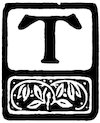
The Hall of Representatives is in the south wing of the Capitol, and is similar in form and design to the Senate Chamber, being semicircular, with a gallery of twelve hundred seating capacity extending around the entire hall.
Like the Senate, the walls are white, buff, and gold, and the ceiling panels of glass, each showing in connection with a State coat of arms the cotton plant in some stage of development.
The Speaker of the House sits at a desk of pure white marble, and in front of him are several desks for the Secretary and his many assistants.
A silver plate on each desk bears the name of its occupant. As in the Senate, the Republicans occupy the left of the Speaker and the Democrats the right.
When the House is in session the mace is in an upright position at the table of the Sergeant-at-Arms on the right of the Speaker, and when the House is adjourned, or in committee of the whole, it is removed.

THE MACE
The mace is a bundle of ebony rods, bound together with silver bands, having on top a silver globe, surmounted by a silver eagle. In the British House of Commons the mace represents the royal authority, but in the United States it stands for the power of the people, which, tho not present in bodily form, yet is a 41force always to be reckoned with. The one now in the House has been in use since 1842. The Sergeant carries it before him as his symbol of office when enforcing order, or in conducting a member to the bar of the House by order of the Speaker.
The Speaker’s room is across the lobby back of his chair, and is one of the most beautiful rooms in the building. It has velvet carpet, fine, carved furniture, large bookcases and mirrors, and its walls, as well as the walls of the lobby, are hung with the portraits of every Speaker, from our first Congress to the present one.
Most of the pictures in the House of Representatives with which I was familiar fifteen years ago have been removed. Now there remains but one—Brumidi’s fresco representing General Washington declining the overtures of Lord Cornwallis for a two days’ cessation of hostilities. Washington, like Grant, was an “unconditional surrender” man.
Each State is entitled to a number of Representatives in Congress, proportioned upon the number of its population. The State is districted by its own State Legislature. Then the district selects its own man, who is supposed to understand its wants and needs, and elects him to represent his people for two years.
42He must be twenty-five years of age, seven years a citizen of the United States, and a citizen of the State which he represents. There are about three hundred and fifty-six members and delegates. The latter represent the territories of Oklahoma, New Mexico, Arizona, and Hawaii.
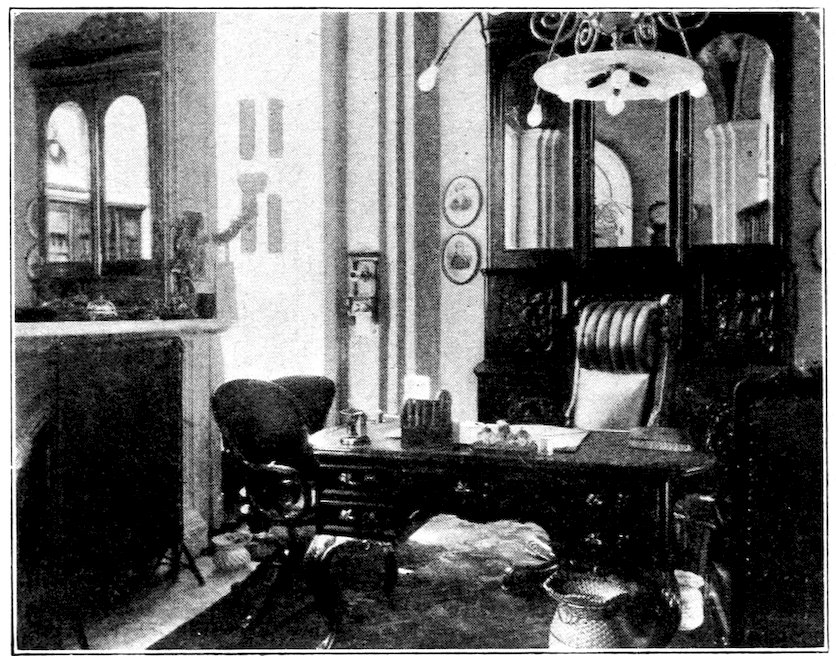
THE SPEAKER’S ROOM
Congress is an aggregate of selfish units, each fighting for his district. No doubt good influences prevail, but no one class of men, either the extremely good or the extremely bad, has the entire say, for law is the formulated average public opinion of the age and country in which it is made.
It can not be too strongly impressed upon the voters of this country that it is their duty to select good, 43strong, noble men with high convictions of public duty, and then to keep them in Congress term after term if they desire their district to be represented by anything more than a mere vote. Important places on committees are given men not alone in proportion to intellectual merit, but in proportion to Congressional experience. All men will not become leaders from remaining there a long time, but none will without it.
It is a wonderful thing to note the changes in the House since 1885. At that time John G. Carlisle was Speaker of the House. So fair in his rulings was Mr. Carlisle that one might spend hours in the gallery and be unable to decide which side he favored.
Samuel J. Randall and Roger Q. Mills, of Texas, were the leaders on the Democratic side, and the Mills bill concerning tariff the chief object of legislative interest before the country. Springer, of Illinois, and Breckenridge, of Kentucky; Crisp, of Georgia; Hooker and Allen, of Mississippi, were also among the leaders of the Democracy. Of these some are now out of politics, some are dead, and one disgraced.
Thomas B. Reed, of Maine, was the acknowledged leader of the Republican side, with McKinley, Cutcheon, Burrows, Boutelle, Holman, Butterworth, Henderson, Payne, Morrill, of Kansas, Negley, of Pennsylvania, and Cannon his backers.
It was great fun to see Reed come down the aisle ready to puncture the pet plans of the Democrats. In sharp, keen, extemporaneous, partisan debate he has never been excelled in this country, and possibly never in any other. No man ever appreciated his own power more accurately than he. He charged on few windmills; 44but when he placed himself in antagonism to a measure, it usually failed to pass, altho the Democrats had a working majority. When he became Speaker of the House, old members assured me, in spite of his name “Czar” Reed, he was not more arbitrary than either Blaine or Randall in the same position. As a presiding officer no man ever put the business of the House through more rapidly or more gracefully. He was a fine parliamentarian, quick in decisions and most able in his rulings.
My note on McKinley in 1885 says: “He can not be considered a leader, for a leader is one who can champion a party measure. This he can not do, as he is not keen in repartee—the opposition walk all over him; nor can he support a new man. He makes two or three well-prepared, eloquent speeches each year; these are usually on the tariff. He is a genial, pleasant gentleman, probably with more personal friends in the entire country than any one man now before the nation.”
William C. P. Breckenridge, of Kentucky, was considered the most eloquent man for a prepared speech on the Democratic side. But it was the eloquence of a musical voice, graceful gesture, and an abundant use of adjectives, not the eloquence of deep thought. While he was speaking it was hard to believe that it was not the best speech which could possibly be made on that subject. When one read it in the Record he wondered that he had been even interested.
In December, 1889, Mr. Breckenridge lectured in Clearfield, Pennsylvania, to the Teachers’ Institute. His subject was “Kentucky’s Place in History.”
45He began by saying: “I was a rebel. I am glad of it. If I had it to do again, I would do the same thing!” Now, think of that before a Northern audience, especially in a mountain county which is always noted for patriotism. If his audience had been petrified they could not more quickly have frozen in their places.
He told the thrilling story of Kentucky in words of matchless humor and pathos. He tried fun; no one smiled, I was sitting on the platform, and the stories were so amusing I was obliged to retire to the wings, as to laugh in the face of that angry audience would have been an indignity. He tried pathos. No one melted. As he came from the stage, I said: “Colonel, you gave a most eloquent address.”
“What in thunder is the matter with that audience?” he said. I replied: “When you said you did not regret being a rebel, and you would do the same again, you killed that audience so far as you were concerned.”
Just at that moment Mr. Matthew Savage, the County Superintendent, came up. He flung down on the table his check for one hundred dollars, and said: “Take that, but I hope never to see your face again. I am a Democrat, and the people of this county will think I hired you to come here and talk treason. You have spoiled my chances for the Legislature.” The people, however, understood the case, and it did not hurt Mr. Savage politically.
IX
CONCERNING REPRESENTATIVES
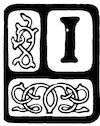
It is not all “skittles and beer” to be a Senator or a Representative at Washington. The continued pressure from a man’s constituents that he shall accomplish certain legislation for his district, and the iron-clad rules which prohibit his every movement, if in the House of Representatives, are enough to break an ordinary man’s health.
A new member goes to the House full of enthusiasm, hoping to accomplish great things for those who have trusted him; he finds that he is scarcely permitted to open his mouth the first term. But he does his best in committee, which is little enough; he runs his feet off to get places for some hundreds of people from his district who must be taken care of. Then he keeps trying to be a good party man, and to do some favor for the leaders, who, he hopes, will reward him by giving him an opportunity to accomplish much-needed legislation for his district, till in his second or third term he becomes desperate, breaks out in meeting, and knocks things about generally. If he proves to be really an orator and succeeds in catching the ear of the House, he may then begin to be more than a mere party voter. On the other hand, he may be so squelched that he subsides into “innocuous desuetude.”
In the meantime he has borne all forms of unjust 47and unkind criticism at home. His opponents of his own party and of the opposite party point, in scorn and malice, to how little has been done for the district, and tell in startling sentences how they would do it and how they will do it when they are elected. Then a “nagger” comes to Washington, who is still worse. He demands a position, tells the Representative how the latter owes his place to said nagger, and insists on being immediately made chief clerk of some department accessible only through the Civil Service, and needing four times the influence a new member can bring to bear. A man must learn to be serene under nagging, misrepresentation, and even positive lies, and rely upon time and his own best efforts to vindicate him.
There have been more caucuses held during the last term than usual. A caucus is a good thing, as it gives a man a chance to influence in a very slight degree the decisions of his party. (See Henry Loomis Nelson’s excellent article in the Century for June, 1902.)
The House is at present (session 1902–1903) ruled by only a few leading Republicans: Speaker Henderson, Grosvenor, Payne, Dalzell, and about two or three others. How long will such a hierarchy, dominating nearly three hundred intelligent men, be permitted to exist? The House is run like a bank, of which the President and a few clerks do all the deciding. Any correspondent who has the ear of any of these few can tell you the fate of a measure before it comes to vote.
The chairmen of committees, and a few others who have been long in the House, are called into a committee room to decide on how much debate will be permitted, who will be heard, and whether or not the 48bill shall pass; and the rank and file, desiring to be good party men, obey orders, and the bill fails or goes through in exactly the form decided upon by the clique. This is most un-American. It is true, more business is thus accomplished; but the business does not represent the average public opinion of the House.
The Committee on Rules, or its majority, constitutes a stone wall against which men break their hearts and ruin their reputations. Let us have less done, but let what is done be an average result of public opinion.
The President can do but little to influence legislation. His clubs are personality and patronage. If as persistent as Mr. Roosevelt, he may eventually get an “Administration” measure (like Cuban reciprocity) through, despite opposition. Present Congressional methods make politicians out of men capable, under broader training, of becoming statesmen. But Mr. Roosevelt did not “arrive” by the good will of the machine, but in spite of it. If he attains a second term, it will be against the plans of the machine; but as in Lincoln’s second term, politicians may be forced to nominate him, or themselves go down before the storm of public indignation.
In the meantime legislators in the House will go on presenting little bills which they know they can never get passed, but printed copies of which can be sent to constituents to make them believe that their representatives are really doing something.
The present method has this benefit: it shuts off much of the lobbying which formerly disgraced the anterooms of Congress.
There is a small cloud in the horizon. Mr. Littlefield, 49of Maine, whom rumor claimed, at the opening of the last Congress, to represent Presidential opinion, has seen his trust bill turned down. However, Mr. Littlefield always delights his hearers, who realize that his fight against commercial monopolies is no make-believe.
The following extracts from a late speech of Hon. F. W. Cushman, of the State of Washington, on the question of reciprocity with Cuba, will throw much light on present legislative methods in the House of Representatives:
THE RULES OF THE HOUSE
We meet in this Chamber to-day a condition that challenges the consideration of every patriotic man, and that is, the set of rules under which this body operates, or perhaps it would be more nearly correct to say, under which this body is operated. [Laughter.]
Mr. Chairman, I deem it my duty, knowing as I do that this measure could not have been brought here in the shape in which it now is, save and excepting for the remarkable conditions created in this House by these rules—I say, sir, I deem it to be my duty to pause for a moment or two on the threshold of this debate and place a few cold facts about these rules into this Record and before the 70,000,000 of people to whom we are responsible.
I approach this subject with a decided degree of deference. In the three years which I have been a member of this body I have endeavored to conduct myself with a modesty that I conceive to be becoming alike to the new member and to his constituency. I represent a Congressional district comprising the entire State of Washington, a Congressional district with half a million people in it, and with vast and varied interests demanding legislation for their benefit and protection in many of the channels of trade and branches of industry.
It is with humiliation unspeakable that I rise in my place on this floor and admit to my constituents at home that in this 50House I am utterly powerless to bring any bill or measure, no matter how worthy or meritorious it may be, to a vote unless I can first make terms with the Speaker.
It may be a matter of news to some of the good people within the confines of the American Republic to know that there is no way of getting an ordinary unprivileged measure considered and voted upon in this House unless it suits the Speaker. I am aware that there are several theoretical ways of getting a measure up; but they have no actual reality—no fruitage in fact. I make the statement on this floor now, that no member of this body who introduces a bill—not a private bill, but a public bill—can get it considered or brought forward for final determination unless it suits the Speaker. And if any one wants to deny that statement I am in a personal position and in a peculiarly happy frame of mind right now to give a little valuable testimony on that point! [Applause and laughter.]
Imagine, if you please, a measure—not a private measure, but a public measure—which has been considered at length by a great committee of this House and favorably reported with the recommendation that it do pass. That bill is then placed on the “Calendar.” The Calendar! That is a misnomer. It ought to be called a cemetery [laughter], for therein lie the whitening bones of legislative hopes. [Laughter.] When the bill is reported and placed on the Calendar, what does the member who introduced it and who is charged by his constituency to secure its passage do?
Does he consult himself about his desire to call it up? No. Does he consult the committee who considered the bill and recommended it for passage? No. Does he consult the will of the majority of this House? No. What does he do? I will tell you what he does. He either consents that that bill may die upon the Calendar, or he puts his manhood and his individuality in his pocket and goes trotting down that little pathway of personal humiliation that leads—where? To the Speaker’s room. Ay, the Speaker’s room. All the glories that clustered around the holy of holies in King Solomon’s temple looked like 30 cents [prolonged laughter and 51applause]—yes, looked like 29 cents—compared with that jobbing department of this government! [Applause and laughter.]
Then you are in the presence of real greatness. What then? Why, the Speaker looks over your bill, and then he tells you whether he thinks it ought to come up or not!
There is a condition which I commend to the patriotic consideration of the American people. Contemplate that for a method of procedure in the legislative body of a great and free republic.
WHO IS THE SPEAKER OF THE HOUSE?
Who is the Speaker of this House who sets up his immaculate and infallible judgment against the judgment of all comers? Is there anything different or superior in the credentials that he carries from the credentials that were issued to you and to me from 70,000,000 of American people? When he entered this House at the beginning of the Fifty-sixth and Fifty-seventh Congresses he was simply a Congressman-elect, bearing credentials like every other man on this floor. He has no greater power now than any other member, save the additional power we ourselves bestowed upon him by electing him Speaker and then adopting this set of rules. The question that now arises to confront us is: Have we put a club in the hands of some one else to beat us to death? Have we elevated one man on a pinnacle so high that he can not now see those who elevated him? Is the Speaker of this House a mere mortal man of common flesh and clay, or is he supernatural and immortal? What miracle was wrought at his birth? Did a star shoot from its orbit when he was born, or did he come into existence in the good old-fashioned way that ushered the rest of us into this vale of tears?
52I make no onslaught on the individual. I have a high regard for the Speaker of this House personally and for him politically; but we face the fact that we have adopted a set of rules in this body that are an absolute disgrace to the legislative body of any republic.
Throughout the entire three years of my service in this body I have been up against the little machine that dominates the proceedings and the deliberations of this House. During the entire three years prior to this time I have always treated that machine with the deference due to its age and its reputation. I trust you will excuse my frankness when I tell you that from this time on I shall devote a little of my time and a tithe of my energy to putting a few spokes in the wheel of that machine that the designers of the vehicle never ordered. [Laughter.]
I for one expect to live to see the day in this House not when the Speaker shall tell the individual members of this House what he is going to permit them to bring up, but when those individual members, constituting a majority, will inform the Speaker what they are going to bring up for themselves.
X
THE SUPREME COURT ROOM

Continuing our examination of what is called the original Capitol building, we would stop next at the Supreme Court room, once the Senate Chamber of the United States. For quiet, harmonious beauty it is unequaled by any other room in the building.
It was designed by Latrobe, after the model of a Greek theater—a semicircular hall, with low-domed ceiling, and small gallery back and over the seats occupied by the dignified judges of the Supreme Court of the United States.
“The Bench” is composed of large leather upholstered chairs, with the chair of the Chief Justice in the center, and those of the Associate Justices on either side. In front of these is a table around which the counsel are seated, and back of a railing seats are arranged around the wall for spectators.
On the walls are the busts of the former Chief Justices of the United States: John Jay, of New York; John Rutledge, of South Carolina; Oliver Ellsworth, of Connecticut; John Marshall, of Virginia; Roger B. Taney, of Maryland; Salmon P. Chase, of Ohio; and Morrison R. Waite, of Ohio. Back of the judges is placed a number of graceful Ionic columns of Potomac marble, the white capitals copied from the Temple of Minerva.
54The Standard Guide of Washington pictures the present court in this way:

SEATING PLAN OF THE SUPREME COURT CHAMBER
Chief Justice occupies Chair No. 1
His colleagues sit on either side
No. 10—Clerk’s Desk
No. 11—Marshal’s Desk
No. 12—Reporters’ Desk
No. 13—Attorney-General’s Desk
No. 14—Counsel’s Desk
In this hall Webster answered Hayne, and here Benton and John Randolph made their great speeches. On the left side of the Senate stood Calhoun in many a contest with Clay and Webster on the right.
One day Calhoun boasted of being the superior of Clay in argument. He said: “I had him on his back; I was his master; he was at my mercy.”
Clay strode down the aisle, and, shaking his long finger in Calhoun’s face, said: “He my master! Sir, I would not own him for my slave!”
It is said to be the handsomest court room in the world. Every week-day from October till May, except during Christmas and Easter holidays, just at twelve o’clock the crier enters the court room and announces: “The Honorable Chief Justice and the Associate Justices of the Supreme Court of the United States,” at which everybody, including visitors and lawyers, stand. Just then nine large, dignified old gentlemen, led by Chief Justice Fuller, kicking up 55their long black silk robes behind them, enter the room; each, standing before his chair, bows to the lawyers, the lawyers and spectators bow to them, then all are seated.
The crier then opens court by saying: “O yea! O yea! O yea! All persons having business with the honorable the Supreme Court of the United States are admonished to draw near and give their attendance, as the court is now sitting. God save the United States and this honorable court.”
After this quaint little speech business begins.
The members of the court wear gowns like the ecclesiastical robes of the Church of England. This began in early days when this country took English law and customs for pattern and precedent.
The seats of the judges are placed in the order of the time of their appointment, the senior judges occupying seats on either hand of the Chief Justice, while the latest appointments sit at the farthest end of each row.
This order of precedence extends even into the consulting-room, where the judges meet to talk over difficult cases, the Chief Justice presiding at the head.
Our country is justly proud of its judiciary. The Supreme Court of our country is the last rampart of liberty. Should this court become corrupt our free institutions will surely perish.
The Supreme Court of the United States has, however, made some grave mistakes—witness the famous decision of Justice Taney—but, for the most part, time has only verified their decisions.
56The men who have sat here have not only been fair representatives of the legal knowledge of their day, but also men of unimpeachable integrity and of the highest patriotism. Many of them have been devout Christians. Some on the bench at present are among the best church workers of Washington.
Courts are conservative bodies. Conservatism produces nothing, but is useful in preserving that which enthusiasm has created.
This Supreme Court room has been made further memorable as being the place in which, in 1877, sat the Electoral Commission which decided the Presidential contest as to whether Hayes, of the Republican party, or Tilden, of the Democratic party, should be the Executive of a great nation for four years.
In the fall of 1876, when the elections were over, it was found that the result was in serious and dangerous dispute. The Senate was Republican, the House Democratic. Each distrusted the other. It was feared that on the following 4th of March the country would be forced to face one of two series dilemmas: either that the country would have no President, or that two would-be Presidents would, with their followers, strive to enter the White House and take violent possession of the government. Men would have shot the way they voted. On the 7th of December, Judge George W. McCrary, a Representative of Iowa, afterward in Hayes’s Cabinet, later a circuit judge of the United States, submitted a resolution which became the basis of the Electoral Commission. Three distant Southern States had sent to the Capitol double sets of election returns—one set for Mr. Tilden, one set for Mr. Hayes. 57On these nineteen votes depended the Presidency for four years.
If they were counted for Tilden, he would have two hundred and three votes and Hayes one hundred and sixty-six; or, if counted for Hayes, he would have one hundred and eighty-five votes and Tilden one hundred and eighty-four. The States whose certificates of election were in dispute were Florida, Louisiana, South Carolina, and Oregon.
The members of the Electoral Commission were selected either as representatives of their party, or men considered the embodiment of honor and justice. The Commission consisted of five Senators, five Judges of the Supreme Court, and five Representatives from the Lower House of Congress. The attorneys were the leading lawyers of each party. The Cabinet, leading Senators, Congressmen, foreign Ministers, and distinguished people from all portions of the country, were present. The wit, the beauty, the writers, the wisdom of the country assembled in this room to weigh the arguments, and at last to hear the decision that Rutherford B. Hayes was rightfully to be the President of the United States.
This tribunal, and the wise patriotism of Mr. Tilden and his party, saved the country from a bloody civil war.
XI
INCIDENTS CONCERNING MEMBERS OF THE SUPREME COURT OF THE UNITED STATES
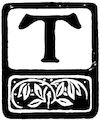
The Chief Justice of the United States is the highest legal officer in this country.
The position has always been filled by men of great learning and of high integrity, and, differ as we may concerning the wisdom and justice of some Supreme Court decisions, yet we must believe the judges were sincere and honest in their renditions.
When the country loses confidence in the integrity of this court, the very foundation of our government will be in danger.
The first Chief Justice was John Jay, appointed September 26, 1789. He soon resigned to accept the position of Envoy Extraordinary to England, where, after the Revolutionary War, the adjustment of our affairs demanded a person of great learning and skill. The country was fortunate in having John Adams, John Jay, and, later, John Quincy Adams as its representatives in this delicate and important service.
John Rutledge, of South Carolina, was a later appointment to the Chief Justiceship, but the Senate refused to confirm the nomination. Then William Cushing, of Massachusetts, one of the Associate Justices, was nominated and confirmed, but declined to serve. Oliver Ellsworth, of Connecticut, was then 59appointed, and was confirmed by the Senate March 4, 1796. He served till 1799, when he resigned to go as the Special Envoy and the Minister to England.
John Jay was again nominated and confirmed by the Senate, but refused to serve. John Marshall, of Virginia, was appointed Chief Justice by President John Adams in 1801. He died in 1835. His term and that of Chief Justice Taney cover over sixty important years in the history of our government.
John Marshall had served on the personal staff of Washington in the Revolutionary War, and had suffered the miseries and trials of the camp at Valley Forge. At the time of his appointment he was Secretary of State in Adams’s Cabinet. He served in both capacities till the close of Adams’s administration.
The Supreme Court, when Marshall was called to preside over it, was held in a low-vaulted room in the basement of the Capitol, and remained there until the new wings were finished, about 1857. Mr. Ellis, in “Sights and Secrets of Washington,” tells this story of Marshall: “Upon one occasion Marshall was standing in the market in Richmond, Va., with his basket containing his purchases on his arm, when he was accosted by a fashionable young gentleman who had just purchased a turkey. The young man’s foolish pride would not allow him to carry the fowl through the streets, and, taking the Judge for a countryman, he asked him to carry it home for him. The request was promptly granted, and when the young man’s home was reached he offered the supposed countryman a shilling for his trouble. The money was courteously refused, and upon asking the name of the person who 60had rendered him the service, the young man was not a little astonished and chagrined to learn that his thanks were due to the Chief Justice of the United States.”
A bet was once made that the Judge could not dress himself without exhibiting some mark of carelessness. He good-humoredly accepted the challenge. A supper was to be given him upon these conditions: If his dress was found to be faultlessly neat upon that occasion, the parties offering the wager were to pay for the entertainment; but if they detected any carelessness in his attire, the expense was to fall upon him. Upon the appointed evening the guests and the Judge met at the place agreed upon, and, to the surprise of all, the Judge’s dress seemed faultless. The supper followed, Judge Marshall being in high spirits over his victory. Near the close of the repast, however, one of the guests who sat near him chanced to drop his napkin, and, stooping down to pick it up, discovered that the Judge had put on one of his stockings with the wrong side out. Of course the condition of affairs was immediately changed, and amidst the uproarious laughter of his companions the Chief Justice acknowledged his defeat.
Mr. Ellis also says: “The following incident in his (Marshall’s) life is said to have occurred at McGuire’s hotel, in Winchester, Virginia:
“It is not long since a gentleman was traveling in one of the counties of Virginia, and about the close of the day stopped at a public house to obtain refreshment and spend the night. He had been there but a short time before an old man alighted from his gig, 61with the apparent intention of becoming his fellow guest at the same house. As the old man drove up he observed that both of the shafts of the gig were broken, and that they were held together by withes formed from the bark of a hickory sapling. Our traveler observed further that he was plainly clad, that his knee-buckles were loosened, and that something like negligence pervaded his dress. Conceiving him to be one of the honest yeomanry of our land, the courtesies of strangers passed between them, and they entered the tavern. It was about the same time that an addition of three or four young gentlemen was made to their number—most, if not all of them, of the legal profession. As soon as they became conveniently accommodated, the conversation was turned by the latter upon an eloquent harangue which had that day been displayed at the bar. It was replied by the other that he had witnessed, the same day, a degree of eloquence no doubt equal, but it was from the pulpit. Something like a sarcastic rejoinder was made as to the eloquence of the pulpit, and a warm altercation ensued, in which the merits of the Christian religion became the subject of discussion. From six o’clock until eleven the young champions wielded the sword of argument, adducing with ingenuity and ability everything that could be said, pro and con. During this protracted period the old gentleman listened with the meekness and modesty of a child—as if he were adding new information to the stores of his own mind, or perhaps he was observing, with philosophic eye, the faculties of the youthful mind and how new energies are evolved by repeated action; or, perhaps, with 62patriotic emotion, he was reflecting upon the future destinies of his country, and on the rising generation, upon whom these future destinies must devolve; or, most probably, with a sentiment of moral and religious feeling, he was collecting an argument which, characteristic of himself, no art would ‘be able to elude, and no force to resist.’ Our traveler remained a spectator, and took no part in what was said.
“At last one of the young men, remarking that it was impossible to combat with long and established prejudices, wheeled around, and, with some familiarity, exclaimed, ‘Well, my old gentleman, what do you think of these things?’ If, said the traveler, a streak of vivid lightning had at the moment crossed the room, their amazement could not have been greater than it was with what followed. The most eloquent and unanswerable appeal that he ever heard or read was made for nearly an hour by the old gentleman. So perfect was his recollection that every argument urged against the Christian religion was met in the order in which it was advanced. Hume’s sophistry on the subject of miracles was, if possible, more perfectly answered than it had already been done by Campbell. And in the whole lecture there was so much simplicity and energy, pathos and sublimity, that not another word was uttered. An attempt to describe it, said the traveler, would be an attempt to paint the sunbeams. It was now a matter of curiosity and inquiry who the old gentleman was. The traveler concluded it was a preacher from whom the pulpit eloquence was heard. But no; it was the Chief Justice of the United States.”
Judge Marshall was followed by Roger Brooke 63Taney, of Maryland. He was nominated by President Jackson, and confirmed by the Senate in 1836. He died October 12, 1864. His decision in the Dred Scott fugitive case may be ranked as one of the factors which brought about the Civil War. The case was substantially this: A negro slave, with a wife and two children, sued his master for freedom under the plea that, having been taken North into free States a number of times, they were therefore entitled to freedom. The decision covers many pages, but the nation summed it up in these words: “The black man possesses no rights which the white man is bound to respect.” Since Moses established a judiciary no decision ever made such a disturbance. In the memory of most people Taney’s singularly pure life goes for nothing beside the infamy of this decision. It outraged the conscience of mankind. Taney claimed that he did not make the law, he simply gave its interpretation. The decision was approved by the majority of the court, but he alone was made to suffer the obloquy which followed.
This decision proved sufficient to bring down the wrath of a just God on a nation so lost to human justice. The South suffered for the sin of slavery, the North for conniving thereto.
Judge Taney sleeps at Frederick, Md. (where most of his private life had passed), beside his wife, who was sister to Francis Scott Key, author of “The Star-Spangled Banner.”
In the summer of 1888 I heard Dr. Wardell, at Ocean Grove, N. J., tell this incident concerning Salmon P. Chase, who was appointed Chief Justice by 64President Lincoln in 1864, and who died in 1873. Dr. Wardell claimed to have the story direct from Dr. Newman, then pastor of the Metropolitan Methodist Church, Washington, D. C.
He said that Chief Justice Chase was in the habit of attending the Metropolitan Church, on Four and One-half Street, Washington, and Dr. Newman (afterward Bishop) noticed that while the Chief Justice was a member of the official Board, and attended faithfully to its duties, yet he always left the church when the sacrament of the Lord’s Supper was administered.
After one such occasion Dr. Newman went to him and said: “Why do you not avail yourself of the means of grace in the Lord’s Supper?”
The Chief Justice answered: “I do not consider myself worthy to partake of the communion.”
The Doctor said: “We invite all who love the Lord, and who do truly and heartily repent of their sins, to join with us in this service.”
“Yes, that is just it. What do you mean by ‘repent’?”
Then the Doctor gave him a full and clear explanation of repentance.
On the next communion day instead of leaving the church the Chief Justice remained in his seat. After all had communed, Dr. Newman said: “If any soul feels its unfitness for this service, to him this invitation is specially given. If such a one fails to acknowledge the Savior and his own unworthiness before his fellowmen, we are assured that the Savior will not acknowledge him before his Father and His holy angels.”
The Chief Justice rose, and staggered, rather than 65walked, to the front, and fell on his knees at the altar railing. After giving to the kneeling man the bread and wine, the Doctor, seeing the strong face of the penitent drawn with grief, with the Justice still kneeling, pronounced the benediction and dismissed the congregation.
The next day, in the robing-room of the justices, Chief Justice Chase said to Justice Miller: “Oh, I want to tell you to-day what the Lord has done for my soul! He came very near me yesterday.”
Justice Miller replied: “Well, we will talk of that some other time; now we have the wages of sin and not righteousness before us.”
After court adjourned that afternoon, the Chief Justice went down to Alexandria to see an old servant who had sent for him. He said to her: “Oh, Auntie, I received a great blessing yesterday; all life is different. I want to have a closer walk with God.”
Within a few days he went to New York to transact some business. The morning after his arrival he did not come down to breakfast. The clerk waited till eleven o’clock, and receiving no answer to his frequent knocks, the door was forced, and there was found the dead body of the Chief Justice. He had entered on his closer walk with God.
It was well known throughout the country that Lincoln was not in harmony with Chase, even when the latter was Secretary of the Treasury, but Carpenter, in his “Six Months in the White House,” says: “Notwithstanding his apparent hesitation in the appointment of a successor to Judge Taney, it is well known to his intimate friends that there had never been 66a time during his Presidency, when in the event of the death of Judge Taney, Mr. Lincoln had not fully intended and expected to nominate Salmon P. Chase for Chief Justice.”
The appointment must have come to Chase with a little of the effects of “coals of fire,” for he had not been very loyal to Lincoln. He had the Presidential bee in his own bonnet.
From 1874 to 1888 Morrison R. Waite, of Ohio, was Chief Justice. Our present Chief Justice, Melville W. Fuller, of Illinois, was called to the highest judicial position in the country in 1888.
XII
TEACHING PATRIOTISM IN THE CAPITOL
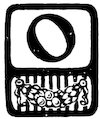
One can fancy a patriotic Englishman taking his son to Westminster Abbey, and there telling him the story of liberty, in the history of the renowned dead who sleep about him, until the youth is inspired with a patriotism deeper than the love of kindred, and second only to the love of God.
So an American father who desires his children to assume their proper place among the great force of American youth who are to perpetuate American institutions, might well bring them to the Capitol of the nation, and there in glowing words, and amid reminders of every decade of the nineteenth century and the latter part of the eighteenth, tell the story of liberty as shown in republican institutions.
He could also take his children to Mount Vernon for a day; there they might read together the history of that serene, majestic character whose eminence has carried him beyond national lines and made him belong to the world as well as to us—a citizen of all lands and of all ages.
History is best told by biography. Around Washington would be grouped John Adams, Thomas Jefferson, and Alexander Hamilton. These men, without a precedent to follow, launched a new government, establishing all the departments of its great machinery 68with such wisdom, justice, and patriotism that what they did, what they thought and planned, but were not able to complete, is to-day the standard of patriotism and national achievement.
Then would follow that man whose life grows radiant in the strong search-light of history—John Quincy Adams; that Adams, who could truthfully say at the close of a long, brilliant, and useful life, in the words of an old Roman: “I have rendered to my country all the great service she was willing to receive at my hand, and I have never harbored a thought concerning her which was not divine.” With him would be his compeers, Madison, Monroe, Burr, Clay, Webster, Jackson, John Randolph, the elder Bayard, and Calhoun.
That father would not fail to make plain the stern patriotism of Andrew Jackson and Daniel Webster against the insidious treason of Calhoun and his coterie.
During the early days of President Jackson’s administration he gave a state dinner in honor of Jefferson’s birthday. On his right sat Calhoun, Vice-President of the United States, and up to this time the intimate friend and confidential adviser of the Executive. On Jackson’s left sat Webster, with the black brows of Jove.
The toasts of the evening had been ambiguous. Mr. Calhoun gave this toast: “Our union, next to our liberties the most dear; it can only be preserved by respecting the rights of States, and by distributing its burdens and its benefits equally.”
Webster nudged the President. Old Hickory sprang to his feet and gave the toast: “Our federal union; 69it must be preserved.” Every man drank it standing, Calhoun among the rest.
How near our country came to open rebellion is shown in the last hours of Jackson. A friend at his bedside said: “What would you have done with Calhoun and his friends had they persisted in nullification?” “Hanged them, sir, as high as Haman. They should have been a terror to traitors for all time,” said the dying statesman.
That father could tell part of the story of liberty in the life of the younger Adams. At the age of eleven Adams decided that he would be a Christian. He said: “Of this one thing I must make sure: I shall humbly serve God. If He makes me a great man, I shall rejoice; but this He surely will do: if I trust Him, He will make me a useful man.”
God took Adams at his word. He sought the Kingdom first. God added place. Adams was diplomat, Senator, Secretary of State, President, Congressman. He might well say with his dying breath, as he was carried from his place in the old House of Representatives to the Rotunda, “This is the last of earth, but I am content.”
Well he might be content. He had been a faithful, honest, upright Christian man, who had received at the hands of his fellow citizens the highest honors they could confer, and in his death he passed to a home among the redeemed, there with enlarged intelligence and clearer vision to continue his work for God in the beyond.
In this day, when writers are striving to make black appear white, the father who would mingle Christianity 70with patriotism would not fail to sketch the life of Aaron Burr in contrast with the young Adams.
Burr tells us that at the age of eighteen the Spirit of God came upon him with such power that he fled to the woods to settle that great question which faces every human being—“Shall I be a Christian?” He said to himself: “I purpose as a lawyer to succeed by the tricks of the trade. There is many a short cut in business which a Christian could not take, therefore I shall not be a Christian.”
He tells us that the Spirit of God never again troubled him. He sinned against the Spirit, that unpardonable sin. Left to himself, his destiny led him to a high place only to make his fall more terrible. Socially he was the most charming man of his day, but he entered no home which he did not defile. No woman loved him but to her sorrow.
Burr was holding the position of Vice-President as a Republican when he was nominated by the Federalists for Governor of New York. Some of the leading men of that party refused to support him, among them Hamilton. This led to the duel in which Hamilton was killed, July 11, 1804.
Burr was disfranchised and banished by the laws of New York, and was indicted for murder by the authorities of New Jersey for having killed Hamilton on the soil of that State. He could not enter either New York or New Jersey to settle his business. He was bankrupted, and more than $5,000 in debt when all his property had been sold and the results paid over.
The day before the duel Burr had a right to suppose himself a more important man than Hamilton. 71Was he not Vice-President? Had he not just received a majority of the votes of the City of New York for Governor of that State, in spite of Hamilton’s greatest exertions? Yet the day after the duel the dying Hamilton had the sympathy of every human being, and Burr was a fugitive from justice, not knowing friend from foe. Never was there a greater revulsion of feeling.
Southern men tried to console him by their more courteous demeanor. Between the time of the duel and the convening of Congress, Burr had kept himself south of Mason and Dixon’s line, for in any Northern State he would have been arrested on a requisition on the Governor.
He went back to Washington and again presided over the Senate, but was simply scorched by the open, daily manifestations of the scorn of Northern Senators. The Southern men were more courteous in their demeanor. On Saturday, March 2d, he took leave of the Senate. That body was in executive session, therefore no spectators were present. Mr. Burr, one of the most eloquent as well as one of the handsomest men of his day, rose in his place after the galleries had been cleared. He began his address by saying that he had intended to remain during his constitutional time, but he felt an indisposition coming upon him and he now desired to take leave of them.
The silence could be felt. There was no shorthand reporter present, and exactly what he said is not now known—perhaps nothing very different from what other retiring Vice-Presidents have said. No reference was made to the duel, none to the scorn he had 72merited, unless it were in his words, “For injuries received, thank God, I have no memory.”
He thanked the Senators for kindness and courtesy. He prophesied that if ever political liberty in this country died its expiring agonies would be witnessed on the floor of the United States Senate. As he walked out no man rose, no man shook hands with him; when the door closed on him it shut him out forever from position, usefulness, home, country, the love of women, and the friendship of men.
At the President’s reception on the following Morning two Senators were relating the circumstances to a group which had gathered round them. On being asked, “How long did Mr. Burr speak?” one of them answered, “I can form no idea; it may have been a moment and it may have been an hour; when I came to my senses I seemed to have awakened from a kind of trance.”
Burr, hurled from power and honor, wandered a fugitive from justice, and at last would have been laid in a pauper’s grave but for the care of a woman who had loved him in his better days.
Surely the Psalmist was right when, speaking of the righteous and the unrighteous, he said: “And he shall be like a tree planted by the rivers of water, that bringeth forth his fruit in his season; his leaf also shall not wither; and whatsoever he doeth shall prosper. The ungodly are not so: but are like the chaff which the wind driveth away.”
XIII
PEOPLE IN THE DEPARTMENTS

About one-third of all the employees in the government departments at Washington are women. Several receive over $2,500 per annum, about fifty receive $1,600 per annum, one hundred receive $1,400 per annum, four hundred and fifty receive $1,200, three hundred receive $1,000, and the remainder receive from $600 to $900 per annum.
The Civil Service Commission records for last year show that 3,083 women were examined for the various positions opened for them under the civil service. Of these, 2,476 passed and 444 were appointed. Of the applicants examined, 1,351 came under the head of “skilled labor.”
The most popular examination for women is that of stenographers and typewriters. “Good stenographers” is the ceaseless demand of the department official—not mediocre, but good par excellence.
Government work is well paid only when well done. Promotions are at least sometimes the reward of merit. A very striking illustration of this occurred last winter, when a young woman was made chief of one of the divisions in the Post-Office Department because she knew more about the work of that particular division than any other employee in it. She receives a salary of $2,240—among the highest paid to any woman in the service.
74In the States a position at Washington is looked upon as most desirable, but except for the highest positions, and for the name of it, no ambitious man or woman who desires to secure a competence by middle life should consider a place in the departments.
There are nearly six thousand classified clerkships in the departments, and many thousands of ungraded positions. Clerks of the first class receive $1,200 per year; of the second, $1,400; of the third, $1,600; of the fourth class, $1,800. In ungraded positions, salaries range from $700 to $1,000.
Chief clerks receive from $1,800 to $2,700; stenographers and translators of languages from $1,200 to $2,000; copyists from $60 to $75 per month. Thirty days’ vacation, without loss of salary, is allowed each year, and in case of violent illness no pay is deducted.
Hundreds of fine young men, well educated, who ought to be in the manufacturing businesses of our country where they could develop, tamely accept from $700 to $1,000 a year for mechanical work. In the last few years there has been wonderful improvement in the work done by department people. In 1885 I was impressed by the flirtations in corners, the half hours which were wasted in visiting by people receiving government money. But few are idle now—at least, where a visitor can see. They are all at their desks promptly at 9 A.M.; they work till 4 P.M., with half an hour at noon for luncheon. No bank records as to punctuality, regularity, and diligence can be more closely kept than those of the departments. There are so many who are eager to take an idler’s place that no one dares to fritter away his or her time.
75It is said that if a woman banks on her femininity with chiefs of divisions, or has unusual Senatorial backing, she may dare to take some liberties—she may be idle or incompetent, and not be reported; but these cases grow fewer in number.
Now, as to civil service examination. No one can get into the classified service without it; but in most places, when one has passed the highest examination, it takes Congressional influence to get a position. Whatever may be the conditions in the future, there never has been a time when influence was more used than in the session of Congress ending July 1, 1902. In making up the Bureau of Permanent Census, it was not merit but influence which secured a place. Merit, of course, helps everywhere, but in the session referred to three-fourths influence to one-fourth merit were necessary to secure any position.
There were twenty places to fill in the Congressional Library, where it is claimed influence counts least. Eighteen hundred people applied for the twenty places, and of course those with Senatorial influence were appointed. No doubt their qualifications also entered into the account.
Seven hours, frequently spent in close, confined rooms, doing work which brings no mental improvement, often with a fretful, over-critical chief, anxious to get an incumbent out in order to put in his own friend, does not look to me like a desirable position.
It is evidently intended to give places more and more to men who can go home and help manage elections. It will not be until woman suffrage prevails in the States that women will have an equal opportunity 76with men, even in the work world. Then department people are ever anxious about their places. At each change of Congress new people must be taken care of, and much more is this true when the Executive is changed. The Washington Post of July 15, 1902, has this editorial:
The latest civil service order of President Roosevelt is addressed to this evil. One can not avoid wishing that it had been issued early in December, 1901, instead of in July, 1902—before, instead of after, a long session of Congress, during which the “pull” was industriously plied with the usual results. But “better late than never.” It is a good order, and its influence should be seen and felt in the improvement of the service. Altho it was printed in the Post as soon as it was made public, it will bear reproduction. Here it is:
No recommendation for the promotion of any employee in the classified service shall be considered by any officer concerned in making promotions except it be made by the officer or officers under whose supervision or control such employee is serving; and such recommendation by any other person with the knowledge and consent of the employee shall be sufficient cause for debarring him from the promotion proposed, and a repetition of the offense shall be sufficient cause for removing him from the service.
When we speak of that order or rule as good, we mean to say that it will prove so if faithfully and impartially enforced; otherwise, it may only aggravate existing wrongs. For example, suppose three clerks, A, B, and C, in the same division are aspirants for promotion to fill a vacancy in a higher grade. Suppose each of them to have very influential friends, whose recommendation, were it proper to use it, might be the controlling factor in the disposal of the prize. But A and B obey that rule, relying on their respective records, while C quietly hints to his friend or friends that a little boosting would do him a great service. A personal call on the official “under whose supervision or control such employee is serving”—a personal call by Senator X or some other statesman of weight—ensues, and C is promoted as a result of that call. 77That is what has happened in almost numberless cases. Will it stop now? If “yes,” the President’s order will prove a great promoter of reform in the civil service; if “no,” it will work in the opposite direction.
I took this editorial to a number of leading people in the departments. “Yes,” they said, “something like that usually comes out about this time of the year when Congress has adjourned. Even if President Roosevelt means what he says, it can scarcely be executed. The system is so complex, with so many wheels within wheels, that patronage can hardly be stopped. If a chief fails to promote a Senator’s niece, Mr. Chief will be apt to lose his own place, and this consideration brings wisdom.”
When a man or a woman has been four or five years in a clerical government office, he or she is scarcely fit for any other kind of place. In that time has been lost ingenuity, resourcefulness, adaptation, how to placate or please the public, and, above all, confidence to fight in the great battle of industries; consequently, when dismissed, the former place-holder hangs about Washington, hoping for another situation. One can see more forlorn, vanquished soldiers of fortune in the national capital than in any other city of its size in the world.
If one desires to make a living only, and not lay up for a rainy day, or if one has clerical talent only, then a Washington position might be desirable; but when one sees great, able-bodied men opening and shutting doors for a salary, or a man capable of running a foundry operating an elevator in a government building, it disgusts him with the strife for place. Government 78clerkships may be desirable for women, but few of them should claim the ability of first-class men. It is commercial death to become once established in a department at Washington.
The government has many first-class scientists in its employ, people with technical knowledge. These are the rare souls who, while they know more than their fellow men, care less for money, and have neither time nor ability to make it. For such men a good position in the Agricultural, Geological, Smithsonian, Educational, Indian, or other scientific departments is desirable, but for no other class.
In no other place than Washington can one better see the fact illustrated that once in each generation the wheel of fortune makes a complete revolution, turning down those at the top and turning up those who are down. In the departments are now many widows and daughters of men who were prominent in Civil War times. One woman eighty-two years of age was during the war the wife of a great general. She now sits at a department desk from nine to four daily, and no one does better work.
The old charge of immorality among the women of departments is now seldom heard in Washington. Among the thousands there must be a few black sheep, but women have ways of making life so uncomfortable for a derelict that she prefers to resign and occupy a less public position. No Congressional influence can shelter her head from the scorn of other women.
Corruption is more likely to originate with chiefs of subdivisions, as in the recent case of young Ayres of the Census Bureau, who was killed, and Mrs. 79Bonine, who was acquitted of his murder. The trial was a mere farce, for society felt that whoever killed the vile libertine who had used his place to seduce or browbeat young girls had served society. Justifiable homicide would doubtless be the verdict should death strike a few others. Such cases are, however, rarer than in commercial communities. The people of the departments largely constitute the membership of the churches of Washington. Senators and Congressmen, with their wives, do not bring letters from their home churches, but the department people do. The latter practically support the churches and the religious institutions and religious work of the district.
XIV
INCIDENTS IN AND OUT OF THE DEPARTMENTS

“I must go down to the Census Office to hold a scrub-woman in her place,” said a Western Congressman to me. He added: “Let me tell you about her. She does not belong to my State, but you will not be surprised that I propose to hold her in her poor place, which brings $40 per month, when I explain her case. She is the widow of a regular army officer. Her husband in the Civil War was twice promoted for personal bravery. His native town presented him with a sword as a tribute of his courage. His widow scrubs floors along with colored people, and his only daughter does menial service twelve hours a day in the printing-office. Of course the widow is too old for a Civil Service place, and that is the best I can do for her. She has no G. A. R. influence, her husband was so long a regular that she has no State back of her. I am glad to do what I can.”
Not long ago the beauty of a country town, let us say of Texas, was brought to Washington for a place. Her Congressman’s quota of positions was full; he knew, however, of one place which was ably filled by a Southern woman who came here with President Johnson’s family as instructor for his grandchildren. President Johnson had, before leaving, secured her a place in a department, and now the Texan asked her official head in the interest of the beauty. The girl was bright, flippant, and loud. She used her first month’s wages to obtain a red velvet dress cut square in the neck to show her white, firm skin. She did her work fairly well, but one day people in her department heard a scream, and they also heard some one getting a severe slapping of the face amid cries of “I have a big brother in Texas, and it will take him only two days to get here, and he’ll beat the life out of you!” etc.

THE SUPREME COURT
Chief Justice Melville W. Fuller
1. Justice Henry B. Brown
2. Justice Joseph McKenna
3. Justice John M. Harlan
4. Justice David J. Brewer
5. Justice Oliver W. Holmes, Jr.
6. Justice Rufus W. Peckham
7. Justice William R. Day
8. Justice Edward D. White

Photo by Clinedinst
THE SUPREME COURT ROOM
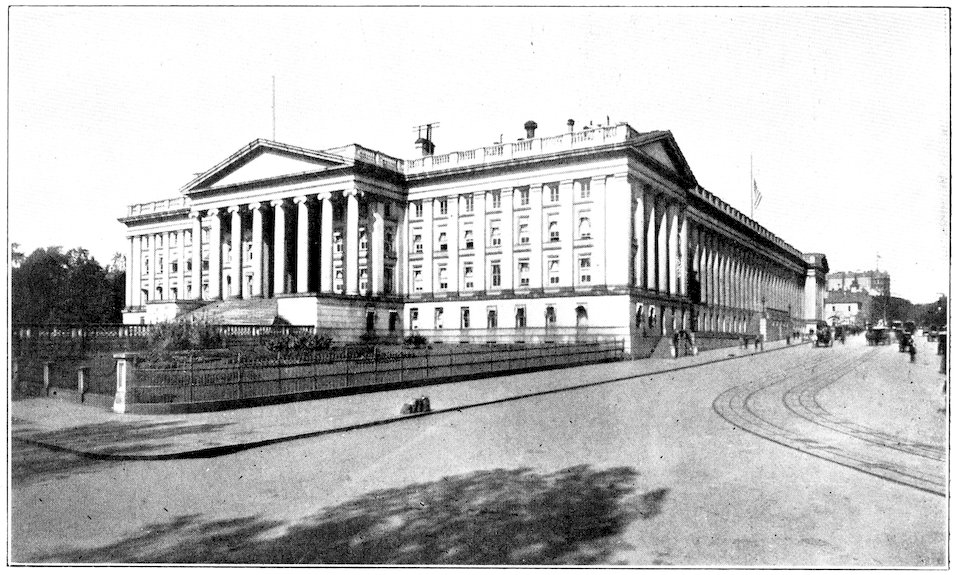
Photo by Clinedinst
THE TREASURY BUILDING
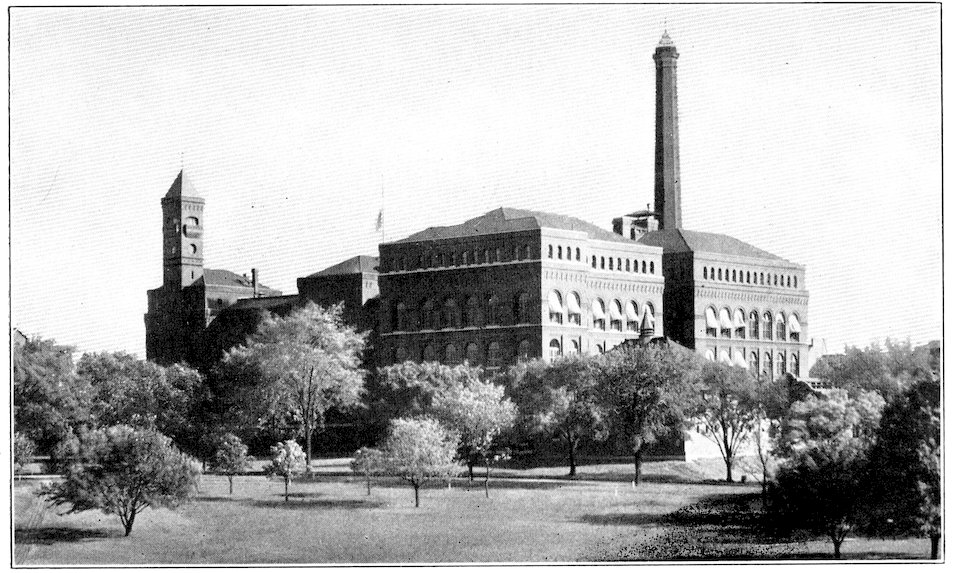
Photo by Clinedinst
THE OLD BUREAU OF ENGRAVING AND PRINTING

Photo by Clinedinst
THE NEW BUREAU OF ENGRAVING AND PRINTING

Photo by Clinedinst
GALLAUDET COLLEGE FOR THE DEAF

Photo by Clinedinst
THE SMITHSONIAN INSTITUTION

Photo by Clinedinst
THE NATIONAL MUSEUM
81A shamefaced clerk was seen to emerge from the room. When the others rushed in they found the girl in a dead faint which was followed by hysterics. Then the women said, “Aha! you got what you deserved with your red dress, your loud manners, and flippant talk.”
The girl replied, “Well, I think you should have had the decency to tell me that before, if my dress and manners exposed me to insult. You will see, I shall learn.” Sure enough, the girl did learn to dress quietly, and is now an efficient, decorous helper.
The wife of one of the new-rich, who have come to Washington to spend their money in social life, was being taken through the Census Department when they had on the full force of several thousand. Looking over that crowd, every one of the intellectual rank of a first-class teacher, she said: “Ah! I see now what makes servants so very scarce in Washington!” Each one of these classed as of the rank of servants had passed an entrance examination which her ladyship could not have stood, even if her life had depended upon it.
One of the peculiar features of department life is 82that it seems to dry up the milk of human kindness. A man will move heaven and earth to get a high situation under the government, then when others ask from him less than he has asked of his friends, the applicant is made to feel like a beggar. He is advised to go home and tend to his own affairs—which may be very good advice, but comes with bad grace from a government official.
I knew a man from the South, the editor of a religious paper, the most important man in the county, who came to Washington to ask for the post-office of his own town. His credentials had the endorsement of every bank, every business house, every preacher, doctor, and teacher in his town. He was permitted to get as near headquarters as the Fourth Assistant Postmaster, where he was told Senator Blank would have that appointment. The Senator appointed a Catholic in that town where there are not over forty Catholics, and where a Lutheran College alone gets more mail than the entire Catholic population. The new man was a person non grata to the entire town, but the Senator had paid a campaign debt.
Every person knows the sad life story of Kate Chase Sprague, but it will be fifty years before the full depth of her infamy can be fully told. Daughter of Salmon P. Chase, Senator from Ohio, Secretary of the Treasury under Lincoln, Chief Justice of the United States, the loved wife of Senator Sprague, of Rhode Island, and the leader of the highest social life of the capital, she was divorced, and then began a downward course of amours, flirtations, and baseness which had best remain untold for this generation.
83Older people will remember that one of Grant’s Cabinet was forced to resign because of fraud in the War Department. Valuable contracts were let, and the wife of this official, totally unknown to her husband, took thousands of dollars for her influence in securing these contracts. At last trouble was threatened. Congress appointed a committee to investigate. The night before the exposure madame attended a great ball at one of the legations. The French Minister said: “I have been in most of the courts of Europe; I have never seen any one, not even queens, better dressed than madame.” She wore a dress literally covered with point-lace, a point-lace fan, and more than $40,000 worth of diamonds.
Three Congressmen present knew what the next day would reveal. On that day the Secretary was called before the committee. They soon saw that he knew nothing about the matter. Madame heard what was going on and suddenly appeared before the committee. She threw herself on her knees before them and entreated shelter from disgrace.
The Secretary resigned at once. He sacrificed his entire property to pay back the fraudulent money. He opened a law office in Washington, but soon after died; of course, people said he died of a broken heart. Madame went abroad at once, and did not return till after her husband’s death. She now conducts a house in Washington where men and women lose their souls in gambling or worse.
XV
TREASURY DEPARTMENT

The Treasury building, on Pennsylvania Avenue and Fifteenth Street, was located by President Jackson just east of the White House so as to obstruct his view of the Capitol, at the other end of Pennsylvania Avenue. It is said that he grew tired of the little differences of opinion between the commissioner and the architect, Robert Mills, and one day in ill humor he struck his staff in the earth and said: “I want the chief corner-stone of the Treasury building placed just here!” You may be sure it was placed just there.
The Secretary of the Treasury superintends the collection and disbursement of all government revenue from every source, except the Post-Office Department. It takes many buildings to provide for the work of the Treasury Department.
The Congressional Directory says:
The Secretary of the Treasury is charged by law with the management of the national finances. He prepares plans for the improvement of the revenue and for the support of the public credit; superintends the collection of the revenue, and prescribes the forms of keeping and rendering public accounts and of making returns; grants warrants for all moneys drawn from the Treasury in pursuance of appropriations made by law, and for the payment of moneys into the Treasury; and annually submits to Congress estimates of the probable revenues and disbursements of the Government.
85He also controls the construction of public buildings; the coinage and printing of money; the administration of the Revenue-Cutter branch of the public service, and furnishes generally such information as may be required by either branch of Congress on all matters pertaining to the foregoing.
The routine work of the Secretary’s office is transacted in the offices of the Supervising Architect, Director of the Mint, Director of Engraving and Printing, and in the following divisions: Bookkeeping and Warrants; Appointments; Customs; Public Moneys; Loans and Currency; Revenue-Cutter; Stationery, Printing, and Blanks; Mails and Files; Special Agents, and Miscellaneous.
A few minutes’ thought on the above will show that this is the very heart of the government of our country. Its pulsations send the currency through all the avenues of commerce; if it became bankrupt, disaster would follow in every other department of the government, and the prosperity of other nations would be unfavorably affected.
The Treasury building was completed in 1841. It has undergone considerable enlargement and many modifications since that time. It is 460 feet on Fifteenth Street, and has a frontage of 264 feet on Pennsylvania Avenue. It is Grecian in architecture. On each of the four sides are large porticoes with most graceful yet massive Ionic columns. The flower gardens about the Treasury are among the most beautiful in the city.
It would greatly surprise Alexander Hamilton, our first Secretary of the Treasury, if he could see every day at 4 P.M. the 3,000 workers pour out of the 300 rooms of the great building at Fifteenth Street and Pennsylvania Avenue, and be told that this is only 86the central office of the Secretary of the Treasury. The salary list of this building alone is about half a million dollars annually.
The Secretary is a member of the Cabinet, and receives $8,000 a year for his services. He has two Assistant Secretaries, who each receive $4,500, and a Chief Clerk, who has a salary of $2,700. The Chiefs of Divisions receive about $2,500 each.
There are subtreasuries in most of the large cities of the Union; also assay offices in Boise City, Idaho, Charlotte, N. C., and St. Louis, Mo., to see that the money is kept pure and up to the standard.
The scales upon which the United States coin is weighed are said to be so accurate that if two pieces of paper, in all respects the same except that one has writing upon it, be laid one on either scale, the difference in weight of the one bearing writing upon it will show in the scale.
The cost of maintaining these subdivisions of the Treasury is nearly one and a half million dollars annually.
The First Comptroller seems to be the important man of the Treasury. Every claim is submitted to him. Not even the President’s salary can be paid unless he signs the warrant and vouchers for its correctness. His salary is $5,000 per annum, but it takes $83,000 to maintain all the appointments of his office.
The Treasurer of the United States receives $6,000 per year. He gives a bond for $150,000. He receives and disburses all the money of the country and has charge of the money vaults. He has an army of assistants.
87The Treasurer’s report for 1901 says that the condition of the Treasury as to the volume and character of assets was never better, and, in spite of the unusual expense of the army in the Philippines and the raid on the Pension Bureau, nearly $78,000,000 surplus remained in the Treasury. On June 30, 1902, at the end of the fiscal year, the surplus was over $92,000,000. What a magnificent showing as to the prosperity of our country, and what an occasion for national thanksgiving!
No robbery of the Treasury vaults has ever been attempted. When one sees the solid walls of masonry and the patrol of soldiers, on duty night or day, with every spot bright with electric light, no such attempt seems likely to occur. The entire vaults inside are a network of electric wires. If, for instance, a tunnel were made under the building, and a robber should reach the vaults, the wires would ring up the Chief of Police, who has telephone connexion with Fort Meyer and the navy-yard, so that within twenty minutes a detachment of troops could be on the ground.
A few years ago a negro charwoman, in doing her cleaning, found a package of bonds of more than a million dollars in value. That faithful woman sat by the package all night guarding it, knowing that it must be of great value. Her faithfulness was rewarded with a life position. Bowed and broken, she was an historic figure in the building until last year, when she died.
In this building all money from the Printing Bureau and the mints is counted and verified. Here worn money, that which has been buried, rotted by water 88or charred by fire, is identified by the skilled eyes and hands of women. Of the charred money received from the great fire in Chicago, eighty per cent. was identified, and new money issued in its place. Sometimes money taken from bodies long drowned or buried has to be handled. In such cases these women have the entire room to themselves, as their usual neighbors find that business in other quarters needs immediate attention.

MACERATING $10,000,000 OF MONEY
The banks of large cities send in their soiled money weekly or monthly and receive fresh notes in exchange, the government paying transportation both ways. This soiled money is made into pulp, which is sold to paper-makers at about $40 a ton.
It is only the old money that is counterfeited. Counterfeiters rumple and muss their money to give it 89the appearance of being long in use. Women are especially skilled in detecting counterfeit money. If among the returned coins or notes one single piece proves to be counterfeit, the amount is deducted from the salary of the examiner. Yet this great government pays these women less than two-thirds what it would pay to men for the same service, if men could do it at all.
From the government of the United States it would seem that the world had a right to expect that ideal justice which each soul shall receive when it stands in the presence of Eternal Justice.
The United States Treasury has charge of the Bureau of Printing and Engraving, where all the paper money, postage, revenue stamps, and bonds are made.
Bills, when sent from the Bureau of Printing and Engraving, require the signatures of officials of the bank from which they are to be issued before becoming legal tender.
Secretary Shaw has at the Bureau of Printing and Engraving his personal representative, who locks up the plates, sees to the minutiæ of things, so that even the smallest scrap of paper bearing government printing must be shown, or the house is closed and search made till it is found.
The custom officers who insult and browbeat you at the port are of this department. Once on arriving at New York, after being very ill all the way from Antwerp, I had declared I had nothing dutiable, yet in spite of that every article in my trunk was laid out on the dirty floor of the custom-house. When I saw the bottom of the trunk, I said: “Well, you have only 90proved what I told you. I believe you think because I am trembling from weakness that I am frightened?” “Yes, that is about the size of it; there is your trunk, you may put the things back.” “No,” I said, “my baggage is checked through, and I am not able to pack it.” I saw with some satisfaction the custom-house officer do the packing. It had required my best efforts to get the stuff into the trunk, but he did it.
This country has very silly custom-house rules on personal clothing and small articles of art and vertu, and the average artistic standard of dress and home ornamentation of the country is lowered by these ridiculous embargoes.
In 1895 I was abroad with a company of Presbyterians; among them was Professor G., of the Presbyterian Theological Seminary of California. He happened to fall in with a little coterie of friends of whom I was one. The most of us bought photos and souvenirs in almost every city. The professor bought nothing. One day he said: “I would so like to have brought my wife with me, but I was not able to do so. I shall be very saving, so I can take her back a nice present.” When we were in Italy some fool woman suggested a cameo pin as a suitable and beautiful present for his wife. Cameo pins have been out of fashion for twenty years. He purchased one of great beauty for $30. As we came into port, a friend said: “Professor, you had better let some woman wear that pin for you or you will have trouble.” “Thank you, no; I expect to pay the required duty to my country.” “Oh, you do not know your country yet; you’ll get a dose!” He paid $27 duty, and had not money enough left to 91get home. I felt that this duty was an outrage. Things of beauty which are not for sale should surely be admitted free.
The Treasury is the heart of the whole machine that we call the “United States Government.”
XVI
SECRET SERVICE DEPARTMENT OF THE TREASURY OF THE UNITED STATES
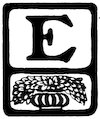
Every one is interested in what is called the Secret Service of the government. The name covers many things, altho we usually associate it with the government’s protection of the coin and greenback currency of the country.
The detectives of this department are often employed in assisting to find out or run down robbers of banks, railroad trains, express offices, etc. They are also used in detecting frauds at the custom-houses, frauds in the departments of justice, pertaining to naturalization papers, post-office robberies, and attacks on the Mint. In the Pension Bureau they unearth fraudulent attempts to represent dead pensioners, etc. For work outside of their own departments they are paid by their employers.
In the last report of the Secret Service, dated July 1, 1902, the chief enumerates 253 persons convicted of attempt of counterfeiting currency, and 106 yet awaiting action of the Court. The arrests for the current year have numbered 573; of these, 413 were born in the United States; of the 106 remaining, Italy furnished 65 counterfeiters; Germany, 25; Ireland, 15; the others, except 6 Mexicans, are of the different countries of Europe. Of the different States, New York 93produced 85 counterfeiters (including those who make false representations of any kind in passing currency); Missouri, 47; Pennsylvania, 45; while almost every State has one or more. Altered and counterfeit notes to the value of $46,004.95 have been captured, and counterfeit coins to the value of $19,828.47.
The Chief of the Secret Service says that the year has been fruitful in that class of criminals who alter bills of small denomination to one of higher value. Any change in a bill renders the maker liable to a fine of $5,000, or fifteen years in prison, or both.
The walls of the Secret Service office are covered with samples of counterfeiters’ work. The history of each would sound like a dime novel, but the government is certain to catch any one who persists in demoralizing the currency. Chief John E. Wilkie, a first-class Chicago newspaper man, was brought East by Secretary Gage. He has called to his assistance, as Chief Clerk, Mr. W. H. Moran, who learned his business from Mr. Brooks, one of the best detectives any country has yet produced. Other officials tell me the office has never been more ably conducted than it is at present.
This bureau is urging that for persistent crime a longer penal sentence shall be given. To illustrate the persistence of two of these criminals, the following extracts from the Secret Service records are, by courtesy of the bureau, submitted:
John Mulvey, alias James Clark, arrested October 16, 1883, at New York, N. Y., for having in possession and passing counterfeit coin. Sentenced, October 22, 1883, to three years in Auburn, N. Y., penitentiary and fined $1.
94William Stevens, alias John W. Murray, alias Jack Mulvey, was again arrested June 14, 1886, at Baltimore, for passing counterfeit 25c. silver coins, and was sentenced, September 7, 1886, to serve one year in Maryland penitentiary and fined $100.
Was again arrested under the same name October 5, 1887, at Philadelphia, Pa., for passing and having in possession 25c. coins, and sentenced, December 1, 1887, to eighteen months in the Eastern Penitentiary of Pennsylvania and fined.
John W. Murray, alias William Stevens, alias Jack Mulvey, was again arrested, July 10, 1889, at Hoboken, N. J., for passing counterfeit standard $1, 25c., and 10c. coins, and sentenced, January 22, 1890, to six months in State Prison at Trenton, N. J., and pay costs.
Jack Mulvey, alias James W., alias John Clark, alias John W. Murray, alias “Pants,” alias Stevens, etc., was again arrested January 12, 1891, at Pittsburg, Pa., for having in possession and attempting to pass counterfeit 50c. coins, and was sentenced, March 5, 1891, to two years in Western Penitentiary at Allegheny, Pa., and fined $25.
John Murray, alias Jack Mulvey, was again arrested, January 25, 1894, at Chicago, Ill., for manufacturing counterfeit 25c. and 10c. coins and having same in possession, and was sentenced, March 12. 1894, to three years and six months at hard labor in the penitentiary at Joliet, Ill., and to pay a fine of $1.
James Foley, alias Jack Murray, alias Jack Mulvey, was again arrested, February 24, 1897, at Chicago, Ill., for having in possession and passing counterfeit silver dimes, and escaped March 22, 1897, but was rearrested, under the name of John O’Keefe, in New York, N. Y., April 6, 1897, for passing counterfeit 10c. pieces, and sentenced. May 12, 1897, to seven years in Clinton Prison and fined $1. Released from this prison February 27, 1902.
95Another case from the records of the Secret Service would read as follows:
One day the doors of the Moundsville, W. Va., prison opened on a tall, slender, mild-eyed man, upon whose face and form time and confinement had left their impress, and he passed out to take up again the broken thread of his life.
This was John Ogle’s first day of freedom for more than three years. On July 4, 1898, he was sentenced to four years’ imprisonment for trying to increase the negotiable value of one-dollar bills by altering their denominational characteristics.
Little more than a year before his brother, Miles, was released from the Ohio penitentiary, where he had paid the extreme penalty imposed by law for spurious money making, only to die two days later of paralysis, with which he had been hopelessly stricken over a year before.
The Ogles, father and sons, during the past fifty years have had much to do with the making of the criminal history of this country. George Ogle, the father, was a river pirate and farmhouse plunderer, the Ohio River and its tributaries being the scene of his operations. The sons, bred in an atmosphere of crime, early embarked in independent unlawful enterprises. Miles displayed pugnacity, intrepidity, and skill, while John was shrewd, plausible, and cunning.
After serving five years for killing an officer who attempted to arrest the family, and when but twenty-six years old, Miles allied himself with the notorious “Reno” gang of bandits, and became the pupil and confederate of Peter McCartney, that past master of 96the counterfeiter’s art. How well he applied himself the records of the Secret Service will testify. An even dozen skilfully executed spurious note issues were directly traceable to him, despite the fact that two-thirds of his manhood were spent behind prison walls.
John Ogle, while not possessed of the dangerous skill of his brother, was his equal in hardihood, and, in his way, quite as detrimental to society. For cool daring, ingenuity, and resourcefulness he was without a peer in his chosen profession, and some of his escapes from the officers of the law bordered on the miraculous. He was introduced to prison life in 1864, being sentenced in the fall of that year to five years in the Jeffersonville, Ind., penitentiary for burglary. Shortly after his release he was traced to Cairo, Ill., with twenty-eight hundred dollars of counterfeit money intended for one of Miles’ customers, and, after a desperate fight, was placed in jail. He managed in some way to effect his escape, but was soon recaptured at Pittsburg. This time he told the officers that he knew of a big “plant” of spurious bills and tools near Oyster Point, Md., which he was willing to turn up if it would benefit him. Being assured of leniency, he started with a marshal for the hiding-place. En route he managed to elude the watchfulness of his guard, and jumped from the car-window while the train was at full speed. At Bolivar, Tenn., Ogle was arrested, January 8, 1872, with five hundred dollars of counterfeit money in his pocket. A sentence of ten years was imposed; but John had a reputation to sustain, so he broke from the jail where he was temporarily confined awaiting transportation to the penitentiary. Several 97months later he was arrested and indicted at Cincinnati for passing bad five-dollar bills. Pending trial, he was released on five thousand dollars bail, which he promptly forfeited, and was again a fugitive.
February 18, 1873, one Tom Hayes was detected passing counterfeit money at Cairo, Ill., but it was not discovered that “Tom Hayes” was none other than the much-wanted John Ogle until after he had made good his escape. So chagrined were the officers over this second break that all the resources of the department were employed to effect his capture, and but a week had passed before he was found in Pittsburg and taken to Springfield, Ill., for trial. This time there was no escape, and he served five years in Joliet. As he stepped from the prison door Marshal Thrall, of Cincinnati, confronted him with an order for his removal to answer the indictment of May, 1872. The Cincinnati jail was undergoing repairs. A painter had left his overalls and hickory shirt in the corridor near the cage where Ogle was placed. Adroitly picking the lock of his cell with his penknife, he donned the painter’s clothes, took up a paint-bucket, and coolly walked down-stairs, past the gate (which the guard obligingly opened for him), through the jailer’s office, and into the street. Proceeding leisurely until out of sight of the prison, the daring criminal made his way to the river, which he crossed at Lawrenceburg, and, discarding his borrowed apparel, struck across the country, finally bringing up at Brandenburg, Ky., where he obtained employment as a stonecutter. Respectability was, however, inconsistent with Ogle’s early training; so about a week after his 98arrival he broke into a shoe-house of the town, stole $200 worth of goods, and was arrested three days later while trying to dispose of his plunder in Louisville. Fearing a term in the Frankfort prison for some reason, he informed the Kentucky officers that a large reward was offered for his return to Cincinnati. This had the desired effect, and he was sent to the Ohio penitentiary to serve five years.
Returning to Cincinnati at the expiration of this enforced confinement, he met his brother, who had just been released from an eight-year “trick” in the Western Pennsylvania penitentiary, and, altho no real affection existed in the breast of either for the other, John needed money, and Miles had money and required assistance in a contemplated enterprise. An understanding was soon reached, and these two dangerous lawbreakers joined forces in another scheme to debase their country’s currency. Using the same conveyance employed by their father in his plundering expedition (a house-boat), they started from Cincinnati and drifted down the Ohio River, John steering and keeping watch while Miles plied the graver. When the plates for a twenty-dollar silver note and a ten-dollar issue of the Third National Bank of Cincinnati were complete, Miles took the helm and John went below to do the printing. $150,000 of the “coney” had been run off by the time they reached the mouth of the Wolf River, and here the trip ended. Disposing of the boat, the brothers started back to Cincinnati. En route they quarreled over the division of the notes, and separated with the understanding that John was to receive $500 of the proceeds of the first sales.
99Miles did not keep faith, and John subsequently assisted the government officers in locating and securing his brother, who was arrested in Memphis, Tenn., on Christmas day, 1884, with $6,000 of the counterfeits in his pockets.
For a number of years thereafter John steered clear of offenses penalized by the federal statutes, and successfully feigned insanity when he could not escape punishment for crimes against the State by any other means.
This is what happened to one town marshal who caught Ogle in the act of burglarizing a store and failed to appreciate the character of his prisoner. It was between two and three o’clock in the morning when the capture was made, and as the lockup was located about a mile from the scene of the crime, the officer decided to keep the rogue in his room until morning. Carefully locking the room door and handcuffing John, he lit his pipe and made himself as comfortable as possible—so comfortable, in fact, that he was soon fast asleep. When he awoke his bird had flown, and the officer’s watch and purse were missing.
XVII
POST-OFFICE DEPARTMENT
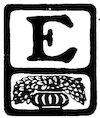
Every man and woman in the republic has a personal interest in this department of the government. You pay two cents for a stamp, throw a missive into a box, and start the machinery which requires 100,000 persons to run it. If your letter is for the Philippines, you use the railroad and the ocean steamer, with many relays of men and engines to perform your bidding. If your letter is for Alaska, you use the railroad, the steamship, and the reindeer team to deliver it. Not an hour, day or night, the entire year through, but men are toiling to hurry your mail to its destination If your letter is for one of the large cities, skilful men board the train, and as it approaches its destination distribute the mail for each district, so that your letter will not lie for hours in the central office. If your letter is to a busy farmer who may be in the midst of his harvest and has no time to go for his mail, one of the government’s faithful servants takes that letter to him. Yet we are much more likely, withal, to growl at Uncle Sam than to remember the faithful service we receive for so little money.
The Post-office Department is one which is not yet self-supporting. The last annual report of the Postmaster-General shows that the receipts from ordinary postal revenue amounted to $146,531,778.67; the receipts 101from money-order business, including for post-office orders which were uncalled for, added to the usual revenues, amounted to $111,631,193.39. The government expended $3,923,727.48 more than it received. This deficit is occasioned by the second-class matter, which includes newspapers and magazines paying less than cost of transportation. It is also due partly to the glaring abuse of the franking privilege by members of the Senate and House. If a description of what some of these men commit to Uncle Sam to carry for them free of charge were published they would hide their heads in shame. While this abuse continues we are not likely to get a one-cent rate on letters, a rate which would greatly benefit the entire country. Poor people are paying the postage for these Congressmen.
The United States Post-office Department and the post-office for the City of Washington are in a building on Pennsylvania Avenue, which extends over an entire square from Twelfth to Thirteenth Streets, N. W.
The Postmaster-General is a member of the President’s Cabinet. He receives $8,000 per annum for giving to his country services which a railroad or great newspaper would consider cheap at $25,000 per annum. There are four Assistant Postmaster-Generals who receive each about half as much as their chief. These are appointed by the President and confirmed by the Senate.
The Postmaster-General makes postal treaties with foreign governments, by and with the advice of the President, awards contracts, and directs the management of the domestic and foreign mails.
102The First Assistant Postmaster-General has charge of the salary and allowance division, free delivery system, post-office supplies, money-order division, dead-letter office, and the general correspondence.
The Second Assistant Postmaster-General has charge of the contract division, division of inspection, railway adjustment (which includes weighing and deciding on what pay shall be given railroads), the mail equipment division, and foreign mails.
The Third Assistant Postmaster-General has charge of postage stamps and postmasters’ accounts, registry office, and the special delivery system.
The Fourth Assistant Postmaster-General has the appointment of many postmasters and of post-office inspectors, and has charge of the bonds and commissions for postmasters. This last place is now filled by Mr. J. L. Bristow, of Kansas. During the first year of Mr. Roosevelt’s Presidency Mr. Bristow officially decapitated as many as fifty postmasters a day, and it is claimed it was a slow year in the business. Of course, for every one who lost his place some other fellow was made happy.
No impure books, pamphlets, or papers are allowed transportation by the United States mail. Men in this employ have a right to insist that their work shall not include indecent matter. As far as possible the government tries to prevent advertisers of dishonest businesses from using the mails for fraudulent gain. It is to be hoped that the time may soon come when all financial schemers who now defraud the wage-earning class by circulars on mining, oil, or industrial stock, or other doubtful enterprises, shall be obliged to prove 103to the government officials that the scheme represented is just what the circular sets forth. All Building Associations and Insurance Companies should pass under the same law. Good people would be glad of this inspection, and bad people make it necessary.
The Postmaster-General recommends that the government have inspectors appointed who shall see that neither telegraph nor express companies be permitted to carry matter for lotteries or any known fraudulent enterprise. The McKinley and Roosevelt administrations will be noted for the improvement and extension of the rural delivery system.
The dead-letter office is one of great interest, and is found in the general post-office building. Of unclaimed letters there were last year nearly six million; of misdirected letters, 454,000; and of letters without any address, 39,837. Any letter which is unclaimed at a post-office after a few weeks is sent to the dead-letter office. Here it is opened, and if it contains the name and address of the writer, the letter is returned; but letters signed “Your loving Amy,” “Your devoted mother,” “Your repentant son,” fail to reach the eyes and hearts of those who wait for them in vain. East year 526,345 unclaimed letters written in foreign countries, probably to loved ones in the United States, were sent to the dead-letter office. Think of the heartaches which that means! Think of the loves and friendships wrecked thereby!
Letters whose envelopes display the business card of the writer are returned to the sender by the local postmaster after a certain period. Papers, magazines, and books with insufficient postage are sent to the dead-letter 104office, held for a short time, and then distributed to hospitals, asylums, and penal institutions.
Wherever “Old Glory” floats, there the servants of Uncle Sam carry his mail. Of this department every citizen should be proud, for its speed and efficiency is equaled by no other mail service in the world.
XVIII
DEPARTMENT OF AGRICULTURE
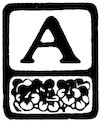
About fifty years ago, at the request of Hon. H. L. Ellsworth, the sum of one thousand dollars was set apart in the interest of agriculture; now there is a Department of Agriculture, and its Secretary is a member of the President’s Cabinet.
The present Secretary of this department is Hon. James Wilson, of Iowa. He served several terms in Congress, was Regent of the State University of Iowa, and for six years prior to his present appointment was Director of the Iowa Experimental Station and professor of agriculture at the Iowa Agricultural College, Ames, Iowa.
The Department of Agriculture consists of twenty different divisions, each one of which is worthy of a complete chapter. The department has many buildings, but the main one stands within the grounds of the Smithsonian Institution, in a bower of blooming plants and clinging vines. Every kind of plant from the tropics to the Arctic Circle which can be made to grow in this climate can be found in this department.
Studies in ornamentation, best methods of grafting, pruning, budding, hybridizing, and treating diseases of plants, trees, and animals are thoroughly investigated at its experimental stations.
Vegetable and flower seeds, grass seeds, plants, trees, 106bulbs, and grape-vines are distributed in the department through the Senators, members, and delegates of Congress. By this means the best varieties of the vegetable kingdom are carried throughout the United States. During the coming year the country will be more carefully districted, and only such seeds and plants as have been thoroughly acclimated will be sent to the several districts.
Members of Congress from cities exchange their quota of vegetable and crop seeds for flower seeds, thus leaving more of the former for members with a farming constituency.
The following statement shows the amounts of seeds, bulbs, plants, and trees, so far as the allotments have been made, for the fiscal year 1902–1903:
| Each Senator, member, and delegate will receive— | |
| Vegetable Seed | 12,000 packages, 5 papers each. |
| Novelties Vegetable Seed | 500 packages, 5 papers each. |
| Flower Seed | 500 packages, 5 papers each. |
| Tobacco Seed | 110 packages, 5 papers each, to districts growing tobacco. |
| Cotton Seed | 70 packages, 1 peck each, to districts growing cotton. |
| Lawn Grass Seed | 30 packages. |
| Forage Crop Seed | Allotment not yet made. |
| Sorghum Seed | Allotment not yet made. |
| Sugar Beet Seed | Allotment not yet made. |
| Bulbs | 10 boxes, 35 bulbs each; or 20 boxes, 17 bulbs each. |
| Grape-vines | 8 packages, 5 vines each. |
| Strawberry Plants | 10 packages, 15 plants each. |
| Trees | 20 packages, 5 trees each. |
For seed distributed alone the government appropriates $270,000. Think of the beneficence of that! 107The rarest and best seeds that money can buy will be planted in every State and Territory of this country. Experts are continually sent abroad to find new cereals, fruits trees, animals, and flowers.
The department has at least one correspondent in every county of the United States through whom the statistics on acreage, quality of crops, and success of experiments are reported at stated times.
All questions pertaining to farming are answered by this department. If a man desires to buy a farm in Kansas or Alaska, a portion of the country of which he knows little, the department will tell him of the climate, the crops likely to be remunerative, and the obstacles of soil or climate to overcome. A chemist will analyze the soil for him, tell him what it contains, and what it needs to produce certain crops. An entomologist will tell him the insects prevalent which may destroy his crops. The scientist will also tell him how to destroy the inserts, what birds to encourage and what to banish.
At Summerville, S. C., the government has a tea farm with a fully equipped factory, and the tea produced is claimed by experts to equal the best imported article. This year one thousand acres of rice land near Charleston, S. C., will be put in tea. The cost of producing American tea is about fifteen cents a pound; the yield is four hundred pounds to the acre, the wholesale selling price forty to fifty cents per pound, and the retail price seventy-five cents to one dollar per pound.
In the wheat-growing States the government is trying a fine variety of macaroni wheat, in order to compete 108successfully with the imported article, of which $8,000,000 worth enters this country annually.
In the cotton States the government is trying Egyptian cotton, which is now imported to the value of $8,000,000 annually.
In Arizona and other dry tracts dates and other Egyptian fruits are being successfully acclimated. In the hot states rubber, coffee, bananas, and cocoa are being tried.
Our fruit markets are being extended into Europe, and special agents and consuls are using every influence to enlarge this market. At the Paris Exposition our pears, apples, peaches, and plums were a never-ending surprise to people of all lands. Californians made us all proud of them by their lavish generosity, and the result has been that pears and apples have been sent in large quantities to Southern Europe, also to Russia and Siberia.
New cottons are being sent throughout the South, new prunes and plums along the Pacific Coast. Important experiments are being made in sugar producing. Pineapples are being acclimated in Florida, plants which produce bay rum and various perfumes are being introduced in several states, and olives from Italy are being tried in Porto Rico and the Philippines.
In many different States soils have been examined. In Lancaster County, Pennsylvania, it was found certain soils contain ingredients to produce the finest Cuban tobacco, and other soil regarded as useless was shown to be capable of producing certain rare plants. Every state should call for this kind of analytic help, until we make the United States the garden of the world.
XIX
DEPARTMENT OF CHEMISTRY ON PURE FOODS
DIETETICS

This subject of the relative value of foods is one that interests every individual. The Department of Agriculture is making a brave effort to secure a law regulating interstate and international commerce, requiring that all foods sent from one state to another, or to foreign countries, shall be labeled for just what they are, and shall conform to the government standard in excellence.
For instance, renovated or “process” butter is now passing its ordeal. “Process” butter means that a large quantity of butter has been sent to a factory or elsewhere, and there worked together and colored to secure uniformity of appearance, and then placed on the market. The government requires that it shall be properly labeled. It is of less nutritive value than either oleomargarine or butterine. A government leaflet gives householders and merchants full directions for discovering the real value of anything called butter. Every farmer should secure a copy of the Agricultural Year-book.
I remember once, a number of years ago, at a table in London, discussing with some merchants from South America the subject of buying their goods in the United States instead of England.
One man from British Guiana said: “It is impossible 110to deal with the United States; they have no food-test laws, and we buy one thing and get another. Then take machinery and implements. The first three or four purchases will be all right, after which they put off on us shelf-worn goods which they could not sell at home.”
When the government can put an official stamp on each article exported it will be good for the permanence of our export trade.
No such general law now exists, and the best our government can do is to certify that the goods comply with the standard of the country to which they are to be sent. It is believed that many of the preservatives used with food products are harmless to the human body, and a scientific test of this is now being conducted (December, 1902). The Agricultural Department has called upon the young scientists of the colleges and universities to assist in settling this question. A picked body of students have been supplied with the purest food to bring them to perfect condition, and soups, meats, vegetables, jellies, etc., containing preservatives claimed to be harmless will be given them, and as soon as a touch of dyspepsia is manifest the test will be dropped. It was doubtful whether football and baseball managers, not to mention such insignificant factors as professors and mothers, would consent that their favorites should be submitted to such experiments. But scientists are earnest seekers for truth, and enough subjects were readily found to make the trial.
It is not so much the making of impure foods that is objected to as it is an effort to provide that goods 111shall be labeled for what they are—that is, a can labeled raspberry jam shall not consist of gelatine with a few raspberry seeds and juice used for coloring, but shall be the real thing.
In recent testimony before Congress a case of this kind was brought out. A certain firm made jelly from the refuse of apples—that is, rotten and wilted apples, peelings and cores, stuff which when made cost the firm one and a half cents a pound—and this they sold as apple and currant jelly, selling hundreds of buckets. The government forced the firm to label the buckets correctly, and the sale became insignificant. Now, the poor need cheap foods, but it is not fair that they should have to pay more than a thing is worth; besides, such frauds interfere with the industry of the farmer’s wife who sells pure jelly.
The government now sends agents into every city, who buy from the shelves of grocers just what they offer for sale. The grocer, of course, does not recognize the government agent. The stuff is then sent to the laboratory, and the grocer and manufacturer notified as to results. The latter is told that his formula will be published, and before that is done he will be permitted to offer any statement that he may think advisable.
We are apt to think the “embalmed” meat agitation during the Spanish war will injure the trade of the country more than the war itself, but that agitation was right if it saved the health of even one soldier, and, above all, if it secures society in the future against deleterious canned meats.
It is well known, tho not approved by the government, 112that there are several canneries in the West where horse-flesh only is used. The government watches them closely and forces them to label the goods for just what they are. These goods are sent to such foreign countries as do not object to the use of horse-flesh.
Most States have stringent food laws, but so much food is sent from the State in which it is produced to another that State laws become inoperative.
The government finds glucose (not in itself harmful) to be the basis of many frauds. Colored and flavored it is sold as honey, and it is the foundation of very many jams. Cocoas and chocolates are made from wheat, corn, rice, potatoes; pepper, cinnamon, allspice, nutmegs, and mustards are made from almost every cereal. Pure vinegar is rare. Almost any kind of wine can be drawn from the same spigot, colored and flavored to suit the requirements of the wine desired.
Sometimes in foreign lands I have thought that London particularly needs a commission on pure coffee. I think I shall know the taste of chicory as long as I live from experiences in that city.
Most foreign countries make stringent food laws chiefly on liquors and butter. Germany draws close lines on meat, including all forms of sausage, with some restrictions on butter, wine, coloring on toys, and coloring matter generally.
Every European country has stringent laws on the composition of beer. I wonder how long American beer which rots the shoes of the bartender, and brings paralysis to his right hand, would be tolerated in Germany 113or Britain? At the Buffalo Exposition, in the government display, was one sample of “peach brandy,” the formula of which was forty gallons of proof spirits, one-half pound of an essence, one quart of sugar syrup, and a sufficient amount of coloring matter. The “bead oil” on the same shelf, it was claimed, was a solution of soap intended to produce a “bead” on liquors, and thereby give the appearance of age.
Could anything better prove the need of a government standard than the above, or the further facts that one man is now in the penitentiary for fraudulent use of the United States mail in advertising ground soapstone as a flour adulterant, and that fifteen cheaper oils are now used to adulterate pure olive oil?
If I were a young college woman I would go in for chemistry, and make myself a food specialist for grocers, exporters, and importers. I would make my home in some large institution where the food question as to what nutriments the body needs, and what will produce best results at the least cost, could be tested scientifically. I would take the cook and her helpers into a loving partnership to improve the dietetics of the establishment, and yet reduce expenses. There is a new business now ready for earnest college women.
XX
DEPARTMENT OF THE INTERIOR
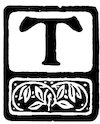
The Department of the Interior was created by act of Congress in 1849. When the names of its subdivisions are enumerated, it will readily be seen that no adequate description of it can be given in one or two chapters.
It comprises the Patent Office, the Pension Office, General Land Office, Bureau of Indian Affairs, Bureau of Education, Commissioner of Railroads, and the Office of the Geological Survey. Each office is managed by a commissioner or director, who has under him a large force of officials and clerks.
In the chief building of the Department of the Interior, fronting on F Street, and extending from Seventh to Ninth, and from F to G Streets, may be found the Patent Office of the United States. No other department so well reveals the inventive genius of the most inventive people on earth.
Once at a table in Paris a Frenchman said to me: “The Americans are inventors because they are lazy.”
“Well,” I said, “I have heard many surprising charges against my countrymen, but that excels all. How do you make that out?”
“Well, I am a manufacturer. I set an American boy to keep a door open; before half an hour he has invented a machine which will open and shut it, and I find my boy playing marbles.”

Photo by Clinedinst
THE PATENT OFFICE
115“Sensible boy! Yes, with that view of it, maybe we are; we certainly do not care to do by hand that which a machine can better perform.”
The Patent Office is one of the few departments which is more than self-supporting. In the year 1836 but one patent was taken out; during the year ending December 31, 1901, the total number of applications was 46,449. The total receipts for the year were $6,626,856.71; total expenditures, $1,297,385.64—leaving a balance far over five million dollars in favor of the government.
There are divisions for different classes of inventions. When a patent is applied for, examiners make all necessary investigations, and carefully look into the invention claimed to be new, comparing it, part by part, with patents already existing before determining whether a patent can be granted. They have a library with plates and descriptions of about everything under the sun. From this library inventors can have books and plates sent them in order to compare their work with inventions now existing.
The Secretary of the Interior is a member of the President’s Cabinet, and receives $8,000 per year. He has charge of the Capitol (through the architect), the Insane Asylum, and the College for Mutes—indeed, it would seem that his work is sufficient for ten Secretaries.
There is an Assistant Secretary of the Interior, who receives $4,000 per annum, and commissioners of different divisions and bureaus who receive from $3,000 to $6,000 annually.
Many officers of this department could command 116higher salaries in the commercial world, but these positions secure honor and respect not only for the man himself but also for his descendants, hence these commissionerships are very desirable. For that reason men give up a legal practise or a railroad position, bringing salaries eight or ten times as large, to serve the government.
The present Secretary, Ethan Allen Hitchcock, of Missouri, great-grandson of Ethan Allen, of Vermont, has a wide experience in manufacturing, railroad, and mining interests, and has served as Ambassador at the Court of Russia. He was called to his present place by President McKinley in 1898.
The Secretary in his report for 1901 entreats that at least twenty more persons of fine mechanical ability be appointed as examiners, as his force is much behind in their work, altho many labor far over allotted time.
The Bureau of Education, established in 1867, is probably as little known to the general public as any branch of the government. It is the clearing-house for educational matters of the entire United States.
The Commissioner of Education, Hon. William T. Harris, is one of the great educators of the world. It is probable if the teachers of the United States could have a personal vote, their unanimous choice would fall upon Dr. Harris as their Commissioner. The offices of the Bureau of Education are in a brick building at the corner of G and Eighth Streets.
The Commissioner has about forty assistants, who are confined to about twenty-eight rooms. This office collects, tabulates, and reports on all schools in the United States. Any one who desires to compare the curriculums 117of different institutions consults the Commissioner’s report. Or should one desire to know what is being done in Europe, or any other part of the world, along the line of art in schools, or manual or industrial training, or the advanced education for women, all such inquiries can be answered by reference to the Commissioner’s report.
This bureau is held in high estimation in Europe. Many of the South American republics and some Asiatic countries are trying, through the reports of Dr. Harris, to model their school systems after that of the United States.
Miss Frances G. French has charge of the foreign correspondence, and tabulates statistics and reports on thirty-two foreign countries.
The school work presented by the Department of Education at Paris in 1900 secured favorable commendation from the best educators of Europe. Only three commissioners have preceded Dr. Harris: Hon. Henry Barnard, 1867–1870; Hon. John Eaton, 1870–1886; Hon. N. H. R. Dawson, 1886–1889. The latter was a brother-in-law of Abraham Lincoln. Dr. Harris was appointed by President Harrison, September, 1889. The best work of the Bureau of Education lies in bringing about homogeneity in the work of education throughout the United States. Without the tabulated work of the Superintendents of States, how would the Superintendent of, say, one of the Dakotas, know whether the work of the public schools of his State corresponds with the work done in New York or Pennsylvania? Yet the boy educated in Dakota may have to do his life-work in Pennsylvania. Then the Commissioner’s 118report keeps us informed what the State, Nation, or Church is doing for the education of the colored race, the Indian, or the people of our new possessions.
A short extract from the Commissioner’s report of 1899 will give an idea of the tabulated work for women:
The barriers to woman’s higher education seem effectually removed, and to-day eight-tenths of the colleges, universities, and professional schools of the United States are open to women students. As is stated by ex-President Alice Freeman Palmer, of Wellesley College, “30,000 girls have graduated from colleges, while 40,000 more are preparing to graduate.” The obtaining of a collegiate education gives the women more ambition to enter a profession, or, if they decide to marry, it is stated that—
The advanced education they have received has added to their natural endowments wisdom, strength, patience, balance, and self-control ... and in addition to a wise discharge of their domestic duties, their homes have become centers of scientific or literary study or of philanthropy in the communities where they live.
It is stated that the advancement of women in professional life is less rapid than in literature. The training of women for medical practise was long opposed by medical schools and men physicians. Equally tedious was the effort to obtain legal instruction and admission to the legal profession, and even to-day the admission to theological schools and the ministry is seriously contested; yet all these professions are gradually being opened to women. In 1896–97 there were in the United States 1,583 women pursuing medical studies to 1,471 in 1895–96; in dentistry, 150 women in 1896–97 to 143 in 1895–96; in pharmacy, 131 in 1896–97 to 140 in 1895–96. In law courses of professional schools were 131 women in 1896–97 to 77 in 1895–96; in theological courses 193 women in 1896–97.
The only aggressive work done by this bureau is in 119Alaska, and of this Dr. Sheldon Jackson is agent or superintendent. Besides doing a great work in education, this department has brought about 1,300 deer from Siberia to take the place of dogs, mules, and horses in transportation, and at the same time to give milk, butter, cheese, and meat to the population. The reindeer are self-supporting, living on the moss which grows abundantly.
These animals are loaned to individuals or missions, and at the end of five years the government requires an equivalent number to be returned. The Eskimo, the Lapp, and the Finn become expert in handling these herds, now numbering many thousands. By them mails are carried, and whalers, sealers, miners, and soldiers rescued from starvation, danger, or death.
The education as well as religious training of Alaska is up to this time conducted through the mission stations, all of which are visited, encouraged, and assisted by Dr. Jackson.
The Youth’s Companion tersely states the present condition of things:
When the churches first planned to send missionaries and teachers into Alaska, representatives of the several denominations met and divided the territory among them. Should the traveler ask the ordinary Alaskan miner what is the result of effort, he would probably be answered that there has been no result. The miner, in the words of Dr. Sheldon Jackson, is unconscious that the very fact of his presence there at all is the direct outcome of Christian missions. In 1877 Sitka and St. Michaels were armed trading-posts, out of which the soldiers shut the natives every night, that the inhabitants might rest in safety. For ten years not a single whaler dared to stay overnight at Cape Prince of Wales, so savage was the 120native population. Now, in all those ports, the miner and whaler and traveler can dwell in safety, because of the civilizing work of the missionaries. Probably ten thousand natives have been brought under Christian influences, and many public as well as mission schools have been opened.
Among the Moravian missions of the Yukon Valley few of the natives can read or write. At bedtime a bell rings, and the entire population goes to the churches. A chapter in the Bible is read, a prayer offered, a hymn sung; and the men, women, and children return to their homes and go to bed. Where in the United States can be found a better record?
In introducing religion with the arts, sciences, and conveniences of civilization, Dr. Jackson’s work reminds one of the words of Whittier:
XXI
BRANCHES OF THE DEPARTMENT OF THE INTERIOR
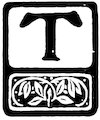
The Gallaudet College for the Deaf is situated in Northeast Washington, at Kendall Green. It is surrounded by about one hundred acres of ground. Until within a year it has been known as the Columbian Institution for the Deaf and Dumb, but the Board of Directors, at the request of the alumni, wisely changed it to Gallaudet College, in honor and memory of Thomas Hopkins Gallaudet, founder of deaf-mute education in America. The honor is also deserved by the Hon. Edward M. Gallaudet, LL.D., its president at the time. He is probably the greatest teacher of mutes now living. He is certainly the most distinguished one. It is the only real college for this unfortunate class in the world. All the other schools for mutes in this country only prepare them to enter this institution. The college embraces, in a four years’ course, languages, mathematics, natural science, history, philosophy, and political science—about the usual classical course in any college.
They are instructed by what is known as the combined method—that is, both the oral and sign methods are used.
Mutes among themselves greatly prefer signs. All mutes can not learn the oral method, and I know by 122experience among mutes that the talking which they learn is not very satisfactory. Their voices are too loud or too low; in some of them the sound of the voice is most distressing, not having the ear by which to regulate it.
I met one woman in Washington stone-deaf who could talk as well as any one, and I had met her three times before I knew she was deficient in any sense. Then she took me by the shoulders and turned me toward the window, saying: “I do believe you are talking. You know I can not hear thunder, so I must see your lips.”
The director for the school of mutes in Japan made a lengthy visit to Washington to study the methods of the college instruction, and several countries of Europe have sent delegates to examine its workings. Dr. Gallaudet has visited every great school for mutes in Europe—not once, but several times—so that he brings to his great work not only his own skill, knowledge, and experience, but also the results of his observations in many lands.
Congress appropriates about $50,000 per year for the support of this college. Here the mutes from the District of Columbia and of the Army and Navy, besides sixty indigent students from different parts of the country, without charge for board, receive a college training. Beside these there are many who pay full tuition. The annual attendance is between one and two hundred. About six hundred young men and women have been graduated, showing that deafness does not interfere with the highest mental culture.
123The following extract from the report of 1893 will give an idea of the beneficent work of this government institution. The report says:
Fifty-seven who have gone out from the college have been engaged in teaching; four have entered the Christian ministry; three have become editors and publishers of newspapers; three others have taken positions connected with journalism; fifteen have entered the civil service of the government—one of these, who had risen rapidly to a high and responsible position, resigned to enter upon the practise of law in patent cases in Cincinnati and Chicago, and has been admitted to practise in the Supreme Court of the United States; one is the official botanist of a State, who has correspondents in several countries of Europe who have repeatedly purchased his collections, and he has written papers upon seed tests and related subjects which have been published and circulated by the Agricultural Department; one, while filling a position as instructor in a Western institution, has rendered important service to the Coast Survey as a microscopist, and one is engaged as an engraver in the chief office of the Survey. Of three who became draftsmen in architects’ offices, one is in successful practise as an architect on his own account, which is also true of another, who completed his preparation by a course of study in Europe; one has been repeatedly elected recorder of deeds in a Southern city, and two others are recorders’ clerks in the West; one was elected and still sits as a city councilman; another has been elected city treasurer and is at present cashier of a national bank; one has become eminent as a practical chemist and assayer; two are members of the faculty of the college, and two others are rendering valuable service as instructors therein; some have gone into mercantile and other offices; some have undertaken business on their own account, while not a few have chosen agricultural and mechanical pursuits, in which the advantages of thorough mental training will give them a superiority over those not so well educated. Of those alluded to as having engaged in teaching, one has been the 124principal of a flourishing institution in Pennsylvania; one is now in his second year as principal of the Ohio institution; one has been at the head of a day-school in Cincinnati, and later of the Colorado institution; a third has had charge of the Oregon institution; a fourth is at the head of a day-school in St. Louis; three others have respectively founded and are now at the head of schools in New Mexico, North Dakota, and Evansville, Ind., and others have done pioneer work in establishing schools in Florida and in Utah.
In Dr. Gallaudet’s travels he was met in every country by the educated mutes, and by his sign language could converse with them, showing that the world has at least one universal language. Every honor that grateful hearts could shower upon a devoted friend and philanthropist was shown the doctor in his travels in Europe. He deserves them all.
The Smithsonian Institution is situated on a fifty-two acre reservation between the Capitol and the Potomac River. The main building is near the center of the grounds opposite Tenth Street, West. It is built of a fine light purplish gray freestone which is soft when it comes from the quarry, but becomes almost like granite on long exposure to the air. It constitutes the great National Museum, in animal, vegetable, geological, and even social life. Relics of almost every administration, particularly from Washington’s to Jackson’s time, are preserved here.
James Smithson was the natural son of Sir Hugh Smithson, first Duke of Northumberland. James Smithson took a degree in Oxford in 1786. He died in Genoa, June, 1829. He desired to found in the United States, a land he never saw, an institution which should live in the memory of men when the titles of his ancestors, 125the Northumberlands and the Percys, were extinct and forgotten.
The institution is for the increase of knowledge among men. It assists scientific men in original research, and it publishes the results, which are sent to leading libraries, and are also accessible to scientists throughout the land.
The bequest was for several years before Congress, but in 1846, when the funds had reached three-fourths of a million dollars, the Smithsonian Institution was founded.
Its translators turn all scientific works into English, so that Americans can have the benefit of them in their own language.
Miss Thora Steineger, a Norwegian lady, has charge of the classification of all animals received by the Smithsonian. Women’s work in the scientific departments is gradually increasing, as colleges, like Vassar, Wellesley, Smith, and Bryn Mawr give more and more attention to science.
Here one can see the birds of all lands, animals of every clime, vegetation from every latitude. The idols of heathendom glare at passers-by; the quaint costumes of the Asiatics, the Eskimos of the extreme North, and the inhabitants of the islands of the sea are worn by wax figures so lifelike that one almost fears to make any comment in their presence.
The fruits of much of the learning of the world are under this roof, and every youth in our land should see its classic stores.
XXII
BUREAU OF INDIAN AFFAIRS
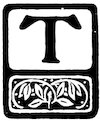
This bureau is located in a beautiful white marble building between Seventh and Eighth streets, facing the Patent Office. These two buildings are among the very best specimens of architecture in the capital.
Hon. William A. Jones, the Commissioner of Indian Affairs, receives a salary of $4,000; the Assistant Commissioner receives $3,000. They have about one hundred assistants in Washington, consisting of clerks, bookkeepers, stenographers, superintendents, architects, draftsmen, etc. Of persons connected with Indian affairs, on the field, including Indian agents, storekeepers, teachers, farmers, and artisans, fully 10,000 are paid government money. There are in the United States, exclusive of Alaska, 269,388 Indians under the government care. Of these, 184,881 are not included in the five great tribes. Over 98,000 of these Indians wear the dress of civilization, and over 46,000 can read and write. Of communicant church-members there are 30,935—not a very large proportion after two hundred years of instruction.
There are 59 agencies, and about 20,000 Indians outside of the agencies. The reservations are, generally speaking, the lands which white men considered they would never want, being the most barren, forlorn, hopeless spots in the state or territory in which they 127are located. Bad as they are, many of them are now coveted by the white man, who, under the plea of breaking up Indian tribal relations, will within a few years buy or appropriate the last acre.
There are now no nomadic tribes; the hunting-grounds are all taken, and the Indian must work, receive government rations, or die. The Indians receive over $200,000 in money, some by contract receive rations through removal, and all are assisted with agricultural implements, seeds, and breeding animals.
It was once my lot to see an Indian tribe forcibly removed from some place in the North to the Indian Territory. A more sorrowful sight can scarcely be imagined. My recollection is that they were the Nez Percés. They were large men with fine heads and faces. The women were worthy to be the mothers of warriors. As they camped for the night, the men gathered in small circular groups, sat Turkish fashion on the ground, and smoked their pipes in absolute silence. Sorrow, dejection, and despair were written all over them. The women pitched the tents and cooked the suppers, with the bent bodies and cast-down countenances of broken hearts.
A company of regular army men was their escort. I spoke to the officers. The captain said: “I hope my government will never again detail my company to do such work. It simply uses me up to see these broken-hearted people. Many have escaped, but I can not shoot them.”
That they have been deeply wronged, no one doubts; that they are still in many cases victims of the white man’s cupidity, is self-evident; but the government is 128trying to do the best now possible for them. It is not possible in a short time to correct the errors of a century, but when kind hearts and wise brains are acting in their behalf the future may be considered more hopeful.
It is gratifying to see that the present Commissioner urges that local schools shall do the work with the Indians, for even tho the Indian should learn less, his home ties will be maintained, and his knowledge, as it is acquired, will be applied in the home. Then the reconcentrado methods can be abolished.
Young Indians should be placed with farmers to learn farming, and paid as much as their work is worth. In the same way girls should learn housekeeping. Of all people the Indian is a social being. If placed on farms all the homes would center in one place. Our young white people can not stand the loneliness of the farm; how can we expect people who have had tribal relations to endure it?
The white man’s trades and occupations only to the degree positively needed should be forced upon them; but their own bead-work, fancy baskets, queer pottery, and Navajo blankets should be greatly improved, and their artistic tastes in their own line cultivated. Let us make them see that we white people like their own characteristic work, and we will not need to turn their industry into new lines.
Miss Estelle Reel, Superintendent of Indian Schools, visits all the Indian schools, whether in civilization at Carlisle and Hampton or at the farthest reservation. She receives a salary of $3,000, with an allowance of $1,500 for traveling expenses. Stage-coach, buckboard, railroad, boat, and canoe are familiar servants in her work.
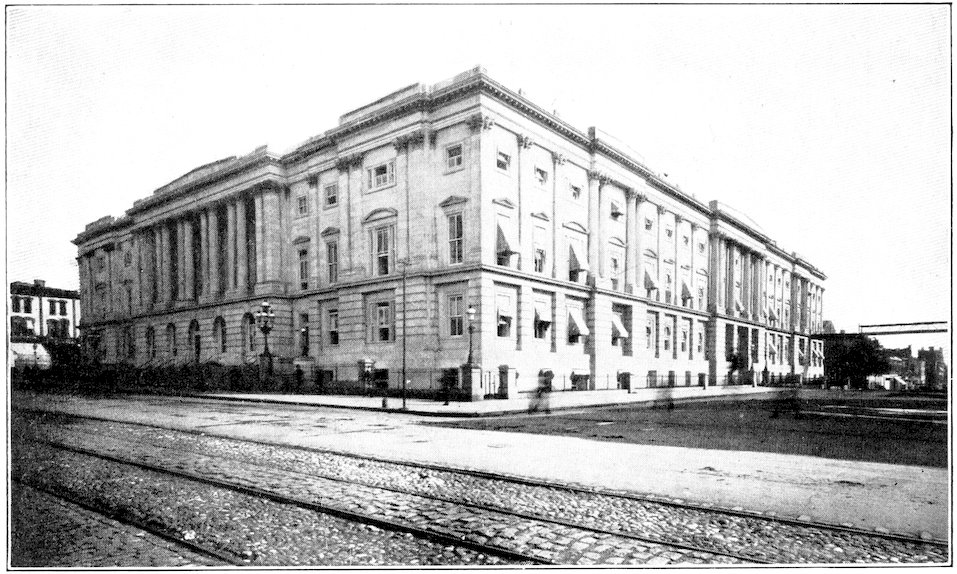
Photo by Clinedinst
THE BUREAU OF INDIAN AFFAIRS

Photo by Clinedinst
THE CONGRESSIONAL LIBRARY
Looking from the Capitol

Photo by Clinedinst
GRAND STAIRWAY OF THE CONGRESSIONAL LIBRARY
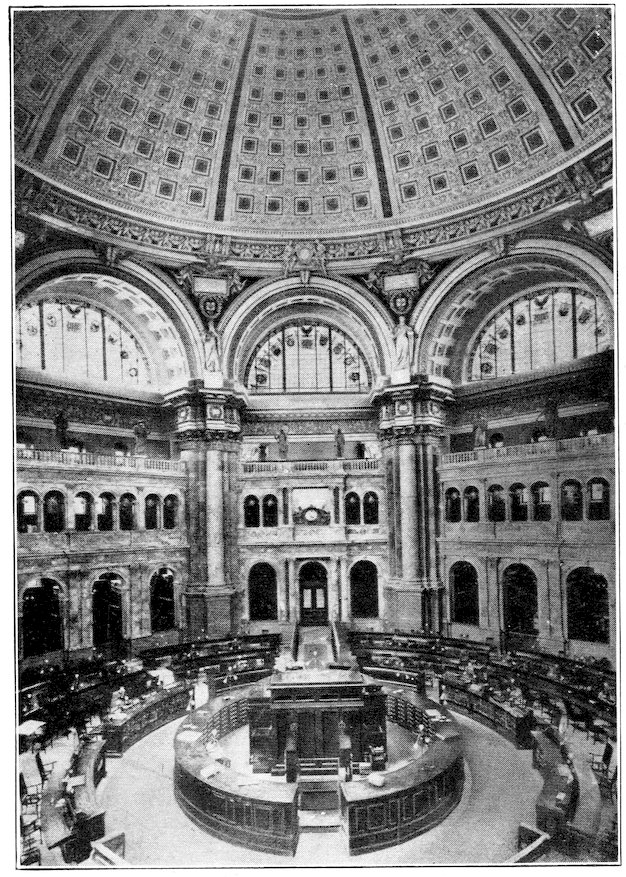
Photo by Clinedinst
THE ROTUNDA (READING-ROOM) OF THE CONGRESSIONAL LIBRARY

Photo by Clinedinst
THE PENSION OFFICE
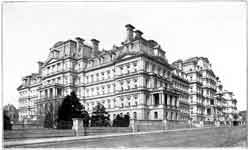
Photo by Clinedinst
THE STATE, WAR, AND NAVY DEPARTMENTS
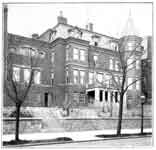
Photo by Clinedinst
THE GERMAN EMBASSY
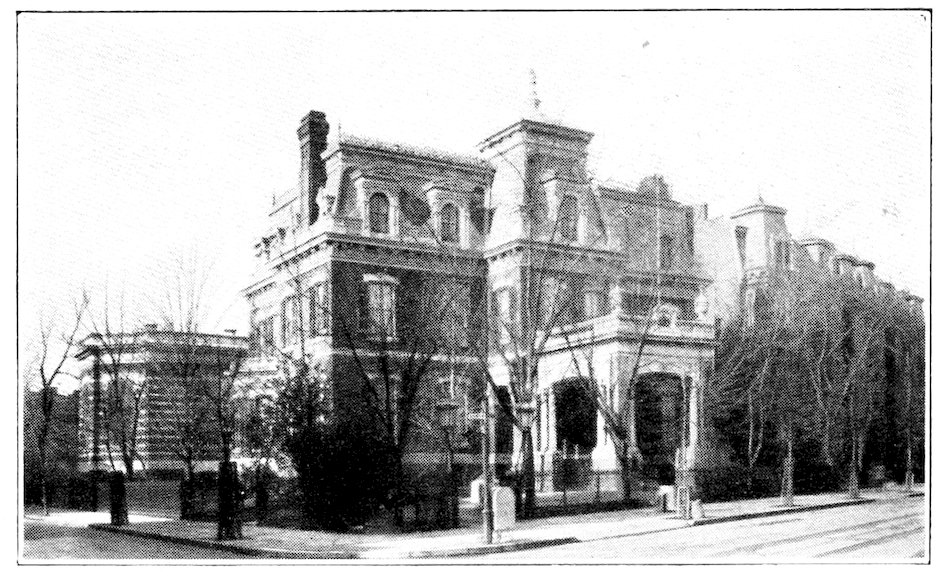
Photo by Clinedinst
THE BRITISH EMBASSY

Photo by Clinedinst
THE FRENCH EMBASSY

Photo by Clinedinst
THE RUSSIAN EMBASSY
129Every line of her splendid reports teems with heart-and-soul enthusiasm. She has just put out a book entitled, “Course of Study for the Indian Schools of the United States, Industrial and Literary.” Besides the common school branches, it treats of the elements of agriculture, bakery, basketry, blacksmithing, carpentry, cooking, housekeeping, laundry, physiology, shoemaking, tailoring, upholstering, and, in fact, almost everything needed in daily living. Through it all runs a real practical teaching in morality—that good work is truth, bad work is untruth. Work in any one is the measure of character.
You remember President Roosevelt, in his New York speech concerning missions, spoke of the great underpaid army of faithful clergymen all over this land who, in obscure places, hold up the correct models of morality, who keep the ideals of the nation to honest, simple, earnest, true daily living. Much more is this true of the missionaries among the Indians.
I remember once visiting the Indian school at Albuquerque, New Mexico. Professor Bryan was then at the head of it. The school was partly supported by funds from the Presbyterian Church and partly by government money. At the table I was trying to find from each one his or her share in the great work they were doing. I asked each one, and each gave me a short, graphic account of his work. I sat at Professor Bryan’s right hand; just opposite me sat a brightfaced German, looking the wisest person at the table. 130As I came to him I said, “And you, Professor?” “Madam, I am the cook.” Whether my face flushed with surprise or not I do not know. No one smiled. After a somewhat embarrassing moment for me, he said: “Madam, since I was a little boy I have desired to be a missionary to the Indians. I received a good education, graduated at the Berlin University, took a course in theology at a seminary in Germany, then came here, where I found that my imperfect English was an insurmountable barrier to religious work among the Indians. We had no cook. Some of our best teachers were ill nearly all the time, so I became the cook, and I do it unto God, believing that every soul saved by these devoted workers, whose health I have improved, is part of my work. Do you approve?”
“Do I approve?” I said. “Why, every pot and kettle becomes a sanctified implement in your hand. The Master said: ‘And whosoever of you will be the chiefest, shall be servant of all. For even the Son of man came not to be ministered unto, but to minister, and to give his life a ransom for many.’”
XXIII
THE LIBRARY OF CONGRESS

The great necessity for a separate building for a Congressional Library was first urged by Mr. A. R. Spofford, in his Librarian’s Report in 1872. An appropriation was made for the purchase of the ground in 1886. The site consists of ten acres of ground, facing the east front of the Capitol. The ground and the old buildings upon it cost $585,000, and the building itself, $6,032,124.34.
It is the handsomest, most convenient, and best lighted and ventilated library building in the world, and I believe it to be the handsomest building for public purposes in the world. The building is of the Italian Rennaissance order of architecture. It has three stories and a dome, and covers three and a half acres of ground. Its dimensions are 470 × 340 feet, and the height of the wall 69 feet.
The Library, or collection of books, was founded in 1800, Congress appropriating $5,000 for that purpose. When the Capitol building was fired by the British, this Library was nearly destroyed. It also suffered from fire in 1851.
The Library of Congress purchases rare books from all lands. Its chief source of supply is through the copyright law, which requires that two copies of every book copyrighted should be sent to the Library. It has 132acquired by gift or purchase the Library of Thomas Jefferson, of 6,700 volumes, for which $23,950 was paid, the Force Historical Collection in 1865, the Smithsonian Library in 1867, and the Toner Collection in 1882.
The Smithsonian division is largely composed of books on scientific subjects. The law library of over 92,000 books yet remains in the Capitol building.
The Force Library is a fine collection of books, manuscripts, and papers concerning the early history of America, especially of the Colonial times.
Every picture, photograph, piece of music, engraving, dramatic production, pamphlet, or brochure published in the United States can be found here in the copyright edition. The collection is the largest in the western hemisphere, comprising about 1,000,000 books and pamphlets. The Library has forty-five miles of shelving, which is more than twice its present requirements. There are in the book division 207 employees, and in the copyright-rooms 49. The caretakers number 116. The appropriations by Congress for service, and for the printing, binding, and purchasing of books, amount to not less than $1,000,000 annually.
Any one can read or study in the Library, but only Congressmen, members of the Supreme Court or their families, or the President’s family, are permitted to take books from the building. No pen-and-ink work is allowed in the Library, for fear of stains.
In the basement, one room is set apart for the blind, where they may read for themselves, and almost every afternoon they have a concert, or some noted author reads from his own writings, or some distinguished speaker lectures before a most appreciative audience of blind people.

ONE OF THE BRONZE DOORS OF THE CONGRESSIONAL LIBRARY
134The present Librarian is Mr. Herbert Putnam, of Boston. The most interesting personality in the building is Mr. Ainsworth R. Spofford, who was the Librarian from 1864 to 1897. He was appointed during Mr. Lincoln’s administration. He is a walking encyclopedia.
I once asked him for the names of a few books on anthropology. He poured out such a stream of titles and authors that I was obliged to call for quarter. He then wrote me out a list of fifteen titles and authors, taking only a minute or two for the whole matter. He seems conversant with every subject. His memory concerning books is simply phenomenal.
In the Library is a perfect copy of Eliot’s Indian Bible, published in Cambridge in 1661, the last copy of which brought $1,000. Here, too, may be found the works of Cotton and Increase Mather (1671 to 1735), and leading journals, all publications of our country from 1735 to 1800. Bound volumes of many of them can also be found here. The first edition of the Mormon Bible, published in 1830, and printed at Palmyra, New York; Archbishop Cramer’s version of the Bible, 1553; Martin Luther’s Bible; and the Catholic version of the New Testament, 1582, are among the rare volumes in the Library of Congress.
An extract from a copy of the Washington Post of 1897 well describes the official test of the device for sending books to and from the Capitol:
An official test of the device for transporting books between 135the Capitol and the new Congressional Library was made yesterday afternoon. Mr. John Russell Young, the Librarian; Chief Assistant Librarian Spofford, and Superintendent Bernard R. Green assembled in the small receiving-room, just off Statuary Hall, about 2 o’clock. Mr. Young had prepared for the test a list of books known only to himself until they were ordered from the Library.
The first volume sent for was William Winter’s poems. Mr. Young gave out the name and Mr. Green wrote it on a slip of paper. This was placed in the pneumatic tube, which flashed it to Mr. David Hutcheson, who is in charge of the reading-room of the new Library. The book was ordered by Mr. Hutcheson from the shelf-clerk and sent to the desk in the center of the reading-room by the Library carrier. It was then taken to the big carrier in the basement and started on its journey to the Capitol. The time consumed from the moment of sending the order by pneumatic tube until the leather case containing the desired volume deposited its cargo before Mr. Young was exactly ten minutes.
Mr. Young then sent for a copy of “Faust” in German, Hugo’s “Les Châtiments,” and Hildreth’s “History of the United States,” vol. i., all on one order, and for the London Times of 1815, the year of the battle of Waterloo, on a separate order. The “Faust” and the history arrived in eight minutes and “Les Châtiments” on the next carrier. The order for the London Times was an extreme test, as the volume is so large that the carriers in the Library connecting with the shelves would not accommodate it, and a messenger had to be sent from the main desk to the top deck of the south stack, where the newspaper files are shelved. When the messenger returned he just missed the carrier, which had been sent off with one of the other volumes ordered, and he had to wait the four minutes consumed by the transit of the carriers before he could start the Times on its journey. It arrived at the Capitol just thirteen minutes after the order for it was sent.
The carrier consists of an endless cable, with two metal baskets at an equal distance from each other. These work 136on the cable, the power for which is furnished by the Library dynamo. The books are carried through the tunnel, and when they reach the wheels which change the direction, the speed is automatically slackened, so that the delivery is made gently and without the possibility of damage. Smaller books are first placed in a large sole-leather case. The carriers are taken through the tunnel at the rate of six hundred feet per minute. Should any trouble occur, the mechanism can be instantly stopped by an electric button, one at each end. The machinery of the carriers and its instalment was largely the work of Superintendent Green.
All who witnessed the test were surprised at the ease and swiftness with which the books could be sent for, taken from the shelves, and transported a distance of about a quarter of a mile. Librarian Young was very much gratified. He characterized the system as remarkable. The test also demonstrated that the arrangement of the books in their new quarters is perfect, as those sent for were selected at random and were readily picked out from the enormous collection by those in charge of the shelves.
In this labyrinth of beauty, known as the Library of Congress, I believe a man would see no fault. But women, except as allegorical characters, such as imaginary figures of history, science, pomology, art, etc., have no share in the scheme of ornamentation. But men of all ages, of all branches of art, science, commerce, and literature, are memorialized in painting, sculpture, writing, or suggestion of some kind, either concrete or abstract. It is true, Sappho (whom I suppose the artist thought was a man), grown dim in the long vista of years, is a lone woman among the world’s élite. No George Eliot, nor George Sand, nor Harriet Hosmer, nor Rosa Bonheur, nor Mrs. Browning, nor Mrs. Stowe now stands near Holmes, 137Whittier, Longfellow, Byron, or Landseer. This omission is not like our gallant American men.
I remember once at a table in London some distinguished English women were complimenting the achievements of American women. I replied, “I have met the college women of almost every European country. I do not find American women in any way mentally superior to the women of Europe. But American women accomplish much more than their sisters east of the Atlantic simply because of our men. Now here in England your husband and brothers insist on silence, but with us if a woman sings or talks well it is the hand of her husband or father that leads her to the front, and it is the kindness of our men that starts us on our public life, helps us at hard places, and encourages us everywhere. No, it is not our women who are superior, it is our men, our gracious, helpful men.”
Whatever women in the United States have accomplished beyond their sisters in foreign lands has been done because of the friendly, cordial, helpful encouragement of their husbands, brothers, and fathers; so in this Library the womanhood of the world is slighted in the house of her friends.
XXIV
THE PENSION OFFICE
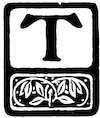
The Pension building is situated on Judiciary Square, near G Street. It is the largest department building in Washington, being 400 feet from east to west and 200 from north to south, and 75 feet high.
The walls surround an interior courtyard, two galleries extend around this court, and from these galleries access is attained to the rooms on the second and third stories. The building cost half a million dollars; it is of mixed architecture, not beautiful in appearance, but the best lighted, heated, and ventilated department building in the city. It is sometimes called “the Meigs (name of architect) Barn,” because its outline is not unlike a Pennsylvania red barn.
When the architect had finished escorting General Sheridan through the building, just after its completion, the former inquired enthusiastically, “Well, Sheridan, how do you like it?”
“I find only one fault,” said the General, solemnly; “it is fireproof.”
At the close of the year 1900 there were on the rolls 993,529 pensioners. During 1901 there were added 44,225 new ones, and 3,567 were restored to the rolls, making in all 1,041,321. This number is 4,000 in excess of that of any other year.
There remain on the rolls the names of four widows 139and five daughters of Revolutionary soldiers. In the last report of the Commissioner of Pensions but one soldier of the war of 1812 survived. He was at that time (September 10, 1901) 101 years of age. Of the Mexican War, the names of 1,086 soldiers and 3,479 widows are still on the rolls; of the Indian wars (1832–1842), 7,568 survivors and 8,109 widows. The war with Spain left a legacy of 2,643 invalids, 1,176 widows, and 650 nurses, drawing pensions. Besides these there is the great army of Civil War pensioners.
If the government would, at least twice each year, publish in each county the names of persons receiving pensions, the amount paid, and the alleged cause of disability, it would bring the blush of shame to the face of many a liar who now draws a handsome sum from his government. The money is largely paid into the United States Treasury not by the rich of our country, but by the laboring class of men and women.
Patriotism which requires a life-long stipend is of doubtful color.
Soldiers of the Spanish War at the time of their discharge were obliged to sign papers declaring any disability which existed. Then each soldier was examined by the surgeon and his company officers, and these again certified either to his perfect health or to his disability. It was found that the health of many had been greatly improved by exercise in the open air, free life, and plain diet.
Eleven years after the Civil War only six per cent. of the Union soldiers and sailors had applied for a pension; now only a little over three years has passed 140since the close of the one hundred days’ war with Spain, yet more than twenty per cent. of the soldiers and sailors of that war have applied for pensions.
The great majority of those mustered out had declared over their own signatures, and that of the surgeon and commanding officer of the company to which they belonged, that they had no disability whatever. Yet thousands of these very men have applied for pensions, and in their applications have set forth in minute detail the large number of disabilities acquired in the service. One man within forty-eight hours after his discharge as a sound man discovered ten physical ills, any one of which should suffice to secure the bounty of a generous government.
I submit the following extract from Commissioner Evans’ last report:
A good object-lesson in this regard is furnished by the history of a volunteer regiment which was recognized as one of the “crack” regiments in service during the war with Spain. Its membership was notably a fine body of men, and its officers were men of experience and ability and skilled in military matters. Few regiments had as good a record for service as this one. It was at Camp Alger for a time, then at Camp Thomas, then at Tampa, Fla.; thence sailed for Santiago de Cuba, where it was placed in the trenches and did good service until it returned to Montauk. From there it was returned to the place of its enrolment, and at the expiration of a sixty days’ furlough was mustered out of service.
This regiment had a membership of 53 commissioned officers and 937 enlisted men. There were no battle-field casualties, but 1 officer and 22 men died of disease while in the service. The published report of the medical officer on the muster out of this regiment shows that 1 per cent. of the men of the regiment were improved by military service; 5 per cent. were in as good physical 141condition as at time of enlistment; 24 per cent. were but slightly affected, and, as a rule, the troubles were not traceable to military service. Of the remainder (70 per cent.), or 528 men, the general condition was as follows:
| Irritable heart, due to fever | 365 |
| Mitral regurgitation | 4 |
| Chronic bronchitis | 214 |
| Acute bronchitis | 47 |
| Phthisis | 3 |
| Gastritis | 158 |
| Enlarged or congested liver | 116 |
| Enlarged spleen | 316 |
| Inflammatory condition of intestines | 53 |
| Irritability of bladder and incontinence of urine | 76 |
| Nephritis | 5 |
| Hemorrhoids | 11 |
| Varicocele | 61 |
| Inguinal hernia | 3 |
| Rheumatism | 26 |
| Myopia | 19 |
| Slight eye strains | 29 |
| Slight deafness, due to quinine | 17 |
| Chronic nasal catarrh | 9 |
| Sprain of back | 3 |
| Old dislocation, right shoulder | 1 |
| Gunshot wounds, left forearm | 2 |
| Badly set Colle’s fracture | 1 |
| Secondary syphilis | 2 |
| Suffering from pains in the muscles, especially the calves of the legs and lumbar region, loss of weight from 10 to 30 pounds, accompanied by more or less debility | 471 |
| Relapses of fever continuing to recur up to January 4, 1899 | 87 |
Up to June 30, 1901, 477 claims for pension have been filed in this bureau on account of service in said regiment for disabilities alleged to have been contracted during the brief term of its existence.
I am fully convinced that a small pension of $6 or $8 per month for alleged obscure disability, such as diarrhea, piles, rheumatism, impaired hearing, bronchitis, etc., is conferring a misfortune upon a young man—in fact, a life-long misfortune—for 142the reason that it puts him to a decided disadvantage in the race for a livelihood always thereafter in the way of securing employment.
The fact that he is drawing a “disability” pension puts him on the list as disabled and unable to perform the amount of labor that is expected of a sound man, and it seems like misplaced generosity on the part of our government to thus place a handicap upon the young ex-soldier in his search for employment, as it is well known that a large percentage of the young men that served in the war with Spain depend upon manual labor for a livelihood.
Mr. Eugene F. Ware, the new Commissioner, has issued the following table, to show the difference between the regulars and volunteers of the Spanish-American War:
| REGIMENTS | Killed | Wounded | Missing | Claims filed for pensions |
|---|---|---|---|---|
| Volunteers— | ||||
| 1st—District of Columbia | 0 | 0 | 0 | 472 |
| 9th—Massachusetts | 0 | 0 | 0 | 685 |
| 33d—Michigan | 0 | 0 | 0 | 573 |
| 34th Michigan | 0 | 0 | 0 | 615 |
| 8th Ohio | 0 | 0 | 0 | 652 |
|
|
|
|
|
|
| Total | 0 | 0 | 0 | 2,997 |
| Regulars— | ||||
| 6th U. S. Infantry | 17 | 106 | 17 | 162 |
| 7th U. S. Infantry | 23 | 93 | 0 | 249 |
| 13th U. S. Infantry | 18 | 90 | 0 | 87 |
| 16th U. S. Infantry | 13 | 107 | 17 | 143 |
| 24th U. S. Infantry | 12 | 75 | 6 | 123 |
|
|
|
|
|
|
| Total | 83 | 471 | 40 | 764 |
It is believed that this spectacle, which indicates lack of patriotism, is due to the solicitation of the pension agent, who receives $20 for every pension secured. Now this condition of things is an outrage. 143The name of every man who receives a pension should be published. If he really deserves it, no other citizen will object; if not, he should be scorched by the community.
Is it any wonder that with such a raid upon the United States Treasury that the pension work is slow, and that many soldiers and widows of soldiers of the Civil War have not yet received their deserved pensions?
It seems to me the following extract from the report of the Commissioner of Pensions, in reference to illegalities connected with applications, may be of interest as showing the condition of affairs in 1902:
The 226 indictments tried, which resulted in convictions, were based upon the following charges:
| False claim | 64 |
| False certification | 26 |
| False affidavit | 16 |
| False personation | 5 |
| Perjury | 40 |
| Forgery | 18 |
| Illegal fee | 26 |
| Personating government officer | 21 |
| Retaining pension certificate | 2 |
| Prosecuting claims while a government officer | 4 |
| Conspiracy | 2 |
| Embezzlement | 1 |
| Attempted bribery | 1 |
It has been the uniform practise not to recommend prosecution in any case unless the criminal intent of the parties was clearly shown; and in the cases of soldiers and their dependents, to resolve every doubt in their favor, and not to recommend prosecution where it was apparent that they had been drawn into a violation of the law by others. As a result of this practise, the majority of the convictions secured were against attorneys, agents, sub-agents, magistrates, and others 144responsible for the preparation and filing of false and fraudulent claims and evidence, and those who falsely personated soldiers or soldiers’ widows.
Eugene F. Ware succeeded Mr. Evans as Commissioner of Pensions early in 1902. Mr. Ware is a Kansas man, prominent both in the literature and politics of that State for the last twenty-five years. He has stirred up matters in the Pension Bureau by making even the humblest clerk feel that good work will meet with promotion, and that no influence can keep inefficiency in that responsible place. He has also announced that no one who habitually uses intoxicants can be entrusted with the responsibility of looking after the aged and indigent soldiers, forlorn widows, and helpless children. The consequence is some have been dismissed for drunkenness, others have resigned, others have quit their cups. Mr. Ware comes from a state where prohibition has made the jail a useless building except for storing the great surplus of corn. One of his poems says:
His poem on John Brown, the hero of freedom, satisfies. The first three verses read as follows:
XXV
STATE, WAR, AND NAVY DEPARTMENTS
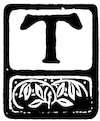
The State, War, and Navy departments are in one handsome four-storied granite building, with a frontage of 343 feet and a depth of 565 feet, situated on Pennsylvania Avenue, just west of the White House. The building is one of the handsomest in the city, being of the French Rennaissance, modified by American ideas. It has five hundred rooms and two miles of marble halls. In the west wing of the building the Secretary of War, Hon. Elihu Root, and General Miles, Commander of the Army, have handsome rooms for themselves and their many assistants. In the east wing can be found the Secretary of the Navy and rooms for the Admirals and their corps of helpers, and in the south wing the popular Secretary of State, the Hon. John Hay, with a comparatively small number of assistants.
STATE DEPARTMENT
In the department of the Secretary of State one sees the portraits of all the great men who have occupied the position of Secretary of State from the time of Washington down to the present occupant. Most people would be interested in the Huntington portraits of Grant, Sherman, and Sheridan, and in a copy of Gilbert Stuart’s portrait of Washington. In the State Department the most interesting are the portraits of 147Thomas Jefferson, 1789, Washington’s first term; Daniel Webster, 1841 and 1850; William H. Seward, 1861 and 1865; Elihu B. Washburne, 1869; Hamilton Fish, 1869; William M. Evarts, 1877; James G. Blaine, 1881 and 1889; and F. T. Frelinghuysen, 1881. A portrait of Lord Ashburton recalls the “Ashburton Treaty” of 1842, which defined the boundaries between the United States and the British Possessions in North America, and provided for the suppression of the slave-trade.
In the State Department are some of the most precious archives of the nation. Here can be found the original Declaration of Independence, the Constitution with the original signatures. Here can be seen the handwriting of most of the rulers of the world during the last hundred years affixed to treaties. One of the most unique of these is a treaty with Japan. The clear Japanese characters cover many pages, the royal signature is at the top, and you read from the bottom. The treaty was brought to Washington by two Japanese officials of high rank, who were charged with its safe delivery on penalty of their lives. One day they triumphantly entered the State Department bearing aloft on two bamboo poles a curiously constructed box, in which was the precious document. They were greatly relieved when they saw it safely deposited with the Secretary of State.
Here are the papers of Washington, Adams, and Jefferson; here are all the flags taken in all the wars in which the United States have engaged.

THE DECLARATION OF INDEPENDENCE
149The diplomatic rooms are of great beauty. Here Mr. Hay receives foreign ministers, consuls, and special messengers from foreign lands. Here at almost any time can be seen members of some of the thirty-five foreign embassies and legations. Many of these legations own and maintain handsome residences. A statement prepared by District Assessor Darneille shows that foreign governments own over $500,000 worth of real property in the District of Columbia, the estimated value of the land being $330,776, and the improvements $284,500. The French and Chinese governments have recently purchased valuable tracts of land, and will erect magnificent legation buildings which will increase the value of property held by foreign governments to nearly $1,000,000.
Probably the most characteristic feature of both political and social life in Washington is afforded by the presence of these legations. The members are more conspicuous here than at any other national capital in the world, except, possibly, Peking. Not to speak of Asiatic costumes and customs, European manners and morals, if we except those of England and Germany, which are much the same as our own, contrast most decidedly with their American correspondents. Most of the men are pure pagans—cynics and materialists. They look upon a profession of Christianity at its best as a mark of intellectual weakness, and at its worst of hypocrisy. Their own faces, however, do not indicate that they are exceptionally broad-minded or good and sincere men.
I have seen them in public receptions stand on one side and chatter in French, Spanish, or Italian, poking all sorts of fun at the hostess and her entertainment, and then, as she approached, rush to greet her with a 150mock homage which made my flesh creep. I have heard them declare that “all Americans are cads,” and the next instant prove the less sweeping proposition that “all cads are not Americans” by fulsome compliments to a distinguished Justice or Senator.
They, however, dispense a generous hospitality, and society, which has learned to estimate them by their own cynical standards, and is neither elated by their smiles nor annihilated by their snubs, cultivates them as best suits its own purpose.
The United States supports abroad thirty-eight embassies and legations, consisting of ministers, secretaries, and attachés, besides about one thousand consuls.
The Congressional Directory gives the personal history of Secretary Hay as follows:
John Hay, of the District of Columbia, Secretary of State (800 Sixteenth Street, Northwest), was born in Salem, Ind., October 8, 1838; graduated at Brown University in 1858, and studied law in Springfield, Ill.; was admitted to practise before the Supreme Court of Illinois in 1861, but immediately came to Washington as Assistant Secretary to President Lincoln, remaining with him until his death; acted also as his Adjutant and Aide-de-Camp, and served under Generals Hunter and Gillmore, and was brevetted Colonel; was appointed Secretary of Legation to France, March 22, 1865; retired March 18, 1867; appointed Secretary of Legation to Austria-Hungary, May 20, 1867, where he acted as chargé d’affaires until August 12, 1868; appointed Secretary of Legation to Spain June 28, 1869; retired October 1, 1870; then became an editorial writer on the New York Tribune, remaining five years, during seven months of which he was editor-in-chief; removed to Cleveland in 1875, and took an active part in the Presidential canvasses of 1876, 1880, and 1884; was appointed 151Assistant Secretary of State November 1, 1879; retired May 3, 1881; in that year he represented the United States at the International Sanitary Congress in Washington, of which he was president; was appointed Ambassador Extraordinary and Plenipotentiary to Great Britain March 19, 1897; retired September 19, 1898; appointed Secretary of State September 20, 1898.
THE WAR DEPARTMENT
In time of war or just following a war the most interesting department is that which is now occupied by the Hon. Elihu Root, of New York City. He is noted as a great corporation lawyer, and at first seemed to consider that the government of the United States could be run on the same principles as a great corporation—that is, “We shall do as we please in spite of public opinion.” But when he was severely brought to task several times he found his limitations.
In spite of this, the report of this department, dated December, 1901, shows difficult, conscientious, magnificent work performed by the War Department since the close of the war with Spain. Possibly the quiet prejudice which exists throughout the country against Mr. Root is largely the result of his treatment of General Miles. He does not like the old General, but the country does. Mr. Root may do many splendid things before the farmer, who only reads his weekly paper and to whose brain new things come slowly, forgives him for rudeness to a man of the people, whose merit has placed him at the head of the army. Any one who thinks he wins favor by calling General Miles “old fuss and feathers,” as some newspapers do, quite forgets that the American people like fuss and feathers. In spite of the above, Mr. Root is a great patriotic 152man, who, with mental ability enough to earn $100,000 per year, gives his country the benefit of his talents for what must seem to him the paltry sum of $8,000. As an organizer and great executive officer he has no superior now in the government employ. His last report shows the army located as follows:
DISTRIBUTION OF THE ARMY, SEPTEMBER 25, 1901
| COUNTRY | Officers | Enlisted men | Total |
|---|---|---|---|
| United States | 1,922 | 31,952 | 33,874 |
| Philippine Islands | 1,111 | 42,128 | 43,239 |
| Cuba | 166 | 4,748 | 4,914 |
| Porto Rico | 51 | 1,490 | 1,541 |
| Hawaiian Islands | 6 | 250 | 256 |
| China | 5 | 157 | 162 |
| Alaska | 17 | 510 | 527 |
|
|
|
|
|
| Total | 3,278 | 81,235 | 84,513 |
[In this table are included the 4,336 men of the Hospital Corps and the 25 officers and 815 men of the Porto Rico Provisional Regiment, leaving the strength of the Regular Army 3,253 officers and 76,084 enlisted men.
In addition there are also in the Philippines 172 volunteer surgeons, appointed under section 18 of the act of February 2, 1901, and 98 officers and 4,973 native scouts.]
Of course, now that the war in the Philippines is practically over, many more men have returned to the United States.
In reading Mr. Root’s report, nothing impresses one more than the splendid arrangement for the better education of army officers, not only as to military tactics, but for full intellectual equipment. Enlisted men who fit themselves by study, and retain good characters by passing complete civil service examination, become eligible to official positions among the regulars. Also officers of volunteer regiments by the same process 153become eligible to official positions in the regular army.
Mr. Root recommends that officers of the National Guard, or officers of former volunteers, be permitted in their vacations to study with regular army officers at West Point, and at the army post schools, so that we may never again be caught without competent officers for volunteer regiments. His report contains full accounts of the forming of the new government in Cuba, the Cuban Constitution, a full account of all the troubles in the Philippines, the wonderful work accomplished by the signal corps, the territorial and military divisions of the Philippines, and recommendations as to the proper currency and system of banking necessary in our Oriental possessions.
He recommends the purchase of the lands of the friars, who can not continue to hold their possession peacefully on account of the hostility of the people, whom they have grossly wronged.
His account of the very valuable unexplored timber lands of the islands, and the industries needed, make his report of great practical importance.
Men of the United States army have always been noted for their high standard of honor. The country believes in the integrity of the officers of the regular army. When any of them fail themselves and betray the trust imposed in them, it causes a shock to public feeling such as malfeasance in no other official position ever produces. To an unusually large extent they have been worthy of the trust reposed in them by a great nation.
The French are no more jealous of the good name 154of their army than are Americans. The person who takes away the good name of our brave, patriotic, self-sacrificing men, “who are a-doing and a-dying” in the Philippines, because of the evil actions of less than one-twentieth of their number, deserves public execration. The least we can do for our army is to give them their hard-earned laurels unspoiled.
XXVI
STATE, WAR, AND NAVY DEPARTMENTS (Continued)
THE NAVY DEPARTMENT
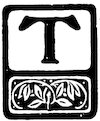
The offices of the Navy Department are situated in the same building as those of the War Department. The Secretary of the Navy occupies some of these handsome rooms. On their walls are the pictures of eighteen Secretaries, more than half the number of those who have occupied the high place being yet unrepresented. Secretary Long urges that the pictures of those yet waiting should be secured and given a place among these worthies. Down to Lincoln’s day the following persons occupied the place of Secretary of the Navy:
During Washington’s administration the Secretaries of the Navy were also Secretaries of War. Three men occupied the double position: Gen. Henry Knox, of Massachusetts; Timothy Pickering, of Massachusetts; and James McHenry, of Maryland. In John Adams’s administration the Navy was made a separate department. The Secretaries of the Navy since 1798 have been as follows: Benjamin Stoddert, of Maryland; Robert Smith, of Maryland; Jacob Crowninshield, of Massachusetts; Paul Hamilton, of South Carolina; William Jones, of Pennsylvania; Benjamin W. Crowninshield, of Massachusetts; Smith Thompson, of New York; Samuel L. Southard, of New Jersey; John Branch, of North Carolina; Levi Woodbury, of New 156Hampshire; Mahlon Dickerson, of New Jersey; James K. Paulding, of New York; George E. Badger, of North Carolina; Abel P. Upshur, of Virginia; David Henshaw, of Massachusetts; Thomas W. Gilmer, of Virginia; John Y. Mason, of Virginia; George Bancroft, of Massachusetts; William B. Preston, of Virginia; William A. Graham, of North Carolina; John P. Kennedy, of Maryland; James C. Dobbin, of North Carolina; Isaac Toucey, of Connecticut; Gideon Welles, of Connecticut.
Those later are well known. John D. Long, of Massachusetts, late Secretary, who ably administered the department during the war with Spain, has the following record in the Congressional Directory:
John Davis Long, of Massachusetts, Secretary of the Navy, was born in Buckfield, Oxford County, Me., October 27, 1838; received his preparatory education in the common school of his native town and the Hebron Academy, Maine; was graduated from Harvard in 1857; taught school two years in Westford Academy, Massachusetts; studied law at Harvard Law School and in private offices; was admitted to the bar, and has since practised; was a member of the Massachusetts Legislature in 1875, 1876, 1877, and 1878; was Speaker of the House during the last three years; was Lieutenant-Governor of his State in 1879, and Governor in 1880, 1881 and 1882; was elected to the Forty-eighth and reelected to the Forty-ninth and Fiftieth Congresses; was for several years on the Statehouse Construction Commission of his state; is senior member of the law firm of Long & Hemenway; was appointed and confirmed Secretary of the Navy March 5, 1897.
Secretary Long resigned in 1902. He was succeeded by William H. Moody, also of Massachusetts.
Now that the United States has become a world power, the navy is the right arm of the government in 157taking needed supplies to our distant colonies, and in protecting the property of America the world over.
The last annual report of the Secretary of the Navy showed that the United States has 252 regular naval vessels, 55 of special classes, besides as many more of inferior classes called standard vessels, such as steam-cutters, launches, cutters, etc. The Secretary’s report shows that $84,181,863.89 was appropriated for naval expenses, of which about seventeen millions yet remain unused. A large part of this has gone for new vessels. No part of the government is increasing so rapidly as the naval service. When all men are enlisted for which legal provision has been made, the naval and marine force will reach 34,810 men, or nearly 8,000 more than were in the army prior to the war with Spain. By the Congressional acts of 1864, 1868, and 1876 the navy was fixed not to exceed 7,000 men; the act of March 3, 1901, fixes the number at 25,000, but the necessities of the country have increased it beyond this.
The average citizen knows far less about the navy than about the army. Yet in time of war the army would be of little use without an efficient navy. In the Civil War no great progress was made in conquering the South till the blockade shut in the Southern States, preventing the export of cotton and the bringing in of the necessities of life.
In the late war with Spain, brilliant as was the service of the army, yet our navy carried away the greater laurels.
Secretary Long (since succeeded by Mr. Moody) says that the North Atlantic Squadron during the last 158fiscal year has been engaged in severe training in markmanship and evolutions, gaining facility in landing large guns, etc. The vessels of this squadron have extended their operations from Maine to Central America, particularly among the West Indies. The South Atlantic Squadron has assisted in commercial interests along the coast of South America. The European Squadron is now mostly in the Mediterranean Sea. The Pacific Squadron is scattered over such a great length of coast from Alaska to South America that the ships can not drill as a squadron, but are obliged to maneuver singly. The apprentice and training squadrons have been along the coast of Europe, but are now in the West Indies. These are afloat continually, except when stopped for repairs or supplies.
Possibly no condition in the war with Spain annoyed us so much as the use of powder which emitted smoke and thus showed just where our men were located, while they dealt with an unseen foe. The navy has taken up this matter, and is experimenting on the use and making of smokeless powder. We shall not be caught napping again. The navy is also practising wireless telegraphy; and while it can not be said to have adopted any of the half dozen systems now before the public, yet so far it has secured the best results from the Marconi system. This is used by Great Britain and Italy. Germany uses the Slaby system, France and Russia the Ducretet system. Secretary Long insists that none of them are a perfect success, as the difficulty of interference has not yet been entirely overcome. Wireless telegraphy has carried 159messages correctly between British war-ships 160 miles apart.
We have eight navy-yards, the principal one being at Brooklyn. The barracks for the marines in Washington are situated on Eighth Street, a short distance from the navy-yard; they cost $350,000. The navy-yard at Washington does not build large ships, but produces chains, anchors, ordnances, such as rifles, breechloading guns, etc., together with a long list of materials used in the navy.
Admiral Dewey is not only the pride of the navy but of the nation. He receives $13,000 per year. Rear-Admirals are paid $6,000; Commodores, $5,000.
Extensive and important improvements are to be made at the Annapolis Naval Academy. The country expects great proficiency in its army and navy, so no pains, no expense should be spared in the preparation of men of whom so much is required. A number of years ago Commodore Perry, speaking to the students of Antioch College (Ohio), told the following anecdote:
“Some twenty-five years ago I was carelessly walking on the levee of a city of the Adriatic. A short distance from the shore lay a man-of-war at anchor. I called an oarsman to me, and had him take me out to the vessel.”
“I saw no one on board, but by a rope hanging over the side I went on deck, hand over hand. I paid the oarsman, and told him to return for me in an hour.”
“I wandered over the beautiful ship, admiring its guns, its keeping, its admirable appointments, and its excellent management, shown by its condition. At the end of my hour I began to look for my oarsman. 160Just then I discovered a door on my right. I opened it, and in that room sat thirty-two boys. I had been there an hour and had not heard stir enough to show that so much as a bird was alive on that boat.”
“The youngest cadet came to the door and welcomed me with his cordial military salute. ‘Boy, where is your teacher?’ ‘Gone ashore, sir.’ ‘Do you keep absolute order while he is gone?’ ‘Certainly, sir.’
“Then passing to the front, I said to one of the older boys: ‘Young man, why do you act so differently from other boys? Are you afraid of being punished?’
“The cadet rose to his feet. ‘Sir,’ said he, ‘you see before you thirty-two cadets. We all expect to govern others in our future work. The first element of a good governor is self-government; sir, we are practising that.’”
The Commodore added: “That was twenty-five years ago. In the providence of God none of these young men have been called to eternity. I will now read you their names.” And the audience recognized in each man a name famous in the navies of Great Britain, Germany, France, or America.
Now those lads had not merely kept silent. The mastery of self made them victorious over temper, bad habits, and all depraved tastes. They were men in soul as well as in body. Truly, “He that ruleth his spirit is greater than he that taketh a city.”
XXVII
DEPARTMENT OF COMMERCE

At the present time of writing (February, 1903) the President has nominated to the head of the new Department of Commerce and Labor his secretary, George B. Cortelyou, and to be Commissioner of Corporations in that department James R. Garfield, who is a son of President Garfield, and a member of the Civil Service Commission. Of these appointments the New York Times expresses the general opinion of the press of the country:
The former appointment is significant chiefly because the new Secretary is intimately known to the President, and his policy in the department will probably represent the President’s views very closely. It can not in any special sense be regarded as a political appointment. The selection of Mr. Garfield is also conspicuously on the merits of the appointee, who is not an active politician, is an able lawyer, has been prominent and useful in the promotion of municipal reform and of the merit system in Ohio and as a Civil Service Commissioner. He has plenty of energy, a cool head, experience in public affairs, and may be expected to do all that can be done with the powers of his new office, the value of which must depend much on the character of the Commissioner and the support and direction of the Secretary and of the President.
Mr. Cortelyou has been so long engaged in recording other people’s thoughts as a secretary that it remains to be proved whether he possesses any opinions of his own. It is only the confidence of the country 162in President Roosevelt’s judgment of men whom he has been in a position to judge which prevents a general expression of surprise that our great “captains of industry” have been passed by in the selection of the first occupant of a position destined to be one of the most important in the Cabinet. Mr. Cortelyou, however, may do very well while we are playing at the department, but when we get down to business the portfolio of Commerce will have to be held by hands accustomed to weightier affairs than a stenographer’s note-book.
Mr. Garfield, having been called to deal with the great corporations, is confronted with the greatest problem of the times. He comes to his responsible place a comparatively unknown man. His name carries something of the halo which surrounds the name of his distinguished father, and for that reason he will start with the best wishes of his countrymen.
A feeling, however, prevails that if the government really meant to regulate trusts some heroic figure would have been called, like Joseph W. Folk, the brave circuit attorney, who, single-handed, is yet fighting the corruptionists of St. Louis, or Hovey C. Clark or D. Percy Jones, who sent the vile city conspirators of Minneapolis into prisons or exile, or some great corporation lawyer who has known the trusts from the inside, and now with change of heart could really work from the outside.
We hope for great things from Mr. Garfield. It may be well, like the Greeks, to keep crying, “Let us fight Philip!” whether we do much fighting or not.
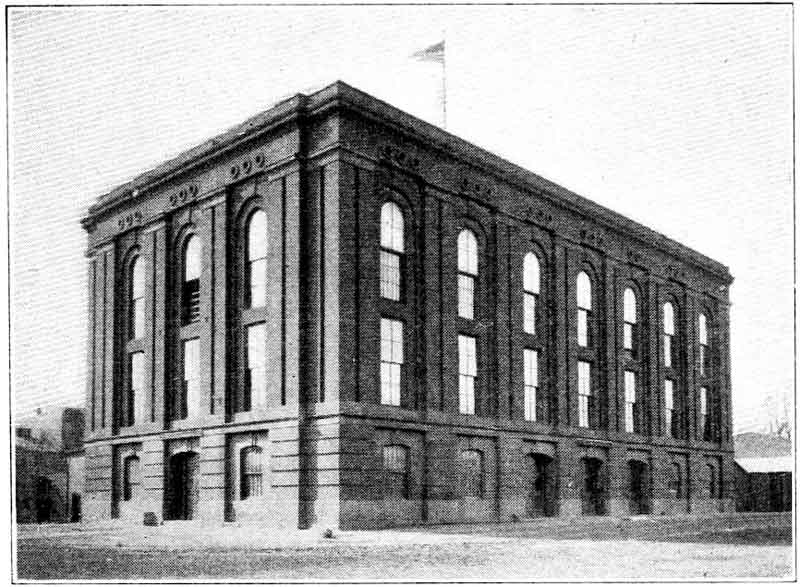
FISH COMMISSION BUILDING
The new department has a wide scope, and under efficient administration may exert a good deal of influence. It takes over practically the scientific and statistical work of the government, especially the Coast Survey, the Bureaus of Statistics from the Treasury and State Departments, and the Fish Commission, besides the Labor Bureau, the Immigration Bureau, and the enforcement of the Chinese Exclusion Act, and it has a new Bureau of Manufactures, with considerable duties. But undoubtedly the most important work it can perform is in the Bureau of Corporations, at the head of which Mr. Garfield is placed. The powers of this bureau extend to “diligent investigation into the organization, conduct, and management of any corporation, joint stock company, or corporate 164combination engaged in commerce among the several States and with foreign nations, excepting common carriers.” For this work the Commissioner is to have the “right to subpœna and compel the attendance and testimony of witnesses and the production of documentary evidence and to administer oaths.” One of the objects of this power is to enable the Commissioner to “gather such information and data as will enable the President of the United States to make recommendations to Congress for the regulation of” interstate and foreign commerce.
The Survey, Quarantine, Immigration, and Life-Saving bureaus are next in importance. Along the coast new harbors and coast lines are constantly being surveyed. When the quarantine officer boards your ship at the entrance of New York harbor, and scares you thoroughly lest he keep you in quarantine for the sake of some poor Italian baby in the steerage, he represents the Secretary of Commerce guarding a great nation from disease. When the immigrant lands he is interviewed by an agent of this department and his money changed into United States currency. Some of these agents recognize in the poor, frightened, lonely, and travel-stained foreigner a human being who needs a friendly word and helping hand, but others would scare even an American woman, who knows her own value, out of her wits; what, then, must be the effect of such men on the feelings of these strangers? Nearly a half million of foreigners a year enter our ports, and I have seen many of them treated like cattle.
The Life-Saving Bureau has charge of the continuous line of life-saving stations which guard our coasts. 165No braver men have ever lived than the devoted servants of the government who patrol our shores. There are 269 life-saving stations on the coasts of the Atlantic, the Pacific, and the Great Lakes, and one at the Ohio Falls, at Louisville, Ky. The men of these stations were present last year at 693 disasters and saved 3,377 lives. Our government pensions soldiers and sailors who are hired to destroy lives; surely greater pensions should be awarded these heroes of the main for saving life.
XXVIII
THE EXECUTIVE MANSION
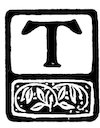
The President’s house is generally known as the White House. It is situated on Pennsylvania Avenue, one mile west of the Capitol building. It contains two lofty stories above ground and a basement.

MRS. ROOSEVELT
[Copyright by J. Schloss, New York]
It was modeled after the palace of the Duke of Leicester by the architect, James Hobon. The foundation was laid October 13, 1792, and the building was first occupied by President John Adams in the summer of 1800. It was partially burned by the British in 1814. The front is ornamented by Ionic columns and a projecting screen with three columns. The space between these two sets of columns constitutes a carriage-way, admitting to the main entrance.
The building contains thirty-one rooms. The whole has been refitted and almost rebuilt by the present occupant, President Theodore Roosevelt. Whether seen through the tracery of leafless trees or through the verdure of summer, the White House always looks cool, restful, and beautiful. The situation is not regarded 167as very healthful, but everything that modern science can do is now being employed to improve its sanitary condition.
All official duties will in time be attended to in the offices which are situated just west of the White House, so that the latter will be used only as the private residence of the President’s family.
Longfellow says:
How true this must be of the home of our Presidents! George Washington watched its building, and with his stately wife walked through it when it was finished, and was satisfied. They were about ready to leave the scene of action, but they did much to prepare the stage for the procession of Presidents which has followed.
For the last fifty years much complaint has been made that the house has not been large enough and that it was lacking in modern conveniences, but in spite of these objections no trouble has yet been experienced in finding men who were quite willing and even anxious to occupy it.
The walls are covered with portraits of the Presidents and their wives. All these portraits are interesting.
Mrs. John Adams bewailed the unfinished condition of the house, and used the now famous East Room for drying the family linen.
Of all the noble matrons who have graced the White House, Abigail Adams was the wisest and greatest. Her letters make her the Madam de Sévigné of our 168land. Her letter (written February, 1797) to her husband, who had just succeeded Washington, sounds like the voice of an oracle. We quote a portion: “You have this day to declare yourself head of a nation. ‘And now, O Lord, my God, thou hast made Thy servant ruler over the people; give unto him an understanding heart, that he may know how to go out and come in before this great people; that he may discern between good and bad. For who is able to judge this Thy so great a people?’ were the words of a royal sovereign, and not less applicable to him who is invested with the Chief Magistracy of a nation, tho he wear not a crown nor the robes of royalty. My thoughts and my meditations are with you, tho personally absent, and my petitions to heaven are that ‘the things which make for peace may not be hidden from your eyes.’ My feelings are not those of pride or ostentation upon this occasion. They are solemnized by a sense of the obligations, the important trusts, and numerous duties connected with it. That you may be enabled to discharge them with honor to yourself, with justice and impartiality to your country, and with satisfaction to this great people, shall be the daily prayer of yours—”
The first New-year’s reception at the White House was held by President Adams in 1801. Mrs. Adams kept up the stately, ceremonious customs established by President and Mrs. Washington. It was her son, John Quincy Adams, as Monroe’s Secretary of State, who was afterward to write out a definite code for almost every public ceremony. This code is largely in force at the present time.
169Martha Washington comes into history simply as the wife of a great man, but Abigail Adams was inherently a superior woman. Of all the women who occupied the White House she, only, gave the country a son who became a great man, and occupied the highest position in the gift of his country.
After John Adams came Thomas Jefferson, who had imbibed ultra-democratic ideas in the French Revolution. The ceremonies which prevailed in the Washington and Adams period were temporarily laid aside by this plain Virginia gentleman. He received the formal dames of the land in his riding-suit, covered with dust, riding-whip in hand, and with clanking spurs on his heels. His lovely daughter, Martha Jefferson Randolph, did her best to give the great house the air of a pleasant home. She succeeded well, and Jefferson’s accomplished daughter smoothed many of the asperities existing among public men who had lived through the Revolution and suffered from the jealousies, misunderstandings, and injustices of the times.
Mrs. Dolly Madison was probably the greatest social genius that has ever occupied the White House. The papers of that day declare “Mrs. Madison is the most popular person in the United States.”
Washington social life yet abounds in pleasing legends of her graceful, courteous kindness, not only to the gentlemen and ladies of the legations, but to the ignorant and socially unskilled who were among her worshipers. James Fenimore Cooper, in a private letter, gives a picture of the White House in the days of James Monroe:
170“The evening at the White House, or drawingroom, as it is sometimes pleasantly called, is, in fact, a collection of all classes of people who choose to go to the trouble and expense of appearing in dresses suited to an evening party. I am not sure that even dress is very much regarded, for I certainly saw a good many there in boots.... Squeezing through a crowd, we achieved a passage to a part of the room where Mrs. Monroe was standing, surrounded by a bevy of female friends. After making our bow here, we sought the President. The latter had posted himself at the top of the room, where he remained most of the evening shaking hands with all who approached. Near him stood the Secretaries and a great number of the most distinguished men of the nation. Beside these, one meets here a great variety of people in other conditions of life. I have known a cartman to leave his cart in the street and go into the reception-room to shake hands with the President. He offended the good taste of all present, because it was not thought decent that a laborer should come in a dirty dress on such an occasion; but while he made a mistake in this particular, he proved how well he understood the difference between government and society.”
The Monroes came to the White House after it had been restored after the burning in 1814. It was barely furnished at that time, and contained but few conveniences for entertaining. Mrs. Monroe brought furniture directly from Paris, which she used for the East Room. This has been frequently upholstered, and constitutes part of the handsome furniture at the present time.
171John Quincy Adams, the fifth President of the United States, was one of the greatest men this country has yet produced. Repellant manners injured his usefulness and obscured the luster of his great name. It is said he could grant a request and thereby lose a friend, while Clay could say “No” so kindly as to win a friend.
The life of Louisa Catherine Adams, wife of John Quincy Adams, is one of surprising interest. She was the daughter of Joshua Johnson, of Maryland, was educated and married in London, accompanied her husband to the many different courts to which he was minister, and brought to the White House a larger social experience than any of her predecessors.
She reestablished the stately ceremonials of the Washington period, which greatly resembled the customs of the English Court. Among the great men who frequented her levees were Webster, Clay, Calhoun, and Andrew Jackson (the latter always in buff pants and vest with blue broadcloth coat and gilt buttons).
Then came strenuous Andrew Jackson as President, with only the memory of his beloved Rachel, who had passed away before he became Chief Magistrate. She had been buried in the beautiful dress prepared for her husband’s inauguration. A private letter yet extant gives this picture of the days when Emily Donelson (wife of the President’s nephew) was the chief lady of the land:
“The large parlor was scantily furnished; there was light from the chandelier, and a blazing fire in the grate; four or five ladies sewing around it; Mrs. 172Donelson, Mrs. Andrew Jackson, Jr., Mrs. Edward Livingston, and others. Five or six children were playing about, regardless of documents or work-baskets. At the farther end of the room sat the President in an arm-chair, wearing a loose coat, and smoking a long reed pipe, with bowl of red clay—combining the dignity of the patriarch, monarch, and Indian chief. Just behind him was Edward Livingstone, the Secretary of State, reading a despatch from the French Minister for Foreign Affairs. The ladies glance admiringly now and then at the President, who listens, waving his pipe toward the children when they become too boisterous.”
Jefferson, Jackson, Van Buren, Tyler, and Arthur were widowers when they entered the White House.
Van Buren was the Talleyrand of American politics. Secretary of State under Jackson, he had won the heart of his chief, whose influence secured him the Presidency. His son’s wife, Angelica Singleton Van Buren, gracefully conducted the ceremonies of the White House during the Van Buren administration.
General William Henry Harrison became President in 1841. His wife never came to Washington. He died one month after his inauguration. It was declared that he was worried to death by the fierce office-seekers of the time. His was the first funeral from the White House.
John Tyler, who succeeded Harrison, was a polished, cultured gentleman from Virginia. His was the literary period, when Washington Irving, Edward Everett, and John Howard Payne received foreign appointments.
173His first wife, Letitia Christian Tyler, made her first public appearance at the White House at the marriage of her daughter. She died in 1842. Eight months before Tyler’s term expired he was married to Miss Julia Gardner, of New York. The festivities of the time began with her wedding reception, and lasted till the end of that administration.
James K. Polk, of Tennessee, became President in 1845. He was rather small physically, and so spare or thin that the tailor had to make his clothing too large to help out his appearance.
Mrs. Polk much resembled in manners Martha Washington. She dressed well and gave frequent levees, as receptions were then called. She received her guests sitting, with the President standing by her chair. A gentleman once said to her, “Madam, there is a wo pronounced against you in the Scriptures: ‘Wo unto you when all men shall speak well of you.’”
In 1849 Gen. Zachariah Taylor was inaugurated as the twelfth President of the United States. He lived sixteen months and five days after he became President. His wife, Margaret Taylor, was an invalid, but his daughter, “Miss Betty” as she was familiarly called, made the White House attractive.
Millard Fillmore, of New York, elected Vice-President, became President July 10, 1852. He was an eminent lawyer from Buffalo. His manners were marked with great simplicity and affability. Mrs. Abigail Fillmore was one of the few literary women who have presided in the White House. She drew to her side the literary men and women of the nation, and 174her receptions resembled the French salons in their literary tone.
Franklin Pierce, of New Hampshire, became President in 1853. He was a shy, modest man, who could not cope with the strong men of the South, who were even then preparing for secession. He was six feet high. His coal-black hair and eyes gave him a most striking appearance. His wife, Mrs. Jane Appleton Pierce, was not a strong woman physically, but managed to discharge the duties of the White House with great dignity.
James Buchanan, of Pennsylvania, became the fifteenth President of the United States in 1857. The throes of the Civil War began in his administration. He was a politician, not a statesman, and tried to suit both sides, but ended by suiting neither. But the duties of the White House were never more elegantly administered than while Miss Harriet Lane, the niece of President Buchanan, presided. There are white-haired diplomats living to-day who compare everything now done in the White House with Miss Lane’s graceful administration. She had been much with her uncle when he was minister at foreign courts, and they both had many friends among the scholarly men of the legations, so that the White House became the rendezvous of that class more than at any other period. She received the Prince of Wales and his suite most gracefully, omitting nothing which would add to the dignity of the occasion.
Jefferson Davis said: “The White House under the administration of Buchanan approached more nearer to my idea of a Republican Court than the President’s 175house had ever done since the days of Washington.”
Abraham Lincoln, “the noblest Roman of them all,” became President March 8, 1861. He is the greatest American that has yet lived. Washington was the result of English influences, but Lincoln is the highest representative of republican influences that has yet governed this nation. A giant in stature, being six feet and four inches in height, his grand physique was but a type of the great heart and strong intellect of a great man. He was called to preside over this nation at the most critical time in its history.
Mrs. Mary Todd Lincoln found it difficult to keep up the ceremonious customs of the White House with a husband who followed no conventionalities, but believed the Executive Mansion should be opened at all times to every citizen. Mrs. Lincoln devoted much time to the soldiers in the hospitals, and the White House conservatory was kept stripped of flowers for the benefit of the wounded and sick.
Andrew Johnson, of Tennessee, came to the Presidency on the death of Mr. Lincoln in 1865. He was not wise in his judgments, and had he been more amenable to men of experience in governmental affairs his life in Washington would have been much easier. Time is revealing more and more that his troubles were in a great degree the result of the jealousies and disappointments of politicians. The sufferings of the people of the White House during the days of President Johnson’s trials can never be estimated.
Martha Patterson, widow of Senator Patterson, of Tennessee, and daughter of the President, administered 176the social duties of the Executive Mansion during Johnson’s administration, Mrs. Johnson being an invalid. Mrs. Patterson said: “We are plain people from the mountains of Tennessee, called here for a short time by a national calamity. I trust too much will not be expected of us.” But sad as her heart must have been in those days, she filled the duties of her high place to the satisfaction of even the exacting great dames of the period. Andrew Johnson’s lovely family are yet fondly remembered and deeply loved by many who enjoyed the friendship of “the plain people from Tennessee.”
General U. S. Grant, of Illinois, became President in 1869, and his administration was one long carnival of social duties and enjoyments.
Mrs. Julia Dent Grant and her accomplished daughter, Nellie, led the society of the Capitol through eight brilliant years. The White House was entirely refurnished, and the festivities were on a scale of magnificence never equaled there before or since.
In 1877 Rutherford B. Hayes, of Ohio, became President. He came in at a difficult and dangerous time, but his administration brought peace and tranquility to the nation.
Mrs. Lucy Webb Hayes was noted for her plain dressing and strict temperance principles, which she enforced even in the White House, much to the disgust of the legations and to the delight of the Christian people of the country.
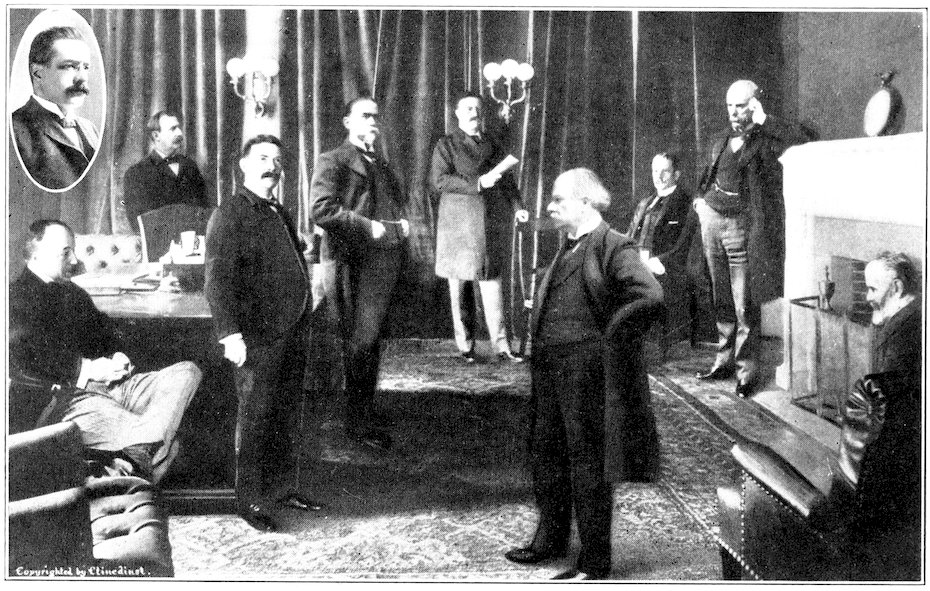
Cortelyou Payne Moody Hay Roosevelt Hitchcock Root Shaw Wilson
Knox
THE PRESIDENT AND CABINET
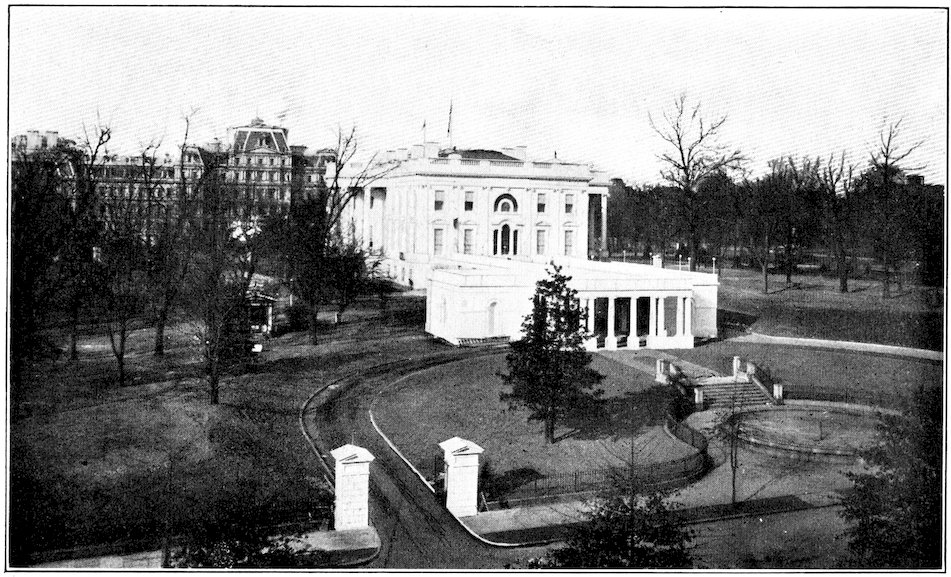
Photo by Clinedinst
NEW ENTRANCE TO THE WHITE HOUSE
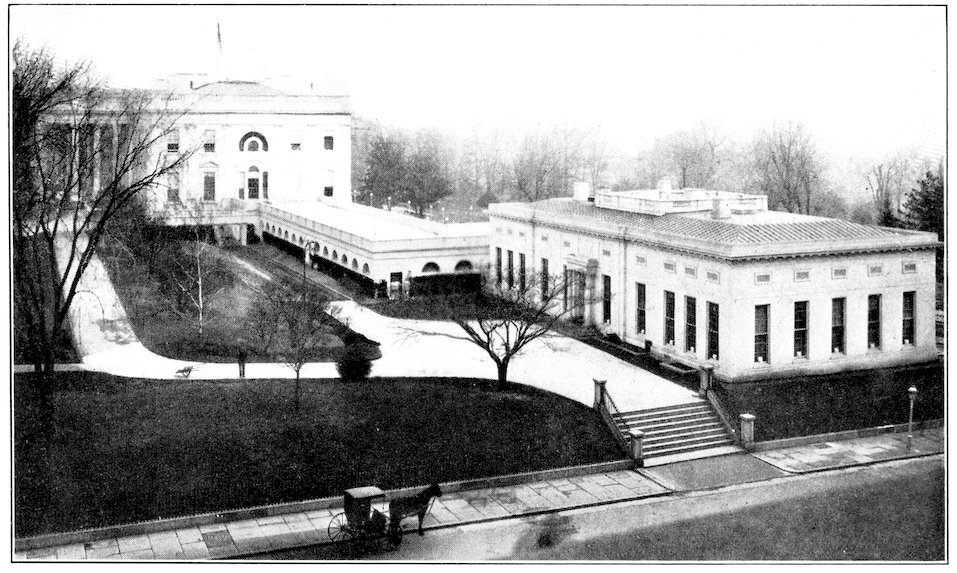
Photo by Clinedinst
NEW WING OF THE WHITE HOUSE

Photo by Clinedinst
SOUTH FRONT OF THE WHITE HOUSE

Photo by Clinedinst
NORTH FRONT OF THE WHITE HOUSE

Copyright by Clinedinst, 1903
NEW GRAND CORRIDOR—WHITE HOUSE
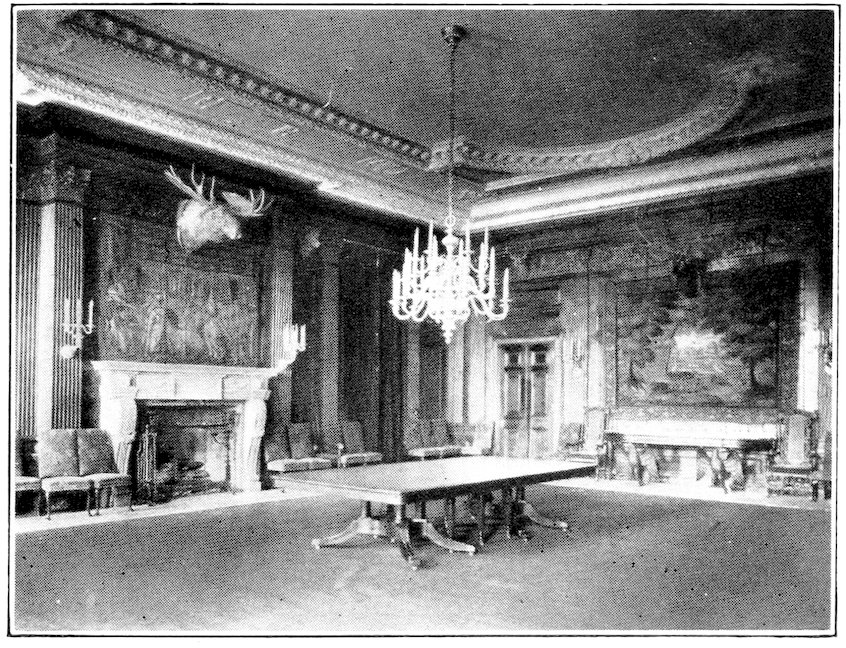
Copyright by Clinedinst, 1903
NEW STATE DINING-ROOM—WHITE HOUSE
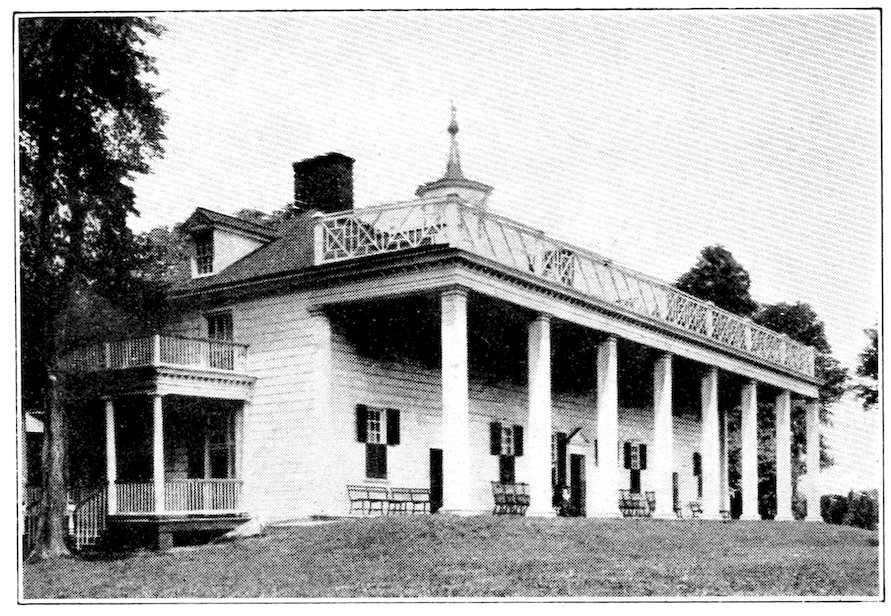
Photo by Clinedinst
MOUNT VERNON—FROM SOUTH LAWN
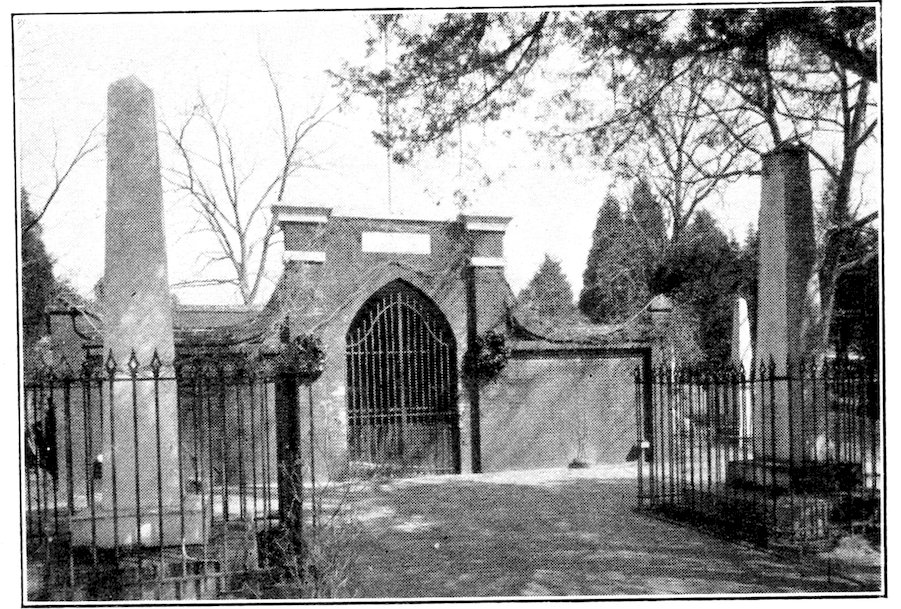
Photo by Clinedinst
TOMB OF WASHINGTON—MOUNT VERNON

Photo by Clinedinst
HOME OF GENERAL LEE
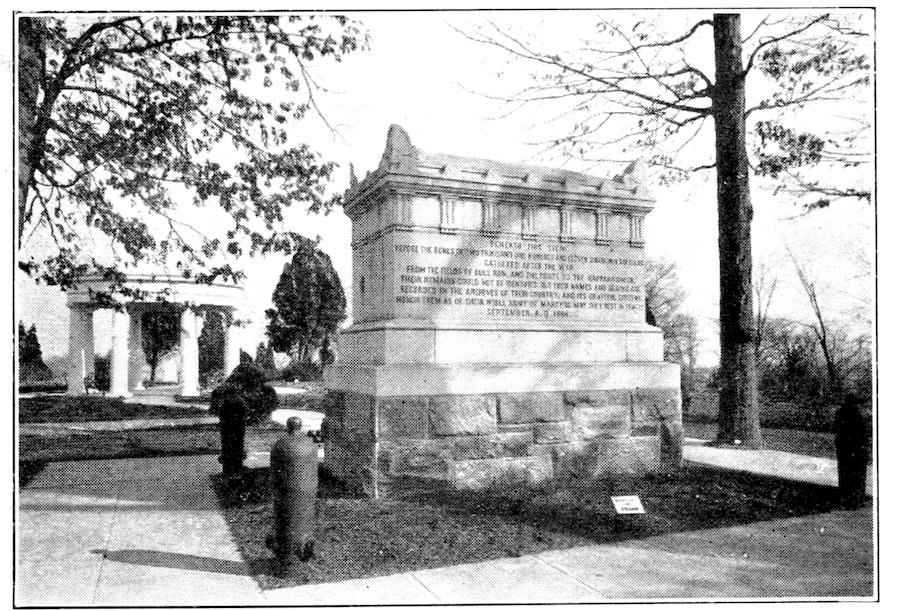
Photo by Clinedinst
MONUMENT TO THE UNKNOWN DEAD, ARLINGTON NATIONAL CEMETERY
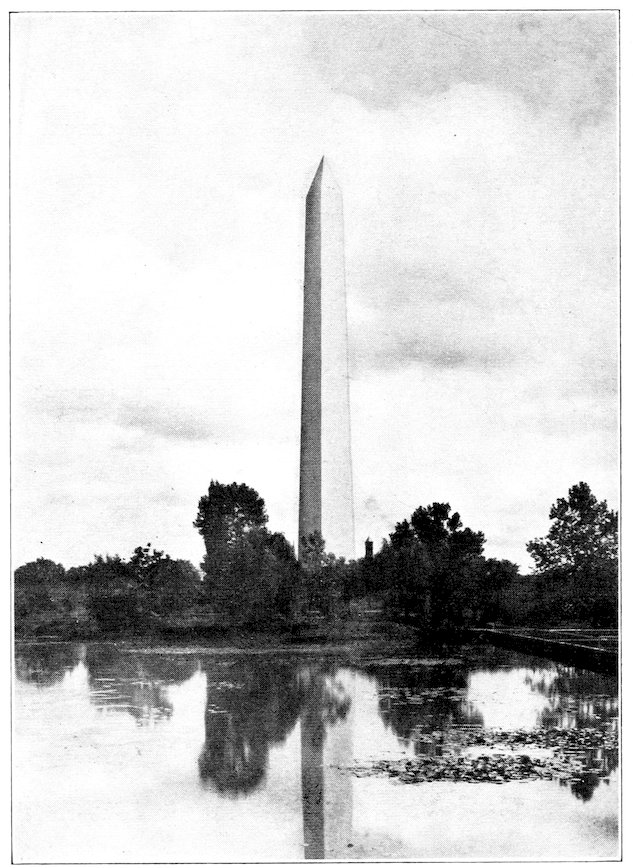
Photo by Clinedinst
THE WASHINGTON MONUMENT
177James A. Garfield, of Ohio, became President in 1881. His life in the White House from March to September, 1881, scarcely gave time to show what the social life in Washington would have been had he lived to complete his term. His assassination cast a gloom over the social life for a full year after Chester A. Arthur became the Executive. He served to the end of the term, in 1885. President Arthur being a widower, the hostess of the White House during his term was his accomplished sister, Mrs. Mary Arthur McElroy.
Grover Cleveland, of New York, became President in 1885. The Republican party had been in power for twenty-five years, and when Mr. Cleveland was elected the change of officers was as great as in the days of Andrew Jackson. Cleveland was a man of the highest integrity and the most unfaltering courage, so that the change proved beneficial to the entire land.
Miss Rose Elizabeth Cleveland, sister of the President, presided at the White House until his marriage, June 2, 1886, to Miss Frances Folsom, who became, next to Dolly Madison, the most popular woman who ever entertained in the historic old house.
In March, 1889, Benjamin Harrison became Chief Magistrate. The first Mrs. Harrison was a woman experienced in Washington society, and was much loved by a very large circle.
In 1893 Grover Cleveland again became President, and in 1897 William McKinley, probably the best-loved man by the people of any President since the days of Mr. Lincoln.
Mrs. McKinley, altho an invalid, with the assistance of her nieces, kept up the reputation and social festivities of the White House.
178Theodore Roosevelt became President of the United States in September, 1901.
What a goodly company they are, our Presidents and their families! No scenes of unseemly revelry or base debauchery such as so often disgrace the courts of Europe mar the reputation of this stately company.
“Righteousness exalteth a nation, but sin is a disgrace to any people.”
XXIX
INTERESTS IN WASHINGTON WHICH CAN NOT HERE BE FULLY DESCRIBED
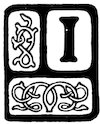
In the third story of the Congressional Library strangers can find two papier-maché models which are of great interest. One represents the City of Washington in 1902, the other represents the Washington of the future.
Congress has called the great engineers of the War Department and four of the leading artists of the United States as a committee on civic improvement for the capital city. The artists are: Mr. Daniel H. Burnham, of Chicago; Mr. John C. Olmstead, the noted landscape artist; Mr. Charles F. McKim, and Mr. Augustus St. Gaudens.
By the plans the public buildings of the future will be arranged around Capitol Square (which has now two sides occupied by private residences), and will then extend on both sides the mall, or flat, low-lying district 1,600 feet in width, extending from the Capitol building to the Potomac, a distance of one and a half miles, and inclosing the Washington monument. The buildings are all to be of white marble, harmonious in design, and with a standard sky-line. The latter feature is not pleasing in effect in the model. The Pennsylvania Railroad will give up the location of the present depot, and join with the B. & O. in a union depot near the site occupied by the latter.
180At the front of Capitol Hill will be Union Square, where the statues of war heroes will be grouped. The streets from that point to the Washington monument will have four rows of trees on each side. A great theater, gymnasium, lakes, fountains, and baths will remind one of ancient Rome. A magnificent memorial to Abraham Lincoln will be placed south of the Washington monument. Obelisks and arches which have been used as memorials from the earliest ages will form part of the ornamentation. People smile over this wonderful design, but if from now on all public work is done under this intelligent supervision even one hundred years may make the dream of these artists a glorious reality. Not a lamp-post will go up in this new day, not a business sign will be displayed without the approval of this art commission.
Designs for private houses as well as business houses must be made to harmonize with the landscape and other buildings which already exist. “May we all be here to see.”
Among the buildings and objects of interest which can not here be fully described, nor their histories elaborated, is the Ben Butler building on Capitol Square, where President Arthur made his home while the White House was being repaired.
There is also the old Capitol or Capitol Square (now numbered 21, 23, 25), which was used by Congress after the British had destroyed the Capitol in 1814. These buildings were used as a military prison during the Civil War, and here Wirtz, of Andersonville prison memory, was executed. In one of them died John C. Calhoun.

CHARLOTTE CORDAY
(One of the paintings in the Corcoran Art Gallery)
182The Washington monument, nearly six hundred feet high, is said to be the highest monument in the world. It was erected in memory of George Washington. This grand structure is of pure white marble. From the top there is a magnificent view of the surrounding country. The monument, however, has suffered from the disintegrating effects of the weather, and from the ruthless hands of the relic-hunters. The majestic appearance of the monument grows upon the beholder, and its pearly whiteness reminds him of the character of Washington, which grows fairer in the mellowing light of history.
Arlington Cemetery should be visited by the pilgrim to Washington. There sleep many of the sacred dead of the nation, and there is the home of Robert E. Lee, where he was called to decide between his country as a whole or his native state.
Around Lafayette Square, which faces the White House, history, poetry, romance, and chivalry have twined an immortal wreath. Every monument commemorates a hero. Here, too, is the old private residence of Dolly Madison, the old home of the British Embassy, where Owen Meredith wrote “Lucile”; also the Webster home, where once lived the French Embassy; and St. John’s Episcopal Church, where many Presidents have worshiped. Here Webster, Sumner, and Slidell lived at different periods. The old Decatur house stands on this square. The Admiral had a window cut through, so that he could signal the President in the White House. They missed the telephone. On this square lived Diaz, of Mexico; here Don Cameron and Blaine each lived in 183the same house, now occupied by Senator Hanna. On the north side is the handsome residence of Secretary of State John Hay.
Georgetown, named after George III. of England, is much older than Washington City. The stories of its former grandeur and its distinctively Southern tone make it a quaint object of interest. Its most interesting literary shrine is the home of Mrs. E. D. E. N. Southworth, the novelist, who wrote one novel for each year of her long life.
The Corcoran Art Gallery, on Seventeenth Street, extending from New York Avenue to E Street, just southwest of the White House, has many objects of interest both in painting and sculpture.
No traveler should fail to visit Mount Vernon, the home of George and Martha Washington. The house was built in 1783 by Lawrence, half-brother of General Washington. The rooms seem small and cramped, according to our modern ideas, but they were the stage upon which lived and loved two names of sacred memory. The buildings are in the custody of the ladies of the Mount Vernon Association, and the care of each room is in charge of some one State.
The United States Naval Observatory, north of Georgetown, will interest lovers of astronomy, while every square, circle, and triangle of Washington City has some reminder of those whose heroic deeds, spiritual devotion, or literary and scientific achievement have beautified, ennobled, and glorified the world, and made it more beautiful because of their lives.

